new posts in all blogs
Viewing: Blog Posts Tagged with: Tips, Most Recent at Top [Help]
Results 76 - 100 of 379
How to use this Page
You are viewing the most recent posts tagged with the words: Tips in the JacketFlap blog reader. What is a tag? Think of a tag as a keyword or category label. Tags can both help you find posts on JacketFlap.com as well as provide an easy way for you to "remember" and classify posts for later recall. Try adding a tag yourself by clicking "Add a tag" below a post's header. Scroll down through the list of Recent Posts in the left column and click on a post title that sounds interesting. You can view all posts from a specific blog by clicking the Blog name in the right column, or you can click a 'More Posts from this Blog' link in any individual post.
.jpeg?picon=3498)
By: Cait,
on 5/24/2014
Blog:
Cait's Write...
(
Login to Add to MyJacketFlap)
JacketFlap tags:
tips,
running,
videos,
goals,
training,
track,
exercises,
races,
workouts,
race tips,
Add a tag
Everyone wants to run faster, right? Part of getting faster is of course doing the shorter repeats; one must build that explosive power of course. BUT, there’s another part to getting faster and it’s training your BRAIN and nervous system to respond at a quicker rate.
A runner can’t utilize that explosive power to run faster without the nerve and synapse networks first being created to ‘tell’ your foot to move faster off the ground. Isn’t science and the brain cool?
The neuromuscular part of training isn’t something every runner is aware of, but if you’re not addressing it you can run all the 200′s in the world and not really be tapping into your full potential. I’ve written a few articles about the neuromuscular training and how it relates to runners:
* The Multi-Level Approach to Getting Faster
* Work on Getting Faster in Tri-Fecta Form
One of the exercises I mention are ‘Quick Feet Box Taps’. I got an email from someone who wasn’t quite sure if they were doing them right so I decided to make a little video.
You can also find it on my Instagram page. Start with a set of 15-30 seconds and see how many taps you can get. REMEMBER it’s QUALITY over quantity. If you’re getting slopping you’re going to start reinforcing bad habits and that will defeat the purpose. Work up to two sets and do the 3 times a week…preferably as part of your dynamic warm-up routine before workouts or immediately following the workout. It can be fun to watch yourself improve with more taps every week…you know us runners and that competitive spirit.  But again, quality over quantity…so if you have to start slow that’s what you need to do!
But again, quality over quantity…so if you have to start slow that’s what you need to do!
What, you love my shirt too?! Well, thanks…it’s my Ezzere Runner Face Tee! 
Happy Saturday my runner friends. Get those feet firing off the ground, coupling neuromuscular training and speedwork, and watch your PR’s get faster! 

.jpeg?picon=3498)
By: Cait,
on 5/22/2014
Blog:
Cait's Write...
(
Login to Add to MyJacketFlap)
JacketFlap tags:
track,
races,
race tips,
tips,
marathon,
running,
motivation,
goals,
training,
Add a tag
For runners, finding that perfect taper and method to peak right sure can be difficult! Which sounds kinda crazy because taking the taper at face value, one could think, “Well, I just need to cut back. I’ve done all the work, so let’s just coast on until race day and wind up with fresh as daisy legs!”
WRONG. Any runner can tell you tapering is a bit of a beast. Sometimes your legs do feel an extra bounce, other times they start feeling like dead weights and you start to freak out, “What the heck, why am I trucking bricks?!”

Some runners even build a little superstition around it, “The worse my legs feel on the warm-up the better they feel in the race.’ Not going to lie, I’ve experienced that one and can back the logic.
So let’s talk taper. We’ll even start from the most basic of basics up.
What is a taper? Training is done in phases, working backwards from the date of your big race. The closer you draw to your race, the more the goal of workouts shift from ‘building fitness’ to ‘sharpening’ and ‘honing’. A week before your race you’re not going to be able to increase fitness anymore, that work’s been done, so it’s a matter of maintaining fitness and then reducing the volume so your legs feel fresh come race day. [Tapering can be done anywhere from 1-3 weeks before your race, depending on distance and all that good stuff.]
Logistics: Runners who are tapering will cut their overall miles back, the volume of workouts decrease, and you’ll see workouts like 200′s, 400′s, or for marathoners, maybe a few longer repeats (ie: miles) at race pace. Just getting the wheels turning.

Common Mistakes:
1) Not decreasing enough:
If you’ve been training at 110 miles per week and your ‘taper’ is cutting down to 100 miles per week that’s really not going to leave you feeling all that fresh, right? Same goes with pushing your ‘taper’ workouts too much; grinding out your best 6xmile four days before your race day isn’t doing you any favors.
2) Decreasing too much: So the runners who think, oh I’ll just go from 110 miles down to 20 and I’ll feel GOLDEN! Wrong-zo. The body has a crazy way of adapting to us crazy runners and doing what we do. Dramatic shifts, the body doesn’t like that at all. Go too far from one extreme to the other and your body will be like, “wtf is going on?!” In the case of the runner above, they’ll actually be feeling sluggish because their body is used to much more stress. It actually NEEDS more miles to feel better. Crazy, huh? But kinda cool too.
Bottom line: There’s no perfect amount for everyone, it comes back to what works for you and your race distance. But a nice rule is that when tapering your mileage should be reduced by 20-25% of your average training volume.
3) Pre-Race Day Off: Many runners like to take the day before their race completely off. I would like to argue that, they should instead take the day TWO days prior to their race off. Why? Sometimes your legs will feel stale after a complete rest day, it’s better to do a short shake-out run and strides the day before to ‘bust out the rust and creaks.’ You still get a day off, but going into the race you’re not ‘creaky’. This is also why if you’re running a night race, lots of runners like to do a short (10-15min) shake-out run that morning.
4) No Speed-work: Taper logic might seem like you shouldn’t do anything hard…go into the whole week totally fresh and rested. Refer back to number 2 and realize that once your body has become accustomed to a certain degree of work (ie: stress) it needs the stimulus. Going 4-plus days without any faster turn-over will leave your legs feeling sluggish and slow. For races 10k and below, a good workout to do three days before your race is 8x200m with 200meter recovery. Any way you slice it, you still want some ‘sharp’ quality sessions leading up to your race.
Tapering is a tricky science, that’s why I firmly believe runners should have a coach they trust to do the sciencey planning stuff. Then the runner isn’t left ‘thinking’ all this out. Planning and wondering “is this workout right? Is this what I should do?” can get in the way of your workouts, and it can be liberating to give that ‘stress’ to someone else who KNOWS their stuff.
That way, runners can just turn their brain off and stick to what they love to do…run. Hey, running the workouts are hard enough, no reason to add more thinking than necessary to the mix. 
———-
More posts on RACE TIPS
More posts on PRE-RACE CONFIDENCE
Make sure you’re looking GOOD doing all that training…Ezzere’s got your back there! 

———

.jpeg?picon=3498)
By: Cait,
on 5/20/2014
Blog:
Cait's Write...
(
Login to Add to MyJacketFlap)
JacketFlap tags:
tips,
running,
Cartoons,
motivation,
goals,
training,
exercises,
stretching,
core,
Add a tag
Good things can come in threes, but then again plenty of awesome things come in twos and fours. Runners have two legs, four laps make that perfect mile…though do those four laps REALLY feel all that perfect when doing mile repeats??  Brain: “FOUR laps, let’s call a mile one lap!” Juuust kidding.
Brain: “FOUR laps, let’s call a mile one lap!” Juuust kidding.
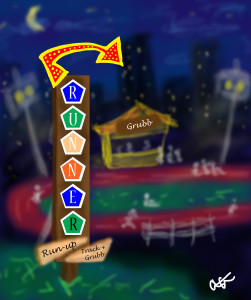
The cool place all runners get to hang out.
Well good things can come in any number but today you runners are getting a three-pack. Here are some Training Tips in Triple for your Tuesday:
1) Runners Who Skip: Runners can become a little too linear for their own good. Example is looking only at their running workouts to improve and taking that little metaphor to the literal: running is a repetitive, linear, single-plane action. If you don’t work your body in a variety of ways it gets tight. Tight will equal restrictive, bring you injuries and impede your speed.
Offset that by doing things OTHER than running: core work, flexibility, and agility drills. Move in the horizontal, even do some skipping to ‘dilly around’ with your neuromuscular thought patterns. Your brain actually has to be ‘played with’…it gets stuck in a pace/pattern run with just running. So as crazy as it sounds doing things like skipping, backwards skips, crazy feet drills give it a little ‘reset’ and make it more ‘sharp’ when you come back to running steps. Oh, and those fast feet, like chili pepper jump rope things, those will help your neuromuscular training too…get those feet conditioned to FIRE off the ground faster = faster speed and sprinting.
2) Be Quiet I’m Sleeping: Sleeping should really be an Olympic sports…or at least one of everyone’s favorite past times. Want to have a sleep-off? Just kidding. But seriously, for the runner in training you should guard your zzzz’s with just as much ferocity as you do lane one during repeats.
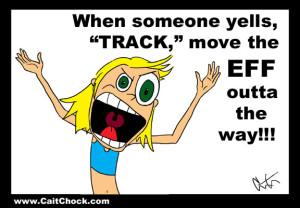
Sleep is where you body does the vast majority of its repair, sleep is a restorative process. But it’s really the deep, REM sleep that you need. That’s why people who are light sleepers or wake up multiple times in the night can still feel so flipping tired later even if they’ve been in bed 8-12 hours…they’re not sleeping continuously or getting a deep enough sleep. Sleep issues are really tricky, I’ve got them, so if you do have trouble sleeping already do the basics: make it as dark as possible, don’t even have the light from your phone on, try a fan for white noise, relax and power-down before bedtime to put your brain in sleep-mode, and from there you may need to seek out some other options and work with a doctor.
For those of you are are lucky enough to NOT have a problem sleeping but just skimp on the hours because you’re busy, I’ll say this: 1) you’re only hurting yourself and your training 2) you’re taking sleeping for granted…trust me, lots of us insomniacs would die to get some extra hours!! haha…take advantage of them and aim for 8-9 hours a night for optimal performance.
3) Laugh: Wow…you think I’m a nutzo for just saying that. I’ll go on record and rattle off just why laughing is a training necessity:
* Running is hard: yea, it’s painful. But misery loves company and laughter. Those slow jogs between intervals is when you and your training buddies should be making fart jokes.
* De-serious: It’s easy to be too serious in life and apply that to training. Ironically getting ‘too’ focused on your workouts and training has a funny way of making you eventually start slowing down. It’s because of pressure and it’ll also rob you of the passion…both recipe for disasters. Make sure you’re excited and focused on your goals…but still ENJOY it. So laugh.
* Running gets awkward: Need I say more? Runners will have to fart, burp, poo, chafe, adjust a wedgie etc. mid-run. It’s just funny, get over embarrassment and do it. Make a joke about it.
There ya go. Take this Tuesday and make it a point to improve your running in three ways. Heck, please apply the laughter part to your overall life too!
———-
Related Read: My latest article on RunBlogRun: Running the ‘Extras’: Think outside the miles and improve your performance
Another of my new articles on RunBlogRun: Young Runners and the Issues of Volume and Intensity
Need a laugh? My CARTOONS are here for you! 
———-


By: Kathy Temean,
on 5/19/2014
Blog:
Writing and Illustrating
(
Login to Add to MyJacketFlap)
JacketFlap tags:
Writing Tips,
Internet,
Technology,
Advice,
article,
authors and illustrators,
Jody Staton,
Writing: Goodgle Maps,
Tips,
Add a tag
Guest Blogger: Johanna Bilbo Staton
Map Program = Magic Carpet
You’re writing about a particular place, but your description feels flat. What you want, instead, is for your reader to feel as though they are actually “there.” Time for a field trip? But maybe that’s not possible—it would take time and money, lots of both if the location is far away from you.
I’ve discovered another solution: the map program on my computer and in particular the satellite and street level views. Granted, they will not give you the sounds and smells of a place, nor how it will look in a variety of seasons and weathers. Yet a map program can provide you with a surprisingly useful amount of detail.
Here are two examples of how I have used this resource:
Those computer maps are likely less than ten years old. How much use could they be for a story set almost five hundred years ago? Answer: quite a bit. Part of my story is set in Quarley, a tiny village of thatched-roof cottages in Hampshire, England. I know for a fact that they are at least forty years old. Four hundred plus? Maybe not. But in that relatively flat countryside there is one high spot, Quarley Hill, and it would have been there at the time of my story. I’ve seen it in person, but before that, I had seen it on Google Maps, and had written about it:
By mutual agreement, we angled toward Quarley Hill, a bump in the landscape that was our one local claim to any sort of height. Trotting up and down it, Frydd declared, was the best way for Bonesy to regain his mountain legs.
Later in the same manuscript, the main character and her companion are riding west toward Wales. Obviously there’s a big difference between modern roads in the UK and those of Tudor England. But I compared a British Ordnance Survey Historical Map of ancient Britain (also a useful resource) with a modern Ordnance Survey map of the same area, and so had a good idea of the probable route my riders took. Going to the area on Google Maps and going to the street view gave me this detail:
The Salisbury Plain had been flat. Now we rode through rolling countryside. We were in a valley, with slopes rising up on either side of the road.
Chances are I may find the program useful in a possible future project to be set in medieval Scotland—find a modern road through a wild area (plenty of those in the Highlands!) , and see what there is to see.
(However, Google seems to have changed its map program slightly since I did that. Instead of being able to move a little person-on-foot icon to a road, the program shows me a selection of street-level pictures. But this ought to be helpful also.)
I’ve also used the map program capabilities in my freelance copyediting, but in a way that would be just as useful for my writing. The text in question was from a contemporary novel set in New York City, in a scene that was set on the roof of a major theatrical landmark, and concerning what the characters could see from there. From the map program, I was able to determine which of the details given were, in fact, visible from that location, and which ones were iffy or impossible.
Writer’s block about your setting? Call up your map program, tell it where you want to go, let it get you down on the ground, and see what inspires you.
Filed under:
Advice,
article,
authors and illustrators,
Internet,
Technology,
Tips,
Writing Tips Tagged:
Jody Staton,
Writing: Goodgle Maps 

A headline caught my eye recently: “Be a better runner without running.” *About face* Now I respect the news outlet that ran the article but the snark in me can’t resist thinking, “This kind of thing belongs in Runner’s World next to the column ‘How to get faster in your sleep!’”
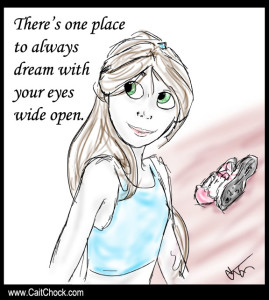
Track dreams…but you still need to actually run on the track too. ;)
In seriousness though, yes there are ways to improve your running and get faster that aren’t running. HOWEVER, these are thought of
like ‘extras’…you still have to run.
Everybody and every BODY handles a different amount of volume and quality. Not everyone can log 110 miles per week, with a hard speed session, endurance session, and long run in a 7 day cycle. Some people can run 170 miles per week just fine, others get hurt going over 50…waaah-waahh it’s not fair but that’s how it is.
Know your body. Know your limits and maximize them. Just because you can’t RUN more than 50 miles per week does not necessarily mean you can’t beat the runner doing twice your volume. Enter QUALITY.
Here are a few quick tips on maximizing your training if you’re a runner who is a little more ‘fragile’: (ie: improving your running with running less and doing other stuff)
* Extend Your ‘Week’: By this I’m talking about viewing your training cycle as 9-10 days rather than the standard 7. Meb Keflezighi has talked about doing this as he’s aged, and many masters runners work off of a longer training week. This allows for more recovery between hard workouts.
* Rule of 10 and Baby Steps: If you’re injury-prone already you know you need to BABY your body a bit. Only increase your miles by 10% each week. Then be honest with what your mileage ‘max’ is. If you start getting extra creaking when you kiss 50, stick there and supplement with extra cross training instead of miles.
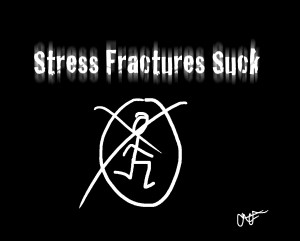
* Swap Your Easy Runs: Plan your miles for the week and ‘save’ them for your hard workouts and long runs. Those are the days that will give you the most bang for your mileage buck. Cross train on the easy days; to be honest the benefit of easy days are mostly just getting the steady cardio in…you can do that running or cross training. The former is just a lot easier on your body.
* Seek Soft Surfaces: The pavement is harder on your body than the trails, track, and treadmill. Seek these softer surfaces. Also know that lots of downhill running exponentially increases the impact on your joints, so steer clear of huge, sharp downhills.
* Get More Efficient: Most injuries are a result of a weakness and muscle imbalance. Fix those and you’ll be running more efficient and most likely be able to handle running more. All the more reason to fix your form, get a stronger core, and solve why you might be stuck in a vicious cycle of injuries.
* Fitter With Cross Training: Ideally you want to be doing your hard workouts as running because this will translate the best for racing but you’d be amazed by how fit you can stay with cross training workouts. So if you have to do some of your ‘running’ workouts on the cross trainer don’t freak out and remember it all comes back to effort. Go hard, get your heart rate up, feel the burn in your legs and lungs, and you’re getting work done.
Not EVERYTHING that will get you faster comes from running more miles. Think outside the box, learn your body, and maximize your potential.
Though the snark in me still has to end with this: “but, duh, you still have to do some running.” 
——-
More articles on cross training and workout ideas!
More articles on injuries, recovering, and how to prevent them!


By: Kathy Temean,
on 5/9/2014
Blog:
Writing and Illustrating
(
Login to Add to MyJacketFlap)
JacketFlap tags:
Interview,
Tips,
inspiration,
Advice,
Process,
Children's Illustrator,
illustrating,
demystify,
Illustrator's Saturday,
Denise Clemmensen,
Add a tag

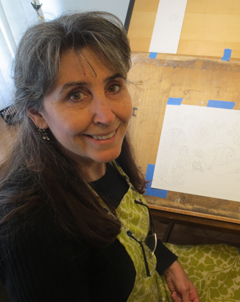 Denise Clemmensen has been an artist from the moment she tore open her first box of crayons. In fact she became a drawing maniac. She drew on everything. Her parents finally bought her a little table where her coloring passion could be unleashed a little less destructively. Being a very shy child during her school years, she kept her passion for art quite. Though, one time in fifth grade, while helping out on the class history mural, her fifth-grade teacher noticed she could draw. For the rest of the week her teacher asked her to work on the mural while the rest of the class studied math.
Denise Clemmensen has been an artist from the moment she tore open her first box of crayons. In fact she became a drawing maniac. She drew on everything. Her parents finally bought her a little table where her coloring passion could be unleashed a little less destructively. Being a very shy child during her school years, she kept her passion for art quite. Though, one time in fifth grade, while helping out on the class history mural, her fifth-grade teacher noticed she could draw. For the rest of the week her teacher asked her to work on the mural while the rest of the class studied math.
Artistically, Denise has worn many hats; she has done both fine and graphic art, and has even made handmade rag dolls. But, throughout her artistic journey, her love of children’s books has never wavered.
In 2011, Denise illustrated the award-wining picture book, “Just Because.” This is her first picture book and in 2013 it won the prestigious Gelett Burgess Children’s Book Award. And, in 2012 it won the Young Voices Award, The Mom’s Choice Gold Award, and was named a Book of the Year by Creative Child Magazine.
She has illustrated artwork for various traditional and Internet-based educational publishers, and produces illustrations and character designs for many private clients.
Denise lives in the San Fernando Valley, a suburb of Los Angeles, with her husband, and for the time being, her grown kids, grandkids, two dogs, two cats, and three fish!
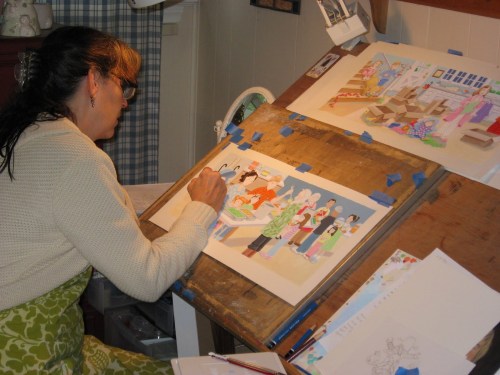
Here is Denise explaining her process:

Sketch of the kids. Sometimes when I start a project I do character sketches. That way I can get to know and shape the different characters and their personalities. Here are three children from “Just Because” and their favorite toys.
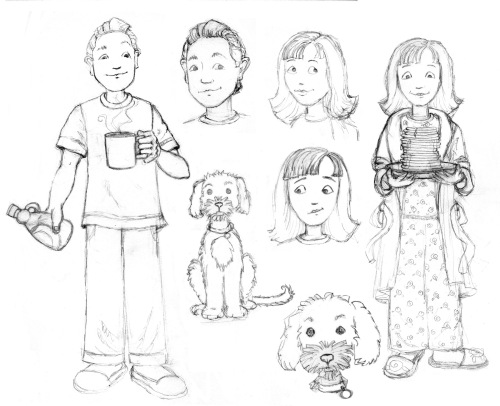
Sketches of Mom and Dad. This is the rest of the family getting ready for breakfast. The family even has a fluffy dog.
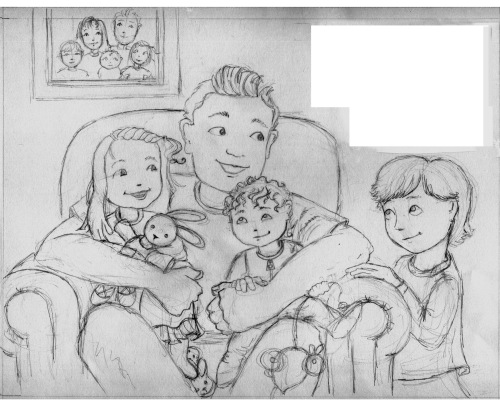
Sketch of page 9-Dad holding the kids in a chair. Here is the finished sketch of the kids sitting on their dad’s lap that was used in the book “Just Because.” The white square is where the text will go. I always put in the text, so I can make sure that the words and the picture fit together well.
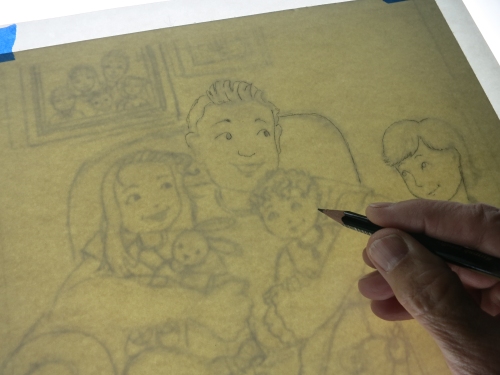
Light box. Once the sketch is finalized I transfer it on to watercolor paper by using a light box. My favorite watercolor paper is Canson 140lb cold press.

The start of painting. I use either acrylic matt or gouache paints.

The second picture of the painting. I paint in layers so I can build up the colors and add depth.

The final painting. After I finish painting I go in with colored pencils to help bring out the details.
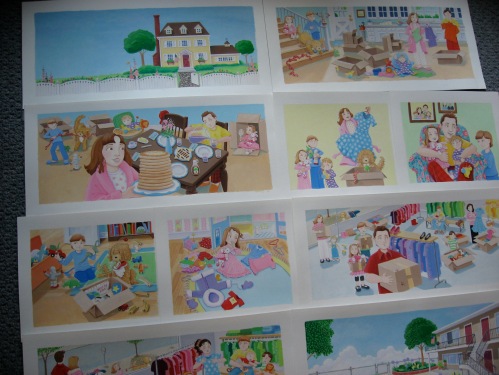
All the paintings together. When I do a project that has more then one illustration I like to work on all the paintings at the same time. I rotate my time on each one so I can keep a constant color palette.
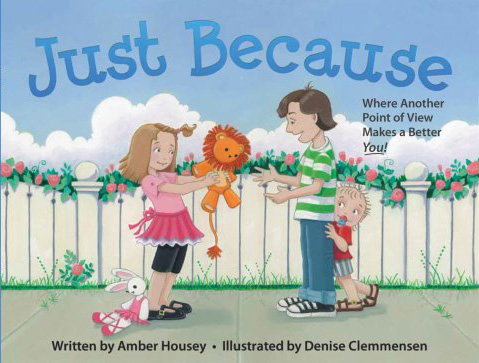
How long have you been interested in art?
All my life, I even remember as a small child having a drawing table in my bedroom. 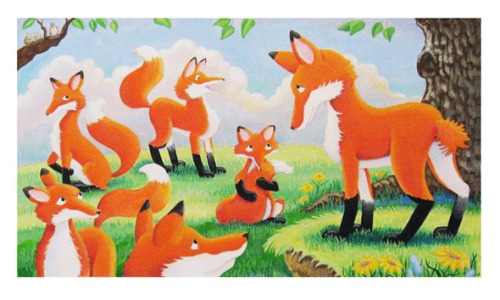
Did you study art in college?
Yes, I was a Fine Art major all through college.
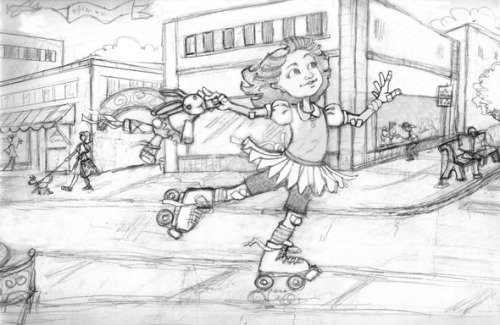

Did you study to be a librarian?
No, being a librarian is something I just kind of fell in to. I was a stay-at-home mom for many years and when the time came that I needed to go back into the work force, a friend of mine, who was a library aide with the Los Angeles School District, suggested I might like it.
Before I was a mom I had been a graphic artist, but with the coming of the computer age, I no longer possessed the skills needed to compete in that market. So I have been a library aide for 14 years now and I really enjoy the job and the kids. Plus I am surrounded by children’s literature, how great is that?

What was the first painting or illustration that you did for money?
In my early twenties I tried selling my artwork at local craft shows. I did a bunch of pen and ink fantasy drawings. I think the first one I sold was of a baby unicorn.
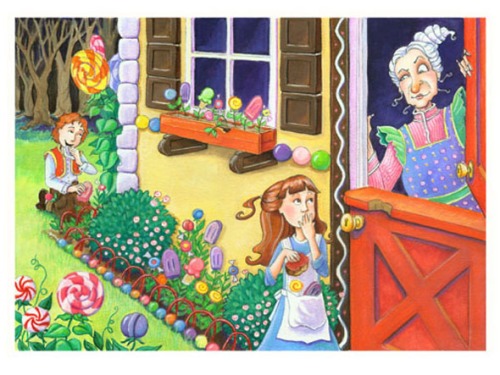
What type of job did you do right after you graduated?
I never quite graduated from college. You know that old story. I was only taking a semester off, I meant to go back and finish, I only had a year left, but life got in the way. My first art job was as a graphic artist. When I took graphic art in college I really didn’t care for it, my heart was really in the fine arts. That quickly changed, I learned so much more on the job and it turned out that I really enjoyed being a graphic artist. By the way, I learned everything old school: T-squares, triangles, French curves, mechanical pens, rubdown type, and so on. It was right before the onset of computers.
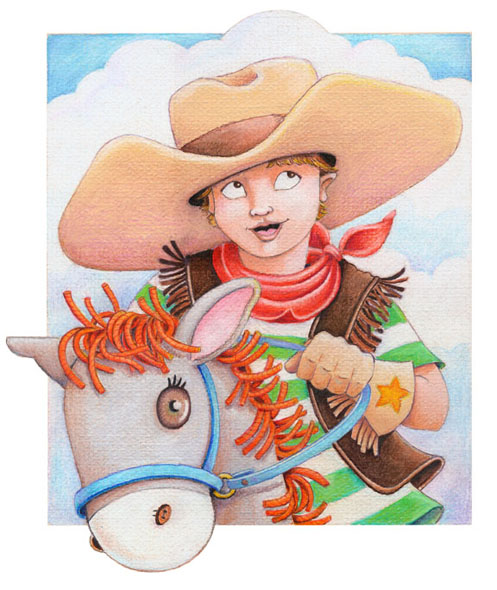
What do you think influenced your artistic style?
I have always loved animated movies. I hate to admit it, but I think Disney had a lot of influence on me, and so did getting married and having a family. Before I met my husband, my artwork was always a little sad and dark.
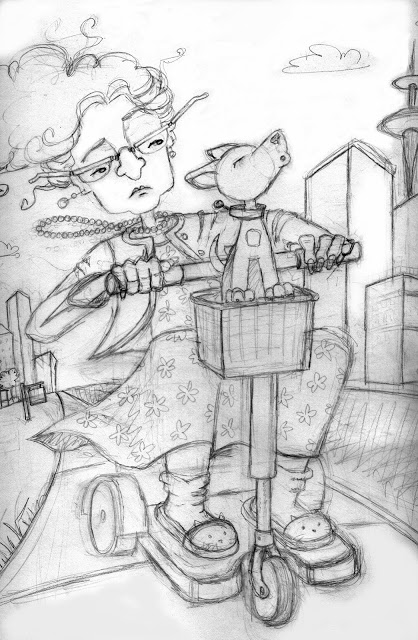
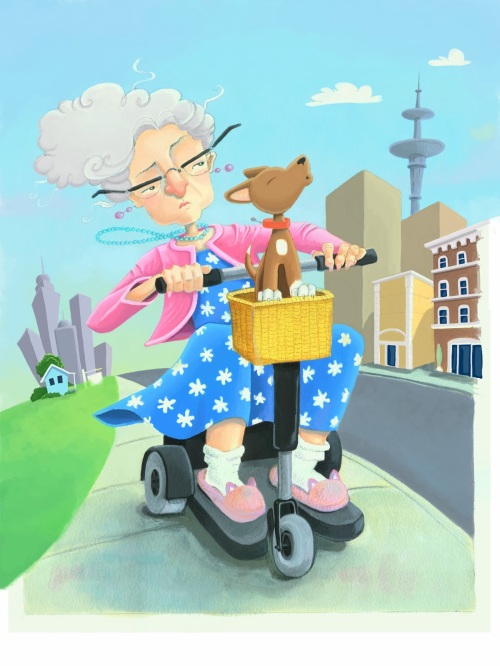 When did you do your the first illustration for children?
When did you do your the first illustration for children?
While I was a stay-at-home mom, I still did some freelance illustration jobs here and there. I was hired to do some black and white line drawings for a science book for children.
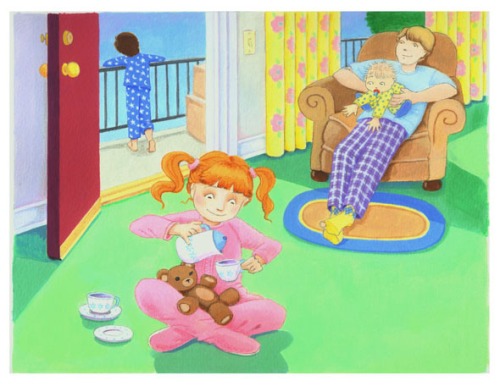
How did that come about?
A friend of a friend knew the gentleman who was writing the book and knew that he was looking for someone to do some of the artwork. They introduced us.
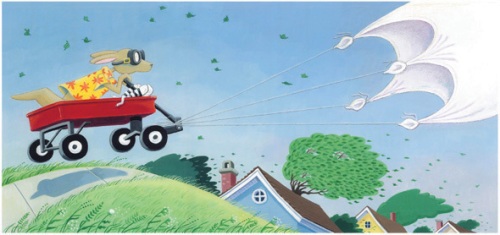
When did you decide you wanted to illustrate a children’s book?
I think this is something I have always wanted to do, but in my early twenties I took an extension class, How to illustrate Children’s Books, through Cal State Northridge, and that cemented it.

How long did it take you to get your first picture book contract?
It took a long time to get the first book contract and then there was a fourteen year gap between “Aides: first facts for kids” and “Just Because.”
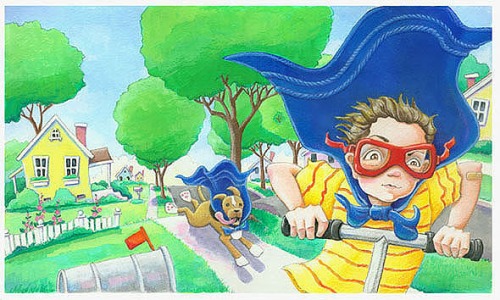
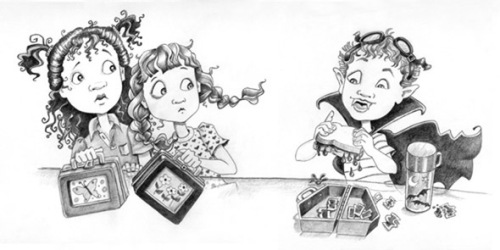
What was your first book that you illustrated?
My first book was an educational book “Aides: first Facts for kids” written by Linda Schwartz. All of the illustrations where done in pen and ink.
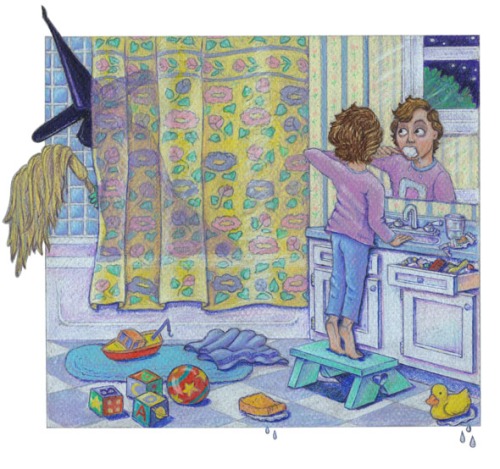
Was it a self-published book
No, the book was published by The Learning Works, Inc., a small publisher in Santa Barbara, Ca.
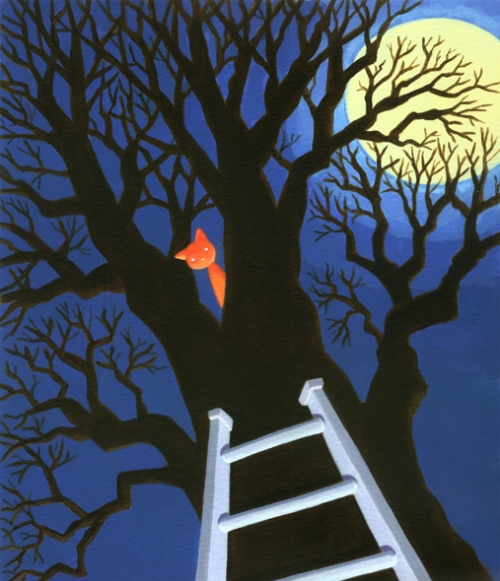
Are you open to illustrating a self-published book?
Yes, the second book I illustrated “Just Because” written by Amber Housey was self-published.
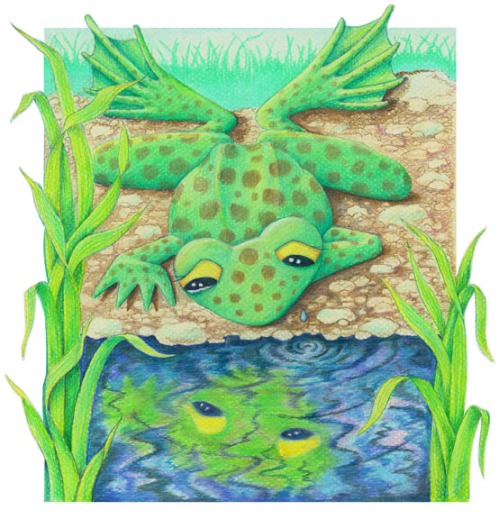
How did you get the contract to illustrate JUST BECAUSE?
The author found my illustrations through a website that I belong to. She then contacted the self-publishing house she was using and they in turn contacted me.
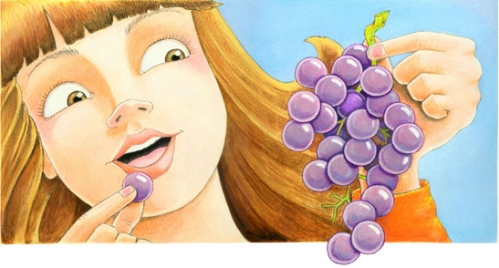
Have you worked with educational publishers?
Yes, I just recently did four illustrations that will be included in an educational textbook and a few years ago I did two eight-page booklets written for English learners.
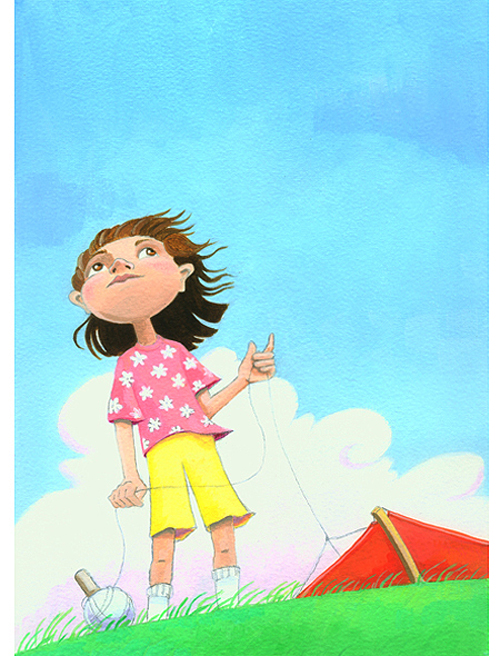
How many children’s books have you illustrated?
To date, I have done four books, but only one is a traditional 32-page picture book.
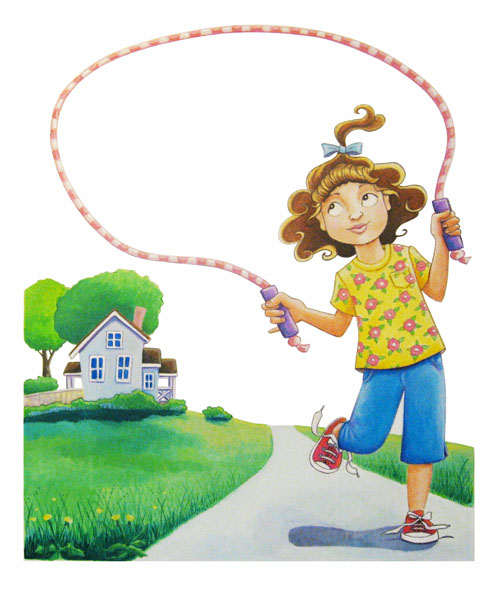
Do you have any desire to write and illustrate your own book?
Yes, I have a few stories that I have been working on.
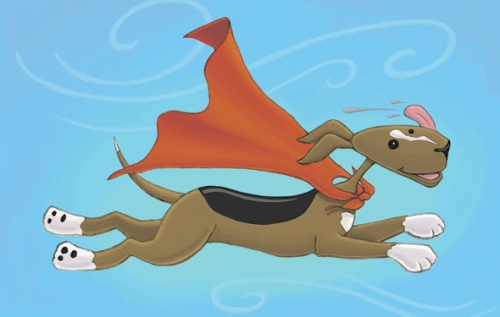
Have you done any illustrating for children’s magazines?
No, not yet, but I am hopeful.
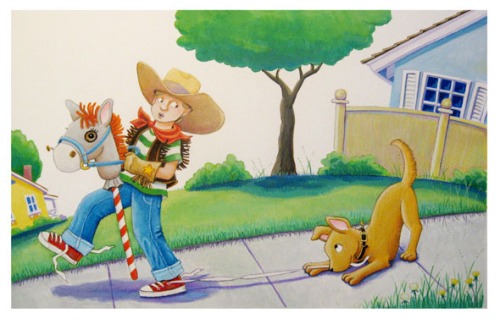
Do you have an agent to represent you? If so how did you connect? If not, would you like one?
No not at this time. I did submit my portfolio to an agency once. They were very polite and helpful but were not interested. I might try again because having an agent does allow more doors to be open for your work to be seen. Though, I believe even if one does have an agent they should still self-promote.
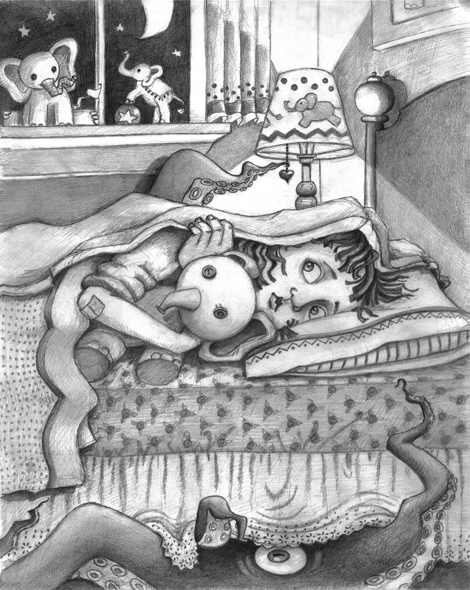
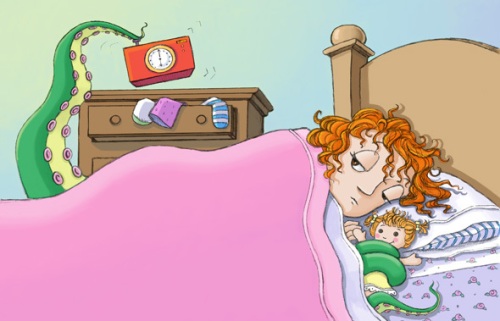
What types of things do you do to find illustration work?
I have a website and a blog. I also advertise on a Children’s illustrators website and I send out post cards to publishers and editors. SCBWI has a spot on their website for illustrators to show their work. Last year, I also ran an ad in the Directory of Illustration.
 What is your favorite medium to use?
What is your favorite medium to use?
I would have to say pen and ink, and colored pencil.

Has that changed over time?
Yes for me there has not been much demand these days for just pen and ink and colored pencil is very time consuming. In order to save time I started to use acrylic paints with the colored pencil (though I am not sure if any time is actually saved) and I have just recently started to explore painting in Photoshop.
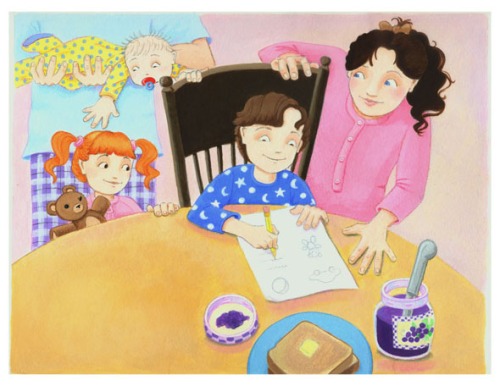
Do you have a studio in your house?
For years my studio was the kitchen table, then I was able to set up a drawing table in the corner of my family room. Two years ago, one of my children moved out, and I was able to turn that room into my art studio.
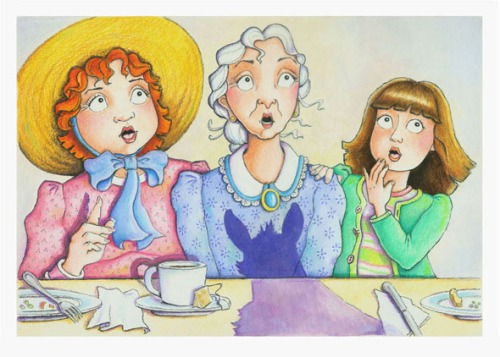
What is the one thing in your studio that you could not live without?
My eraser.
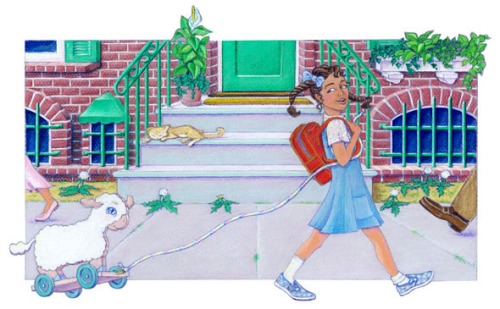
Do you try to spend a specific amount of time working on your craft?
Yes, I look at it as another job. If I am not working on a project for someone I am working on something for self-promotion. I work everyday.
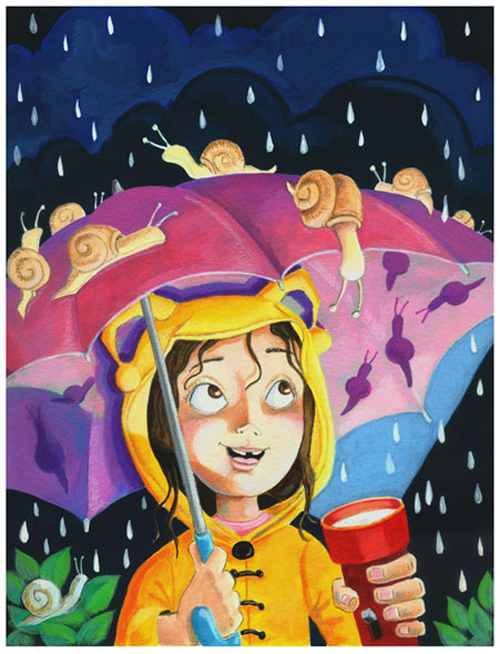
Do you take pictures or do any types of research before you start a project?
Yes, I have taken lots of photos and I do online and book research. Whenever I go on vacation somewhere I always end up taking photos of all the different plants I come across. Sometimes at home when I am working on a sketch, I will physically put myself in the character’s pose to see how it looks and feels. I even have a small mirror next to my drawing table to reference hands or facial expressions.
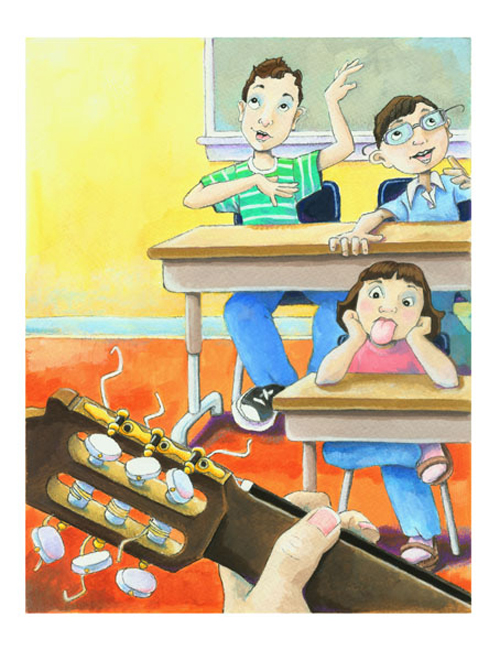
Do you think the Internet has opened doors for you?
Most definitely, it allows me to show my portfolio to more perspective clients than I could before.
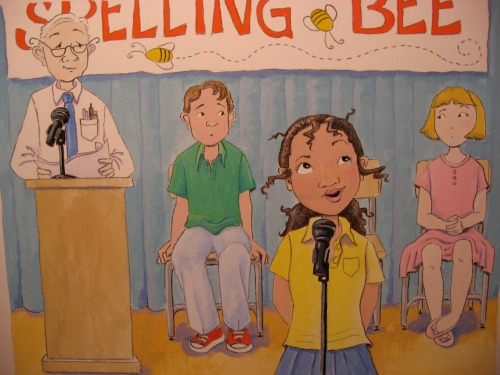
Do you use Photoshop with your illustrations?
I have just started playing with Photoshop. I bought a Wacom Tablet a little while back and I have been experimenting with it ever since. It’s fun and I have put a few of my digital works up on my website and blog.
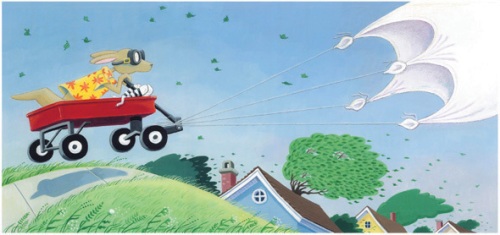
Do you own or have you used a Graphic Drawing Tablet in your illustrating?
I have just started using the Wacom tablet and for right now, I have just been scanning in my pencil sketches into Photoshop.
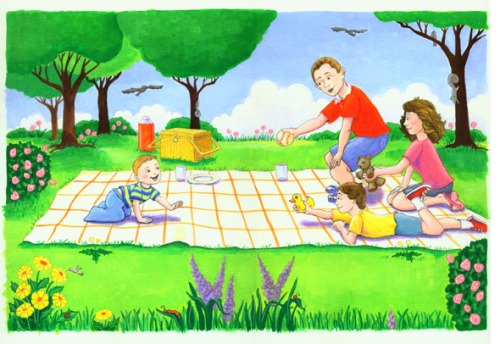
Do you have any career dreams that you want to fulfill?
I would like to illustrate a 32-page picture book from a traditional publisher and I also think it would be great fun to do the cover and inside drawings for a children’s chapter book.
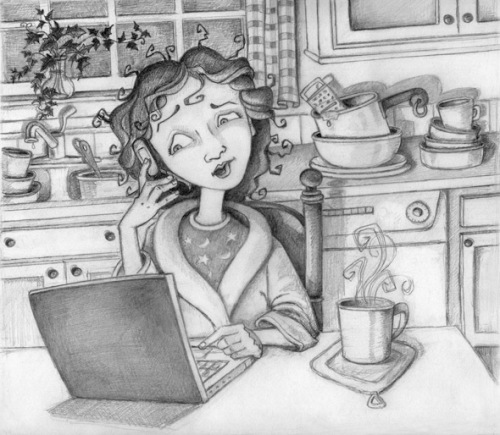
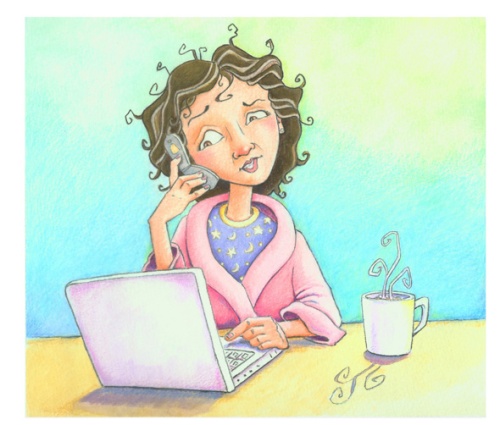
What are you working on now?
At the moment, besides learning Photoshop and the Wacom tablet, I am busy finishing up some new illustration to add to my portfolio.
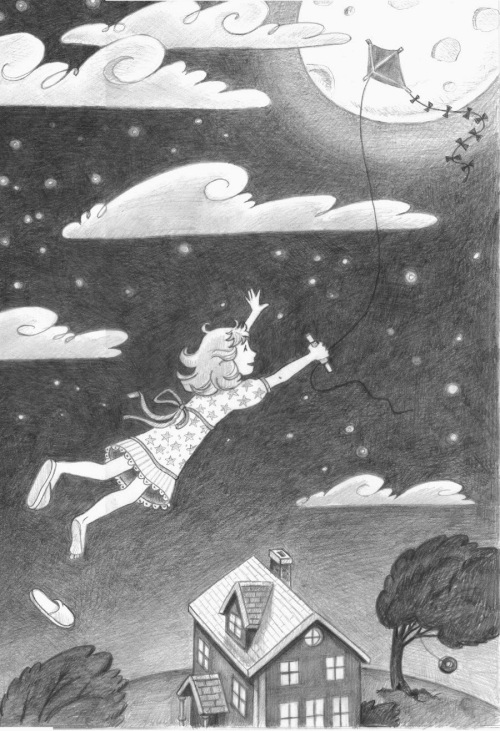

Do you have any material type tips you can share with us?
When I was working on “Just Because” I bought a light table and that was the best investment I ever made. It took one step out of the process of transferring the sketch on to the watercolor paper. I have found that anything that saves any time when working on a project is great, because deadlines are always so tight.
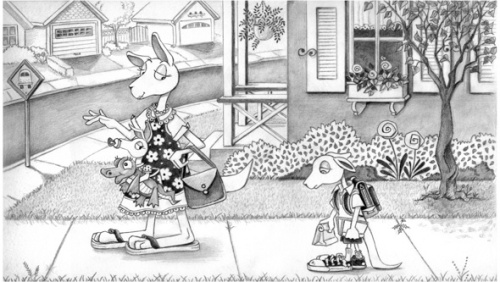
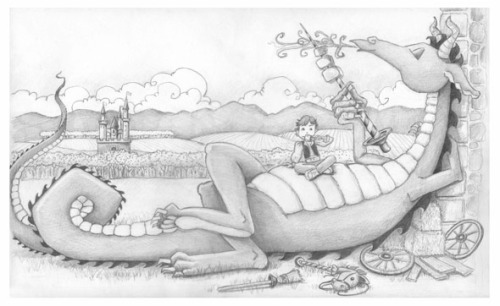
Any words of wisdom on how to become a successful writer or illustrator?
Never give up. Work hard. Keep learning and honing your skills, and most important illustrate what you love.
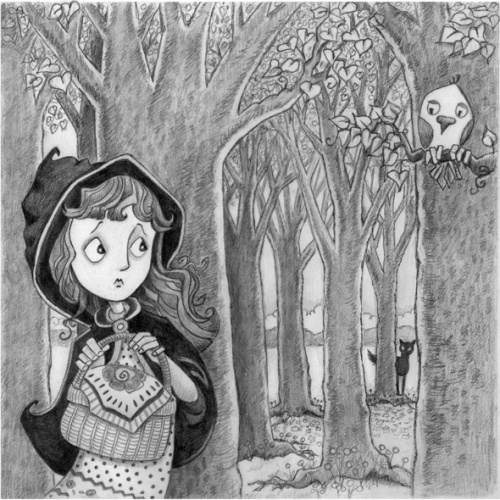
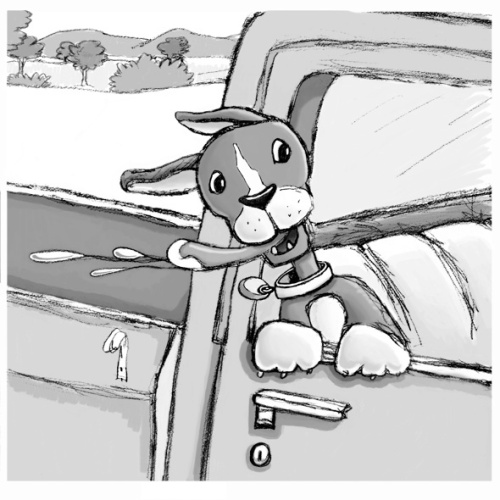
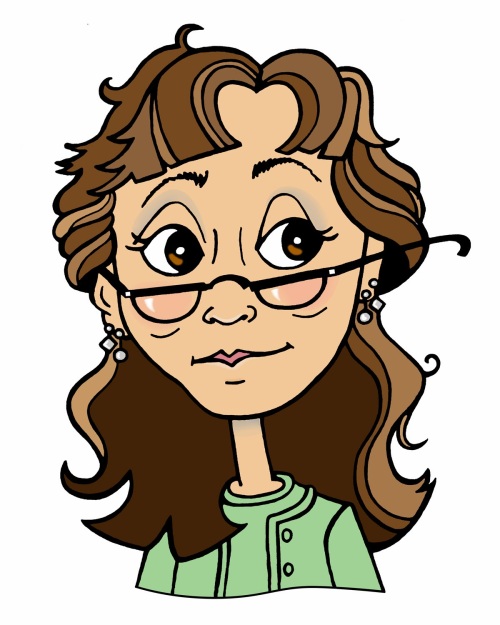 Thank you Denise for sharing your illustrations, journey, and process with us this week. We look forward to following your career, so please let us know about your new books and all of your future successes.
Thank you Denise for sharing your illustrations, journey, and process with us this week. We look forward to following your career, so please let us know about your new books and all of your future successes.
You can visit Denise and see her work at http://deniseclemmensen.blogspot.com/ Please take a minute to leave Denise a comment. I am sure she would love to hear from you and I would appreciate it, too. Thanks!
Talk tomorrow,
Kathy
Filed under:
Advice,
demystify,
illustrating,
Illustrator's Saturday,
inspiration,
Interview,
Process,
Tips Tagged:
Children's Illustrator,
Denise Clemmensen 

.jpeg?picon=3498)
By: Cait,
on 5/8/2014
Blog:
Cait's Write...
(
Login to Add to MyJacketFlap)
JacketFlap tags:
races,
race tips,
tips,
running,
training,
track,
motivation,
goals,
nutrition,
Add a tag
Now my younger brother’s first love is rugby, second is football, but for the three weeks between seasons he decided to do track! Wahoo…I was stoked!! I’m also in awe of the fact that he doesn’t do any speed-work and then just blitzes those 400′s and 200′s like they’re nothing.

The mystery is solved as to where all of the fast twitch muscle fiber genes in the family went. Clearly all were saved and concentrated into the youngest Chock sibling. Oh and I guess he stole my coordination genes too. 
Granted he’s got the competitiveness of a Chock, so he’ll gut out a race and pay the price after to hit those marks. But the truth is that last 100 of a 400 isn’t fun for anybody, no matter if you’ve trained or not…BLECH…talk about booty lock.
Checking out those high school meets has been fun, observing just as much so, and here are a few tips I’d pass on if teenagers actually cared to listen to us old folks:
* Warm-up and Recovery:
set yourself up to run your best, not warming up before a race is setting yourself up for
both injury and running below your maximum potential. Cold muscles no likey sprinting. The same for after your race, do all you can to recover so you can come back stronger. That includes a cool-down and
refueling within 30 minutes of finishing.
* Drafting and Tangents: it was windy at the track meet and those are days where you really want to draft. Leading expends more mental energy and on windy days it expends a heck of a lot more physical energy to lead. If you can, tuck in behind somebody until you’re really to surge past them. When you DO make your move, try to make it on a straight away…running the tangents on a race course is the same idea, don’t run more than your race distance or your competitors are.
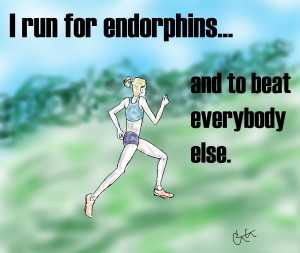
* When You Pass, You PASS: racing is mental like that, when you make a move and pass someone you want to be passing them for good. Conserve energy and then blow by that sucker! Don’t ‘weakly’ pass them because then they can just tuck in behind you and let you do the work. You want to BLOW by them and try to mentally break them. Make them think, “Dang, they’re feeling much stronger than me, I can’t keep up.” Even if you feel like crap, it’s a race, you should feel tired, but your competitors don’t have to know you’re tired as heck and clinging on until the finish line. Break them and leave them in your dust.
* Cling-on: sorry, no sci-fi reference, but this speaks to those getting passed. Read above. You can’t get in the mind of your competitors and chances are they’re working, tired, and hurting too. If they pass you, rally the troops and try to stay with them. Don’t let THEM mentally break you. See, it works two ways like that. 
The last thing I’ll add, while I like to joke that I have not a single fast twitch muscle in my body (I’ve never been biopsied, but I’ll say I probably only do have one!) DON’T use that as an excuse to avoid speed-work. It’s incredible how much you can manipulate and overcome your natural predisposition in terms of speedster versus endurance maven. You’d be surprised that, yes, even ye of one speed can get some wheels on themselves and wind up with really strong kicks.
The thing is you just have to train those muscles! For speed you need to build power (hills, sprints, plyo’s) and all that good stuff is plenty of fodder for another post!
Get out there and kick some butt…embrace the booty lock too! 
——–
Have you checked out my Ezzere Running Tees yet?? Mosey over, folks!!
Send MAJOR cheers to one awesome Kim @ Day with KT this rockstar runnerchick and mom is out to kill it at her 50 mile race this Saturday!! WAHOOOO!!!

Hydration is not something runners can afford to skimp on. Fun fact: by the time you actually FEEL thirsty you’re in a state of dehydration. The key is sipping those fluids consistently, throughout the day, and ensuring you’re urine is rocking the clear-light yellow hue rather than radioactive yellow-orange.
With summer fast approaching and the hotter temps that accompany, it’s important runners are issued a reminder just HOW crucial it is to stay hydrated. If you don’t, your performances will suffer but more importantly it could become dangerous. Dehydration can also wreck havoc on your stomach and intestines.
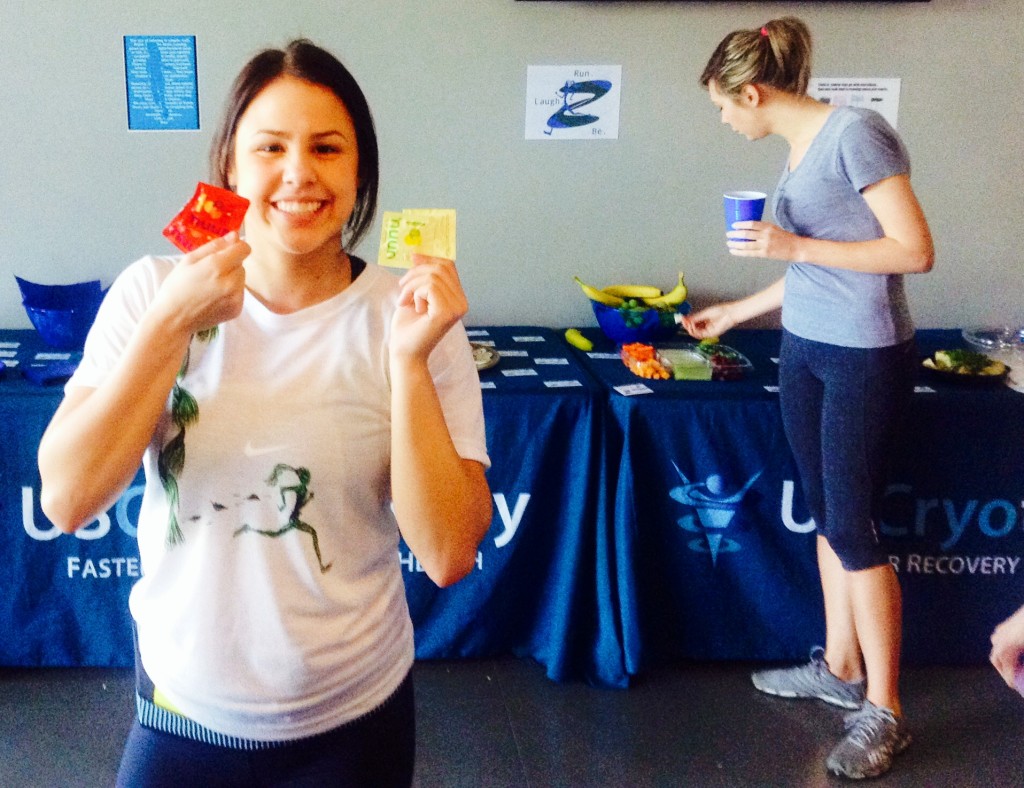
For runners, hydration is more than just drinking water. Water is essential but so are electrolytes. When you sweat you lose more than just H2O; electrolytes, like potassium and sodium, are also lost through sweat and are just as important to replace. When electrolytes get unbalanced, that’s when you run the risk of heart issues and other complications due to an overly dilute blood stream. Not fun. Besides, before you even get to THAT dangerous of a point, your running will be sub-par if you’re not hydrated fully with water AND electrolytes.
Our good friends at Nuun have been supplying those cool tablets that you can drop into your water bottle, shake, and voila have your electrolyte-infused (and tastified) drink for years. They’ve introduced their new Nuun Energy line and I served it at my Ezzere Launch Party even! Nuun was generous enough to give samples to all of my guests and put together a prize pack for this lucky winner…
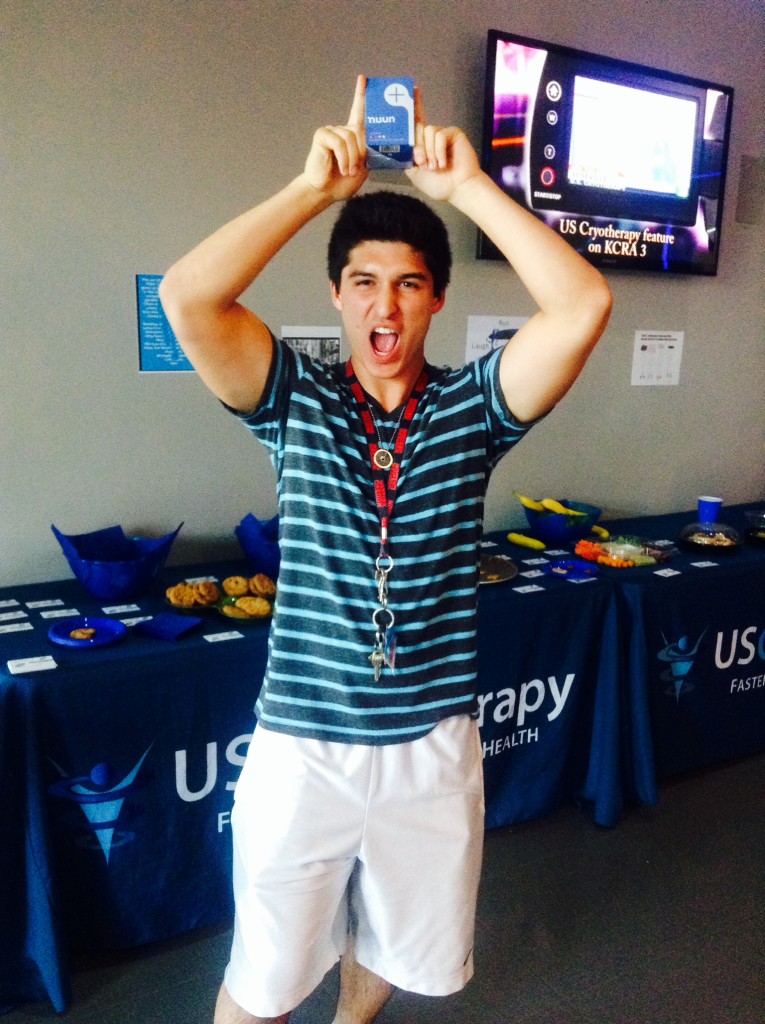
He’s excited, he’ll never be dehydrated.  Here’s the scoop on the new Nuun Energy:
Here’s the scoop on the new Nuun Energy:
* Electrolytes: These new Nuun tablets have all the essential electrolytes as the pervious Nuun Active Hydration line as well as extra B Vitamins and a bit of caffeine.
* No Sugars: There’s not any extra sugar added, meaning you can replace your electrolytes without tons of excess calories. Each tablet is less than 12 calories which, unless you need immediate glycogen while running a marathon, is what most runners are looking for in this type of hydration performance supplement. Unless you’re needing to gain weight, a common mistake runners can make is drinking too many unnecessary calories by way of sports drink. Namely because of a high sugar content. Not so with Nuun.
* Caffeine: The extra caffeine (40mg) perks you up and certain studies have shown that a small dose of caffeine pre-workout or race can give you a boost there.
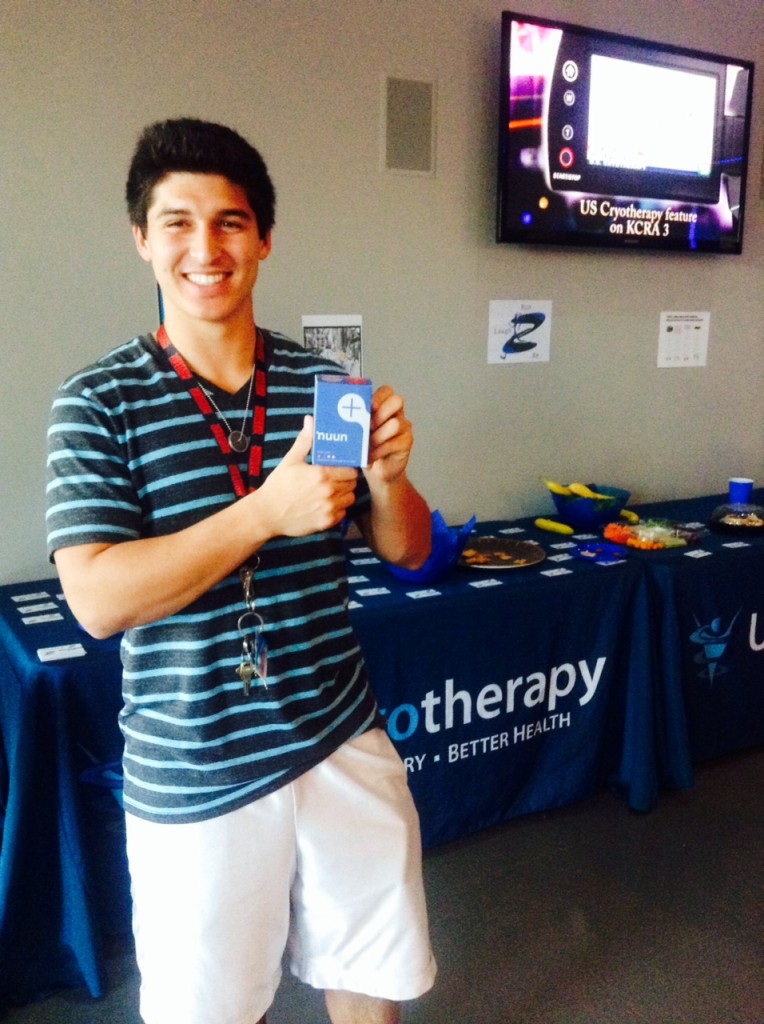
The Taste Factor:
I like that Nuun adds a nice flavor to my water but doesn’t turn it into Kool-Aide. It’s not overly sweet. “It’s fizzy!” one of the guests of my Ezzere Launch Party squealed in delight. These new flavors have a cool fizz to them and I liked that, as did my guests.
The new flavors are Wild Berry, Lemon Lime, and Cherry Limeade. My favorite was the Wild Berry. They come in the portable vial which is handy to take anywhere and infuse your water. Thank you, Nuun, for joining my party and donating your new Energy drink!
NO EXCUSES, Runners, you can stay hydrated all day long. Your running will thank you, heck, even normal people need to be conscious of staying hydrated…it’s just when you’re asking your body to perform at its best it’s THAT much more important you give it the fluids and electrolytes it deserves!
——–
Check out my latest Active Article: How to Settle Your Race Day Jitters
SUPER stoked to be able to catch up with David Torrence, he’s killing it this year and only going to be setting more records, so check out my story on him over at RunBlogRun: Records Falling and David Torrence is Hungry


By: Kathy Temean,
on 4/25/2014
Blog:
Writing and Illustrating
(
Login to Add to MyJacketFlap)
JacketFlap tags:
Illustrator's Saturday,
Eric Freeberg,
New York Academy of Art,
Pennsylvania Academy of Art,
Wendy Lynn & Co.,
Interview,
Tips,
inspiration,
Process,
illustrating,
Add a tag
 Eric Freeberg discovered the Tolkein art of the Brothers Hildebrandt in high school. Their influences were N.C. Wyeth and Howard Pyle, who are enduring influences. The illustrators of the Golden Age of American Illustration continue to resonate with him after decades of studying painting and making pictures as a professional.
Eric Freeberg discovered the Tolkein art of the Brothers Hildebrandt in high school. Their influences were N.C. Wyeth and Howard Pyle, who are enduring influences. The illustrators of the Golden Age of American Illustration continue to resonate with him after decades of studying painting and making pictures as a professional.
He studied painting at the New York Academy of Art, and also at the Pennsylvania Academy of Art, and at the Art Students League.
His hope is to combine the gallery quality of fine arts representational painting with the magic and narrative of childhood. His art straddles the fence between the fine arts and the commercial.
Eric has illustrated many books for children, in addition to work for magazines and ad campaigns.
He has exhibited at the Society of Illustrators in New York, and at the Society of Illustrators Los Angeles Annual. He is also a member of the Society of Children’s Book Writers and Illustrators. Wendy Lynn & Co. represents his artwork.
Eric forgot to take process pictures, but he has given us a lot of information about both his painting process and his black and white illustrations. Here is Eric explaining his painting process:
This is the typical process with a color illustration.
Sketch

(1) Color study
Once the sketch has been approved by the publisher/client, I make a rough color study based on the sketch. To make the study, I print the sketch onto quality paper with a copier. I seal the surface of the paper with acrylic medium so the oil paint won’t soak into the paper. Then I do a quick painted sketch in color on top of the copy to give myself an overall feel for a possible color harmony. In addition to a painted color sketch, I might do a value study as well–same method– if I have time.

(2) Enlarge drawing to painting surface
I then have the approved sketch/drawing enlarged onto a sheet of quality drawing paper. Strathmore Bristol Board 2 or 3 play is a favorite. I do this at a printing place. This allows me to work fairly large while retaining the detail of the drawing, and removes the step of having to transfer the drawing.

(3) Mounting
Next, I mount drawing paper(with drawing printed on it) onto 1/2 inch plywood. I briefly soak the paper in water. After patting the paper dry with a cloth, I brush acrylic medium onto both the plywood surface and to the back of the drawing paper. I then position the paper onto the plywood. The acrylic medium acts as a glue. I then use a brayer(a roller) to smooth out the paper on the plywood, to make sure the paper adheres completely and without bubbles. Once that’s done, I brush on a layer of acrylic medium onto the surface of the drawing, to seal the paper so oil won’t be absorbed. Once that layer dries, I sand it and apply a second layer of the medium. I might do 3 layers with sanding between.
When that’s all done, I have an underdrawing upon which to begin painting, and a nice, large, solid and relatively smooth surface for painting.

(4) Underpainting
The first layer of paint is usually an underpainting of a solid color in acrylic paint. I often like to use raw sienna or something similar as an underpainting color, because I like the feel of the the warm color. It seems to work well, and sets the tone for the painting to come. Sometimes I’ll mix the sienna with opaque titanium white in order to lighten some of the dark printed blacks of the underdrawing.

(5) Painting Block-in
Next, I start painting full color with oil paint. I try as much as possible to get the final intended color in the first try. I refer to my studies, the color study and possibly a value study, as I paint with oil. I use the studies as a guide, but usually expand on the color and value in the final work. When I’m painting I’ll usually paint area by area. For example, I might just work on painting a character. Typically, I’ll glaze (a transparent color diluted with painting medium) over the area to be worked with. Then I paint directly into the glaze with opaque and thicker paint. The glaze, if done with a fast drying medium like alkyd mediums, will quicken the drying of whatever is painted into it. Plus, the glaze improves the flow of your brushstroke.

(6) Detail
Next, I repaint and work detail into the picture as needed. Sometimes I’ll glaze, sometimes I’ll paint opaque visible brushwork. A word about glazing–I have been using walnut alkyd medium. It dries quickly and is nontoxic. One thing to know about alkyd painting mediums is they dry a bit dull and matte. You’ll need to either “oil out” the painting after its dry, or varnish it. I find oiling out works pretty well when I’m in a hurry. What that means is, you brush oil onto the painting’s surface, rubbing the oil into areas that appear dull. It should bring out the richness of the oil paint. Ultimately, varnishing is needed.
For brushes, I block in big areas with bright bristle brushes. I like the Princeton 6300 Series for this. They’re a hog bristle, synthetic combo that I find works well. But for smaller areas and detail, I use softer hair brushes. Right now, it’s Dick Blick’s Red Sable Filbert size 10, along with a pointed round for fine detail. I keep trying new brushes though. It’s good to experiment.

Drawing Process:
When I’m asked to create black and white drawings, the following method is typical.
(1) Value study in charcoal
I like working with pencil in the final drawing. Before I begin the final drawing, though, I’ve found doing a study in charcoal to be helpful in helping me get my dark values appropriately dark when I later work with pencil.

(2) Transferring
I have an opaque projector that’s great for enlarging sketches onto larger drawing surfaces. I project the approved sketch onto my drawing surface and then lightly trace the lines of the sketch with an HB pencil.
(3) Darks
Once the lines of the composition has been lightly traced, I like to take a 3B graphite pencil and decisively knock in the darks of the composition.
(4) Detail
Once that’s done, I use a variety of pencil lead ranging from 4H to 8B, in order to get subtle modeling of value, and the soft leads between 4B and 8B allow me to get fairly dark darks.
More black and whites further down.
 When did you first know you wanted to make a living doing art?
When did you first know you wanted to make a living doing art?
I was lucky in that I had very encouraging and supportive parents who probably planted in my mind, very early on, that art could be a future career for me. The first “drawing” I did was when I was 2 years old, supposedly of a witch; I think it looks more like a mosquito doing yoga, but I’ll take my mom’s word for it.
But I’d say, by high school, I was thinking of pursuing art as a career.

How long have you been illustrating?
I’ve been illustrating for 6 years.

What was the first thing you did where someone paid you for your artwork?
When I sold some paintings in a college scholarship exhibition.

I see that you attended the Academy of Art in New York City and the Pennsylvania Academy of Fine Arts. Which one did you attend first? Did you transfer or branch out in a different direction?
I went to the Pennsylvania Academy first. I’d already had 4 years of art study at a state college, so after a year in Philadelphia I’d decided I needed a break. I went to New York a couple of years later and, while it wasn’t a transfer, it offered a similar traditional academic training for artists that included drawing from cast of classical sculpture, lots of figure drawing, that sort of thing.
The New York Academy also had a Masters degree program, which was a factor in my choosing to go there. And I wanted to live in New York.

How did you decide to attend these two schools?
There’s a Salvador Dali quote, “Learn from the masters, and then do what you want with it.” The illustrators Greg and Tim Hildebrandt (The Brothers Hildebrandt—from New Jersey, by the way) said the same thing. That was my attitude as well and it influenced my decision to study at both PAFA and NYAA. They both had, and have, a respect for the old masters and value representational painting. Nowadays, there are more options for a student who wants to study that kind of painting.

What did each school bring to the table?
I only did the foundation year in Philly, so it was mostly basic drawing and painting. In New York, the focus was the human figure, so there was plenty of figure drawing and figure painting, along with painting techniques, etc.

What type of painting did you study?
If you mean media, it was oil painting. Painting of the figure was the emphasis.

Did the school help you get work?
Ultimately it did. You hear respected illustrators say “learn the figure.” In the children’s genre, I think that skill can get you jobs illustrating history and biography,etc. Also, a knowledge of anatomy and rules of the figure is hugely helpful when you’re creating figures from your imagination. When I’m illustrating in a goofier style, I have to let go of some of my fine arts education(laugh). It’s about what’s appropriate for the job.

Did you go right into a job after you graduated or did you immediately start freelancing?
After I graduated, I actually moved to Ireland for a year with a girlfriend. With the help of 2 arts grants, we were able to live there and travel around Europe for a year. I was able to see a lot of art in the museums there.
After that, it took me a few years of trying different things and building a children’s book portfolio to finally arrive on my current career path.

Do you feel that the classes you took in college have influenced your style?
They have. Whether I’m working in what I would describe as a goofier style or more realistically, there’s an element of representationalism. For example, if I’m painting orangutans playing volleyball (as I did for this current job) there are still elements of realistic painting, of light falling on objects, as a fine arts painter would do. But the characters are, as I said, goofy, and hopefully appropriate for a young age group. I switch back and forth stylistically as needed; I think it’s good to be able to change gears. It’s fun too.

When did you decide you wanted to illustrate children’s books?
Toward the end of grad school, I already had a few portfolio pieces completed, so I guess I’d been thinking of it even before then.

What was the first illustration work you did for children. How did that come about?
My first illustration job was Jack London’s “White Fang,” which was a fun way to start out. My agent got me the job. I would speculate that the publisher saw my portfolio piece for Goldilocks and the Three Bears and decided, based on my paintings of bears, that I could paint wolves (laugh.)

How did you get to work with Compass Publishing on the Classic Starts Readers?
“White Fang” was a Compass title.

Then you illustrated the Classic Starts Series for Sterling. The names are very similar. Did Compass sell this line to Sterling?
No, there’s no connection. It’s just a coincidental similarity of titles. Compass is I think primarily for the educational market, and Sterling is owned by Barnes & Noble.

I counted a total of 24 books between 2009 and 2014. That is a lot of books for each year. How long does it take to illustrate one of these books?
It depends on the contract. The Compass books, if I remember correctly, had to be done quite quickly—I remember I had to compete a painting every 3 days, which works out to a little over a month per book.
For the Sterling books, as another example, the contract spread over several months, so there was a bit more breathing room. For 4 titles, that’s roughly 3 months per book. I think, with most illustrators, they’d agree that more time is always welcome, if you can get it, to better be able to raise the quality of the artwork.

Is the interior art done in black and white?
How many is usually in each one? For the Sterling jobs, they required a full color cover painting, plus 10 black and white interiors. Compass was a color cover plus 10 color interiors. It will vary from publisher to publisher.

Are you under contract to illustrate more?
Not with Compass or Sterling. The last thing I did for Sterling was “The Iliad” and “Roman Myths” last year.
But I am currently under contract to illustrate 3 books in a chapter book series about a turtle character named Kudu. Also, my agent is currently negotiating another book contract for the coming year.

How did you connect with Wendy Lynn for representation?
I found Wendy in “The Children’s Illustrators Market,” in the agents listing. I sent my work to a few agents and chose Wendy.

What was your illustrating first success?
Well, I would call my first job, “White Fang,” my first success, as I was happy to have begun illustrating. I would also say, it felt good doing the Sterling jobs because they were my first non-educational job and would be widely available in the Barnes & Noble children’s departments.

Do you think you will ever try to write and illustrate a picture book?
Yes, I’d love to. I did a book dummy for the Grimms story, “Iron John,” which I know wouldn’t be my writing, obviously. But its a picture book project I have in the works. I’m not happy with the first run through, but I think I could eventually come up with a fresh new take on the story.. I would like to write something of my own some day.

Have you done any illustrating for chldren’s magazines?
Yes. I’ve illustrated for Humpty Dumpty magazine, and for Spider magazine, part of the Cricket Publishing Group.
For Humpty Dumpty, I illustrated a story called “Fit for a King,” about a Lion (who’s a king) and his cook, an Orangutan (Orangutans again). I got an honorable mention from SCBWI’s Magazine Merit Award in 2013 for that work. For Spider magazine, I illustrated “Nelly’s Sweet Song,” a story about George Washington and his niece. I also illustrated “Samuel Peppard and his Windwagon,” another American history piece for Spider.

How did you illustrations become considered for the Holbein Prize for Fantasy Art? Is that something an illustrator can enter? How did it feel to win that prize?
It felt great! I don’t recall how I learned of the competition, but anyone can enter. Their definition of Fantasy Art included fantastical illustration in any genre.

Then in the same year you won the London Book Fair’s Illustrator’s Competition. How did it feel to win those two prizes?
Well, it was a good year (laugh.) London was the most exciting thing to have won because it’s such a major venue. And it involved traveling to the Book Fair and staying in London. I love travel.

What is your favorite medium to use?
My favorite medium is oil.

Has that changed over time?
Yes. I used to work exclusively in acrylic, when doing color work, because of the quick drying time. But I learned a way to work in oil that’s quick drying as well.

What is the one thing in your studio that you could not live without?
My Madmen-era drawing table. It’s a wooden, swivel drawing table that is, as far as I can tell, the style of drawing table from the 60’s.

Do you spend a specific amount of time working on your craft?
I usually work 40 hours a week. That’s the goal for each week. Some days I’ll work fewer hours, other days more, but I make sure I work about 40 total each week. I find, if do that, the work usually gets done. Granted, with deadlines, the number of hours a week can go above 40.

Are you open to working with self-published authors?
Yes. To date, I’ve worked with one self-publisher author.

Do you take pictures or do any type of research before you start a project?
I use lots of reference photos as part of my process. As for research, I illustrated “The Iliad” last year, as an example, and, in order to get a certain level of authenticity, you need to research the period. What type of armor and helmets were worn? What were the methods of warfare, etc.? Those are the kind of questions you have to answer. Even for a project like the current one I’m engaged in with anthropomorphic animal characters, you still need to look at a lot of photos of animals to decide the look of the various characters, and to help with convincing detail, etc.

Do you think the Internet has opened doors for you?
Definitely. It basically opens up the whole world to your work. I’ve had clients from Ireland, Korea, for example, and was approached to do a painting demo by a children’s literacy council in Dubai. Then there’s London and the various competitions that are easier to access. It’s so different from just a generation ago, when an illustrator usually had to live in proximity to New York. So, yes, I think the Internet’s existence has a definite upside for an illustrator.

Do you use Photoshop with your illustrations?
I use Photoshop for creating digital files. The only time I’ve altered an illustration with Photoshop is if the values need punching up when a scan doesn’t come out as well as hoped. So, the short answer is, I work traditionally—it’s just traditional painting. I’d like to develop my digital painting skills when I can find the time.

Do you own or have you used a Graphic Drawing tablet in your illustrating?
No, but I’d like to try.

Do you find exhibiting your artwork gets you jobs?
I think exhibiting may help—it raises your profile. I would say, the major venues in big cities, or at conventions would be potentially bigger audiences. I’ve exhibited at the Society of Illustrators in New York, and at the Society of Illustrators in Los Angeles. I got a job offer from being in the New York show, but couldn’t do it because of timing. I think, sometimes, you’ll be seen by someone but it won’t bear fruit until later on when the person has an appropriate opportunity for you and your style.

Do you have any career dreams that you want to fulfill?
Probably I’d like to have a career that eventually shifts more into picture books. I wouldn’t mind crossing into other genres too. I think I’d be happy to just have a long and varied career illustrating. I’d like to show my illustrations in gallery shows. That’s something I’ve yet to delve into.

What are you working on now?
I’m working on the first book in the Kudu the turtle chapter books that I mentioned earlier. Nearly done.

Do you have any material type tips you can share with us? Example: paint or paper that you love—the best place to buy—a new product that you’ve tried—a how to tip,etc.?
Best paint—I currently use Winsor & Newton paint, mainly. I like to try lots of different brands, but I’d like to try Old Holland.
Best paper—Strathmore 500 Bristol
A new product I’ve tried—I tried Walnut Alkyd Painting Medium a while back, and have been using it regularly to thin my paints.
The best place to buy—Dick Blick online is a good place to find a range of art supplies. I check Pearl Paint as well.
A how to tip: I’ll share 2 tips I’ve found useful.
 Tip 1:
Tip 1:
The typical process when creating illustrations for a publisher is to create sketches first for approval. Once the sketches are approved, you move into completing the final art. Because I like to make sketches that are detailed and comprehensive, I don’t like to redraw/transfer the whole drawing to the painting surface. Instead, a method I use is to have a printing service enlarge my sketch onto a large sheet of high quality drawing paper (I like Strathmore 500 bristol board 2 or 3-ply). That way, you don’t lose any of the detail put into the sketch, and it can be enlarged to a size of 20 by 30 inches or thereabouts. I then mount the paper to plywood panel and seal the surface of the paper with acrylic medium. I do 2 or 3 coats of the medium with sanding between. The medium prevents the oil paint from being absorbed into the paper and therefore should be archival. Sanded, the painting surface will be quite smooth. That’s my method of transferring a drawing without having to redraw. It saves time and allows me to work on a fairly large scale, which I like to do.
Tip 2:
If you paint in oil, drying time is an issue for an illustrator who needs to make
deadlines. A way I work to ensure all the paint dries quickly is, using an alkyd resin painting medium, I lay down a glaze (a small amount of transparent color diluted with medium) of color over the area I’m going to work on. I then paint wet-in-wet into the glaze. The quick drying alkyd medium in the glaze ensures that everything you paint into the glaze will dry quickly. No need to add the medium to every brushstroke to quicken drying.

Any advice on how to become a successful writer or illustrator?
My advice is: The portfolio is the first priority—take time to develop it. Don’t dabble, go in all the way. Be patient—slow and steady wins the race. Have a career model—ask yourself what kind of career you imagine for yourself, what illustrators you like and do a case study of them. Become an expert in your field. Read the SCBWI Bulletin, Publishers Weekly, etc. Utilize the resources that the SCBWI has to offer—it’s an excellent source of information and support. Take ownership of your career—every decision has an impact. Understand the market and where you fit into it. Don’t follow trends, but be aware of them. Be flexible and have a good attitude—forge good relationships with publishers. Be nice. If at first you don’t succeed, don’t abandon ship—stay positive, stay on course.
Do the kind of work you love to do—there’ll be an audience for it. Enjoy the ride.


Thank you Eric for sharing your illustrations, journey, and process with us this week. We look forward to following your career, so please let us know about your new books and all of your future successes.
You can visit Eric at http://www.ericfreebergillustration.com. Please take a minute to leave Dana a comment. I am sure she would love to hear from you and I would appreciate it, too.
Talk tomorrow,
Kathy
Filed under:
illustrating,
Illustrator's Saturday,
inspiration,
Interview,
Process,
Tips Tagged:
Eric Freeberg,
New York Academy of Art,
Pennsylvania Academy of Art,
Wendy Lynn & Co. 

 I just got into the TV show, Dexter.
I just got into the TV show, Dexter.
I never had Showtime before so I couldn't watch it and the entire 8 seasons is now free on Netflix. (woot woot! I know what I'll be doing over the summer.)
This is the. best. show. evah!
If I could write books like this - I would be a bestseller for sure!
I'm learning so many writing lessons from this show that I wanted to share:
Top 10 writing lessons from Dexter:
- Character arc - The character arc in each show let alone every season is amazing! Each character changes a little. in each episode.
- Dexter. The man perfect for this character - smart, hot, funny. So relatable that the whole serial killer thing is overlooked or accepted and you don't really know why or how it happened. :)
- Tension/Pace - Each chapter should have some tension or suspense. Even in books that aren't thrillers, you need to keep the reader turning the page. The suspense is killing me - every show has an amazing cliff hanger and i find myself saying "just one more episode."
- Voice - Each character should have his/her own voice. This is what makes each person special and relatable. Every character has their quirks, flaws and lovable moments.
- Character Development - Every character should be fully developed with backstory and motive. Each character from Dexter, to his sister Deb, to the "reborn cop" Angel, to the other forensic scientist, Vince. Each is unique.
- Villain - Your antagonist should be relatable. Not that Dexter is the antagonist but he should be. he's a serial killer yet somehow you root for him not to be caught.
- Setting. Your setting should invoke some emotion. Dexter is set in Miami. Everyone is always hot and sweating which adds anxiety to everything they do.
- Romance - Dexter started out awkward and has become more sexy as the shows go on. He's had a couple love interests but they were very purposeful in his character development which I find refreshing. It's not just love on the side. Each plays an important role in his arc.
- Reveals/Surprises. The reveals should be well placed and strategic. It all has to make sense in the end. So far they have done a brilliant job of reveals and I find myself going "I did not see that coming."
- Hook - You need a great hook as the foundation of any story. The idea of a serial killer killing bad guys is brilliant.
You need to watch this show, esp if you are a thriller writer. The lessons are endless.
I heard there were Dexter books so I may check that out just to see how it plays out in the writing vs script.
Have you watched Dexter? What do you think? What is your favorite lesson from the show?

By: Kathy Temean,
on 4/18/2014
Blog:
Writing and Illustrating
(
Login to Add to MyJacketFlap)
JacketFlap tags:
Illustrator's Saturday,
ABDO Publishing,
Dana Martin,
Liza Mullarkey,
Montserrat College of Art,
Tips,
Book,
inspiration,
Process,
illustrating,
Add a tag
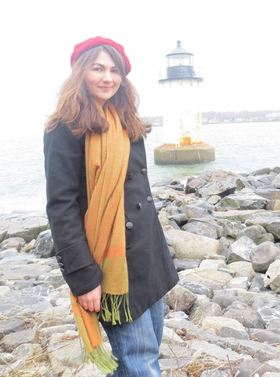
Dana Martin is an illustrator and designer who was born in New Mexico and has been roaming ever since. A recent graduate of Montserrat College of Art, her work has appeared in several local shows and was recently featured in CMYK’s Top New 100 Creatives.
Her clients include the Peabody Essex Museum, Hendrickson Publishers, Chrysler, ABDO, ArtThrob Magazine, and Ploughshares. The Johnstown Flood, scheduled for release this fall, will be her first illustrated chapter book.
Here is Dana showing and discussing her process:
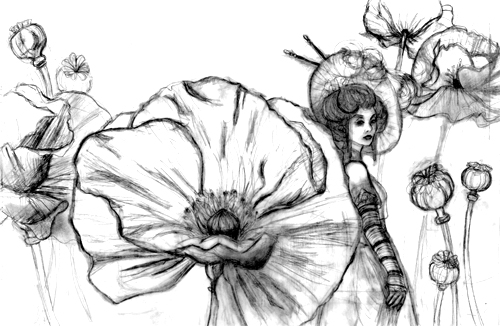
Once I’ve worked out my composition in thumbnails and sketches, I make a preliminary drawing.
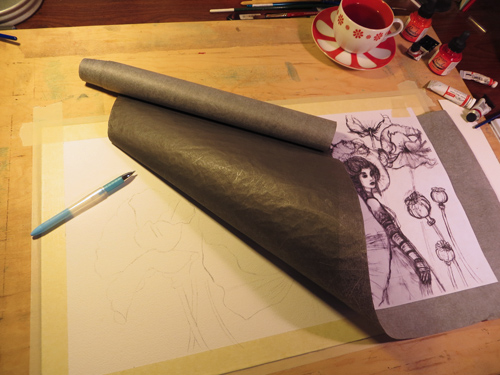
Then I transfer it to watercolor paper.
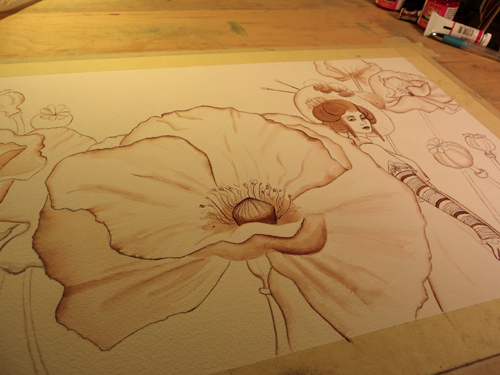
I ink the drawing, but I keep it pretty light, sticking to a color I know will blend well with the paint and feathering my edges. Once it’s dry, I add masking fluid to any light areas I want to preserve.

I wet the paper and paint my first coat, adding a little ink wherever I need the color to be bolder. Once that’s dry I add more masking fluid to the flower stems.
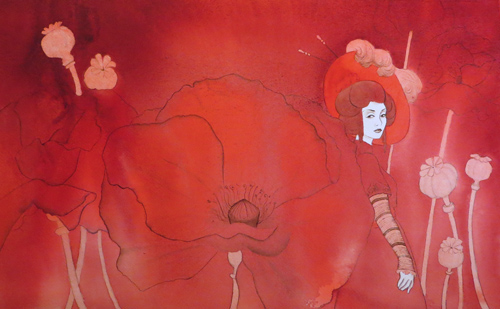
I do a second coat with darker red, and this time I really soak the paper to float the paint.
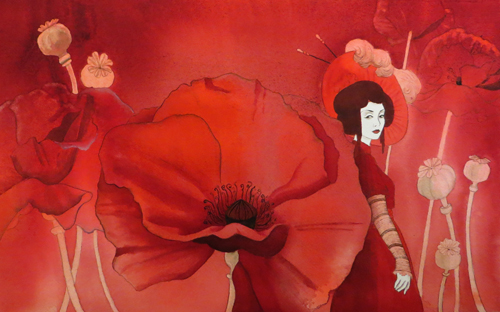
After that, it’s just about adding detail and building up a tonal range.
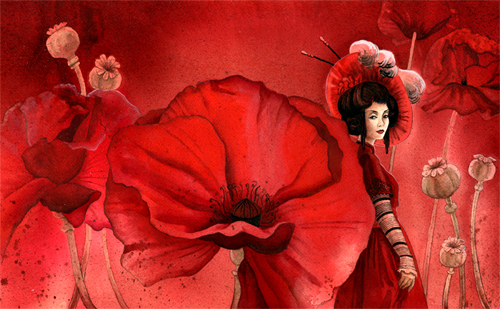
As a final step, I add a little splatter around the corners for texture.
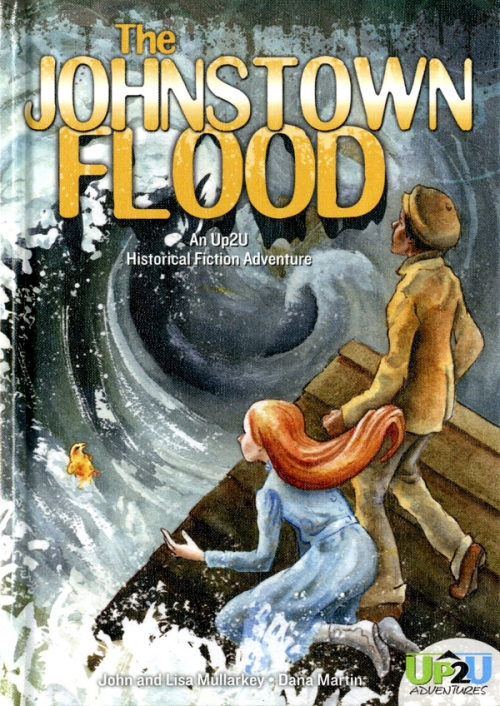
Above: The Cover of Dana’s First Illustrated Book. Below: A few back and white interior illustrations.
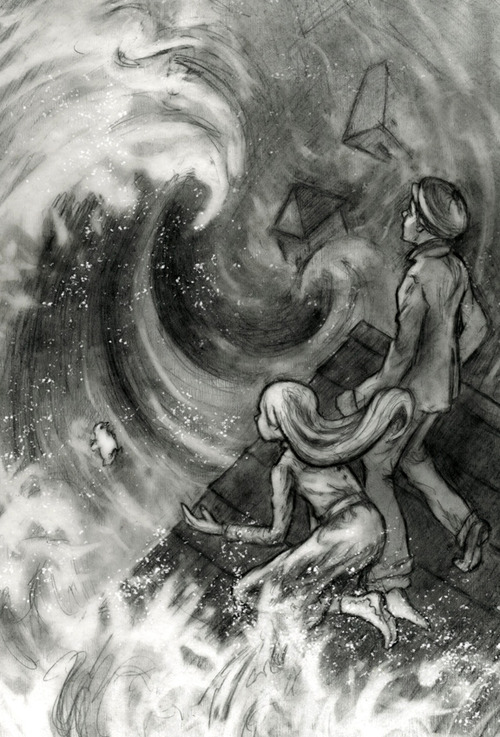
How long have you been illustrating?
3 years professionally.
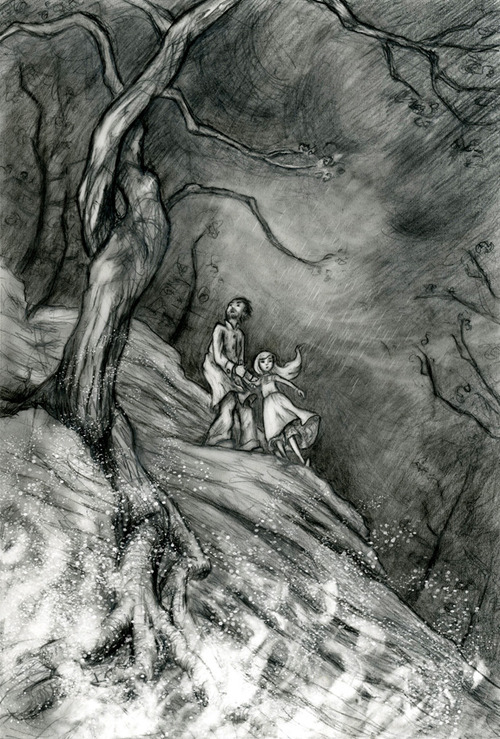
How did you decide to attend Montserrat College of Art?
Because I knew so little then about how to choose an art school, I started my search with two lists. One was of all the schools in the AICAD (Association of Independent Schools of Art and Design) and the other was of those in the NASAD (National Association of Schools of Art and Design). I wanted to go to a private college and I figured any school that made both the lists was probably pretty good (now that I know more about accreditation processes, this seems amazingly naïve). After that I just started investigating every school that was in both associations. Most of them didn’t offer illustration programs, so they were easy to cross off. Others I could tell just weren’t the right fit. I eventually applied to RISD, the University of the Arts in Philadelphia, and Montserrat, and was accepted into all three. At that point, the smart thing would have been to visit the campuses, but since I was in the middle of gen. ed. classes at a state university on the other side of the country, I couldn’t get away. I kept calling and emailing the admissions offices with more questions, and they all did their best to get me the info I needed. Montserrat was always the pleasantest to deal with, though, and I just started to get the sense that it was a place where I would really feel at home. This turned out to be true.
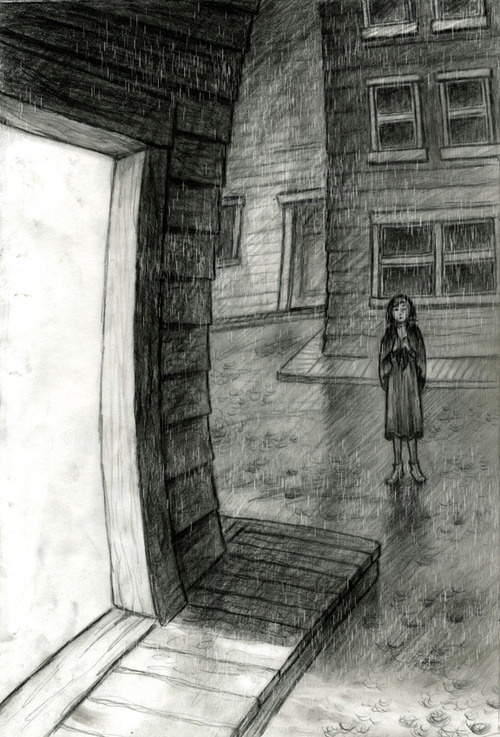
Can you tell us a bit about that school?
Montserrat is a quirky little school slightly north of Boston. They offer all the standard art school concentrations, but the illustration department is particularly strong. There’s an emphasis on building foundational skills rather than chasing the latest trends, and the learning atmosphere is great because the students and instructors are serious about their work, but not their self-image. It’s a down-to-earth and unpretentious community, something that’s not always easy to find in the art world.
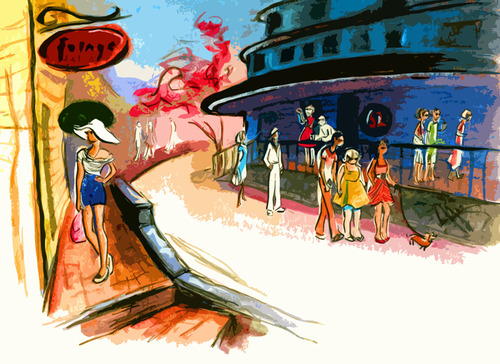
What were you favorite classes?
That’s a hard choice, I had a lot of great ones. I really enjoyed the natural science illustration class, because we learned a lot about botany and insects, and there was a whole closet full of butterflies, dried flowers, stuffed birds, and other treasures that we were free to borrow for sketching. My thesis class was also amazing, because I got to plan my own assignments but was supported by everyone’s feedback. Even the classes I wasn’t enthusiastic about, though, such as typography and web design, have proven invaluable since graduation.
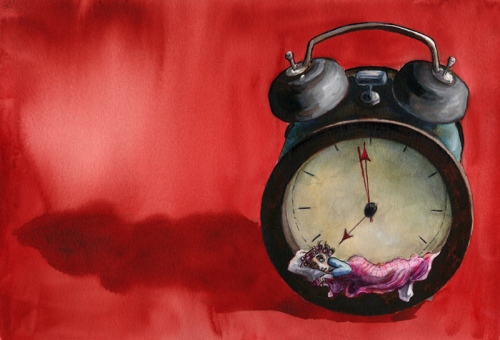
Did the school help you get work?
No, not directly. If there is one downside to a small college, it’s that the career department is also small and just doesn’t have the resources to place students in jobs right after they graduate. But the school did give me the skills I needed to get work for myself, as well as a wealth of friends and colleagues to help me on the way.
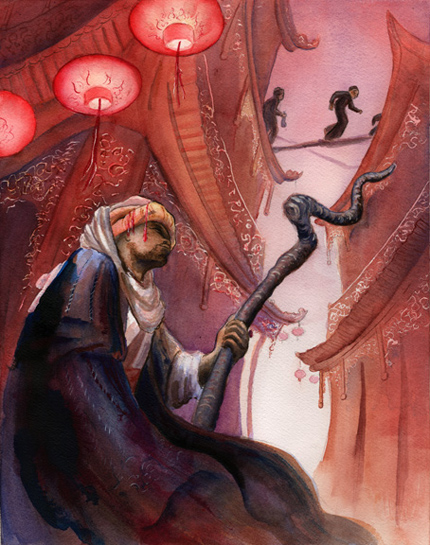
What did you do right after you graduated?
I continued with some of the things I’d already been doing in college – working at a library and helping with Montserrat’s summer program – but I did manage to get some small illustration jobs almost as soon as I graduated.
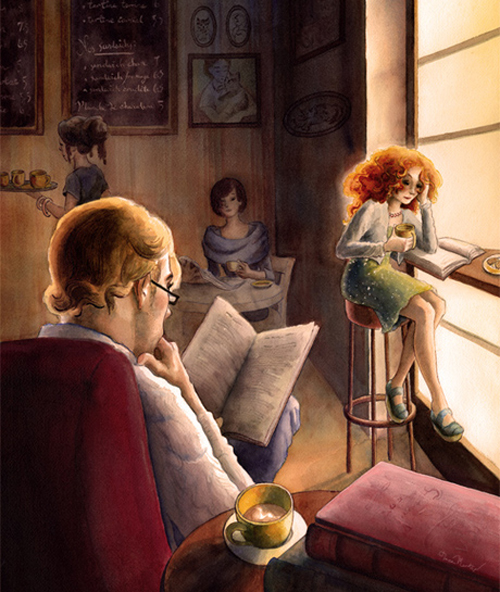
Do you feel that the classes you took in college have influenced your style?
One thing I appreciated about my instructors was that they didn’t steer students toward one style or another, but instead worked to help each of us sort out the voices we already had. I’ve always had an eye for detail, but when I started school, it was out of hand. My compositions were cramped and everything in the picture was competing for elbow room, so nothing could flow. The instructors helped me recognize the problem and find ways to open up the page.
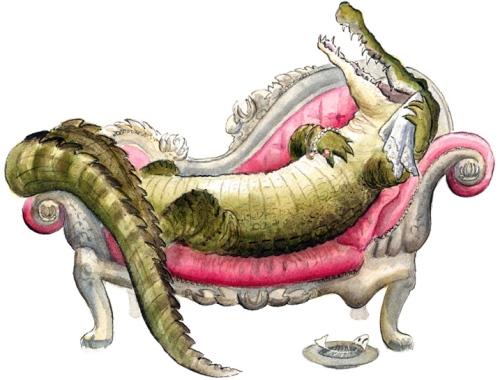
What was the first thing you did where someone paid you for your artwork?
I did some architectural illustrations for an organization that taught adults with developmental disabilities. They were planning to renovate a veterans memorial park, with the idea that their students would maintain it once it was finished and the whole community could enjoy it. But first they needed to raise the money, so my illustrations of the future park were designed for the fundraising brochures. It was the kind of obscure job that you only find through the friend of a friend; I heard about it because the assistant director of the organization was friends with a Montserrat alum, who kindly posted the job on one of the school’s social network pages.
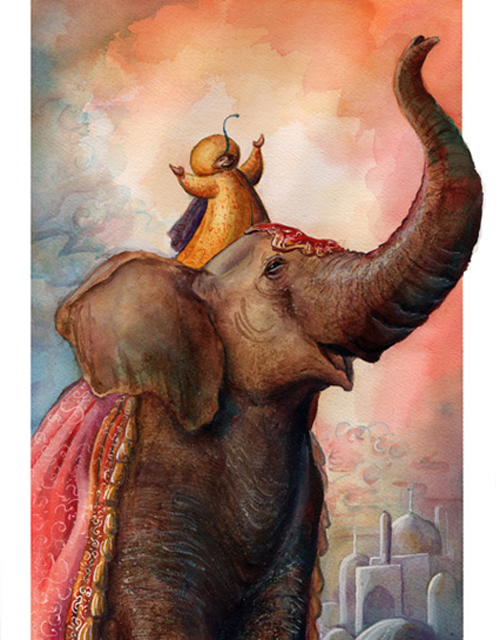
What was the first illustration work you did for children?
It was for Clubhouse Magazine. I was nine years old. So actually, come to think of it, that was my first paid work. I got ten dollars.
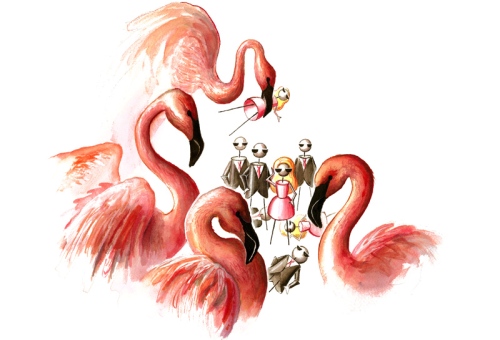
How did that come about?
Clubhouse used to put out one issue a year that was exclusively written and illustrated by children. Amazingly, the process hardly varied from what I now do professionally. I sent them a sample of my work (a horse, because to my nine-year-old self, horses were the supreme challenge, so drawing one was proof that I was a master artist). Someone from Clubhouse wrote back to say they liked it and would I care to illustrate the story they’d enclosed? It was a mystery story written by another child about a ticking bomb and a school band (it wasn’t really a bomb, just a metronome, and this was before bombs in schools had become such a fraught issue). I did a top-notch job on the metronome, because I’d just started piano lessons and knew exactly what it looked like. I did a derivative job on the bomb, because the only ones I’d seen were in Bugs Bunny cartoons. They also wanted a drawing of a trumpet, and I did a really terrible job on that. I couldn’t figure out all the twists and turns in the brass tubing, let alone where the trumpet player’s hands were supposed to go. The big difference between this project and all the subsequent ones was that I had no contact with the art director and nobody looked at my sketches; I was just supposed to mail everything in when I was finished. I’m pretty sure, though, that the art director felt the same way about the pictures as I did, because the story, the metronome, and the bomb made the first page of the magazine and the trumpet picture disappeared quietly into the night. They never printed it and I never saw it again, thank God.
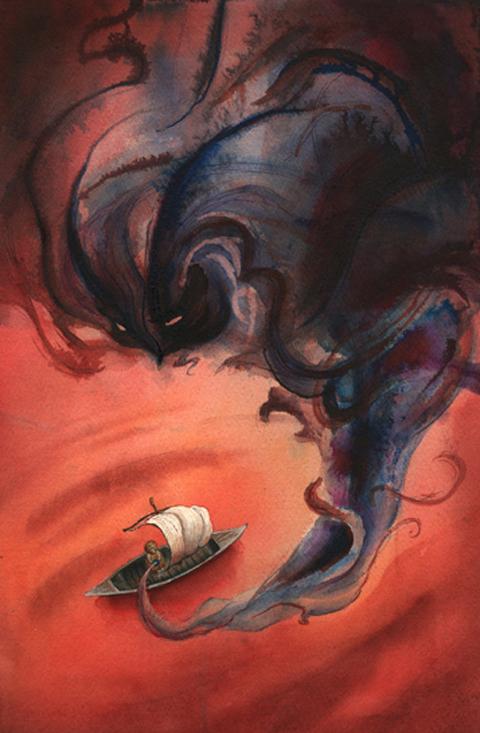
How did you get to be featured in CMYK’s Top New 100 Creatives?
I did have to submit work to be considered, but unlike most competitions, the judging was based on the whole portfolio rather than any one piece.
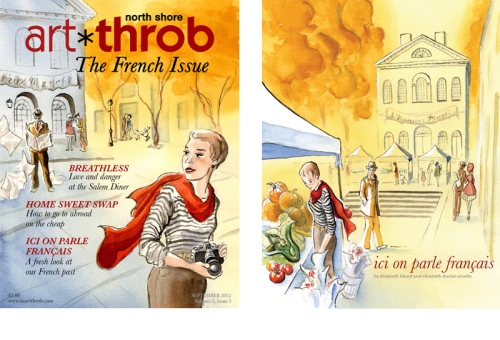
When did you decide you wanted to illustrate a children’s book?
I expect from the moment I first saw a children’s book. Even before I could read them I never went anywhere without one. Come to think of it, I still don’t.
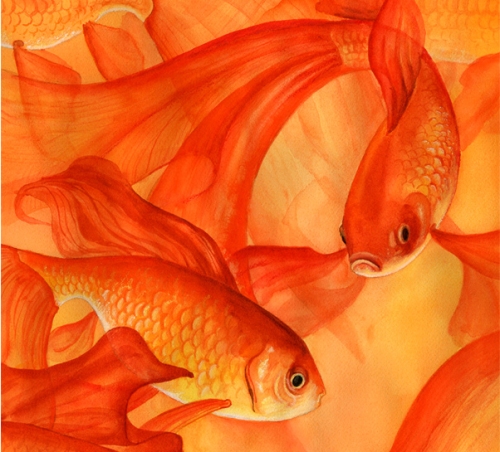
How did you get the contract to illustrate the chapter book titled The Johnstown Flood?
I had sent a black-and-white postcard to the publisher, ABDO, and one of their editors contacted me shortly after that because she had some black-and-white interior work. I’m thankful that she liked the card enough to comb through my blog, because the medium we went with was not at all what I’d sent her. She liked my preliminary drawings, which were all done in graphite. I’d never considered marketing them, because to me they seemed unfinished. I did push the drawings a bit for the book, using darker pencils and some Photoshop to get a wider tonal range, but the style was basically the same.
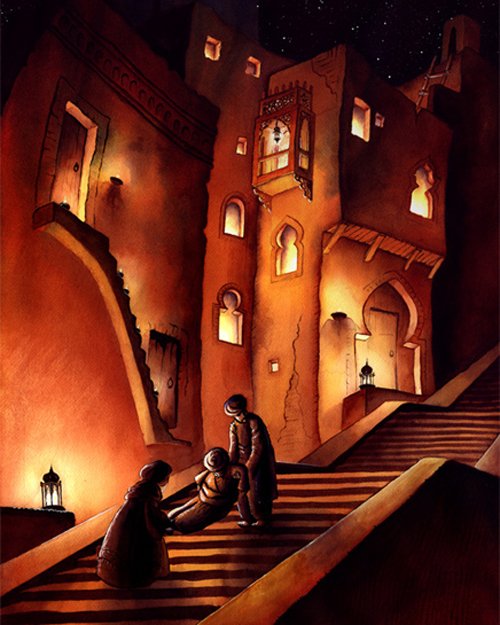
How long did it take you to illustrate that book?
I did the whole thing in a month. I could tell the editor was anxious to get it done; I think because it was part of a new line, the Up2U adventures, she needed some artwork to show the rest of her team.
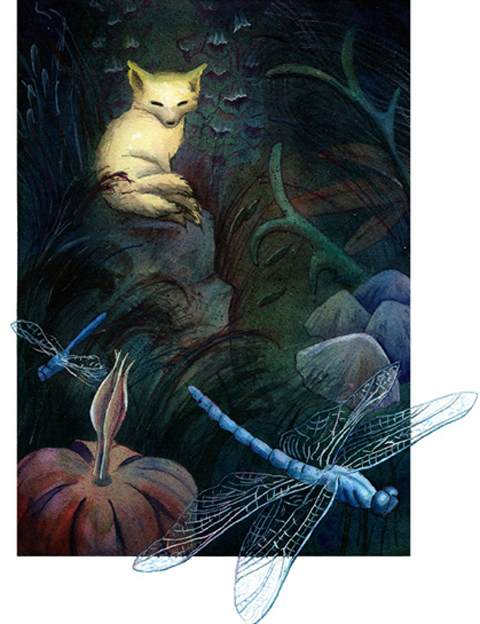
I know Lisa Mullarkey, but I didn’t know that her husband was writing with her now. Have you met Lisa?
No, sadly I have not had the pleasure. It’s so cool that you know her, though! I hope she and Mr. Mullarkey like the illustrations.
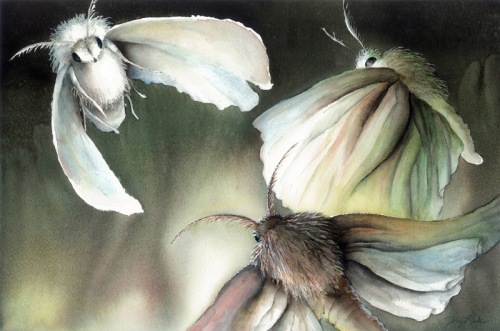
Do you have any other work planned with ABDO Publishing?
At the moment, no. As far as I can tell, the majority of the work they use is digital. The editor I worked with also left shortly after that book was finished.
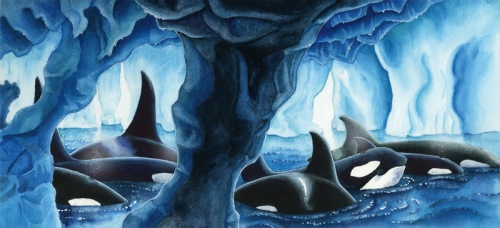
Do you plan on marketing your illustrations to other educational publishers?
I have, yes, and will continue to do so.
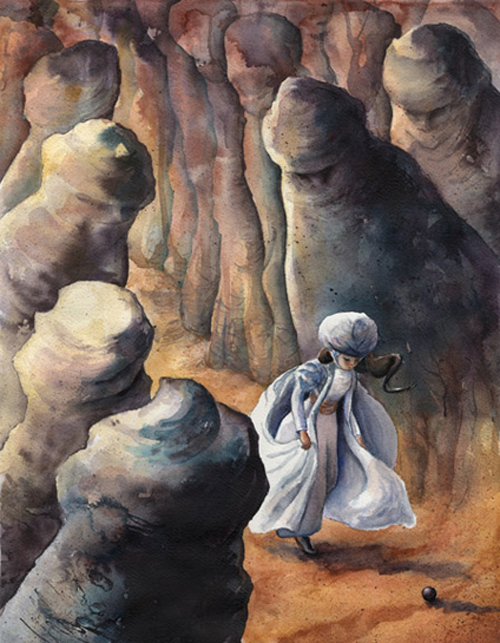
What was your first illustration success?
I did a t-shirt project for Ploughshares, and I was happy both with how the project turned out and how it was conducted, so I guess that was my first big success. Technically it was a design contest, but I and the other two artists were paid for our participation, and we all got to work with the wonderful editor Andrea Martucci to come up with designs that fit the magazine. The contest entries got so many online votes that Ploughshares decided to produce all three designs. So everybody won. Later that year I ran into Andrea at the Boston Book Festival, and she was just as nice in person as she’d been in her emails.
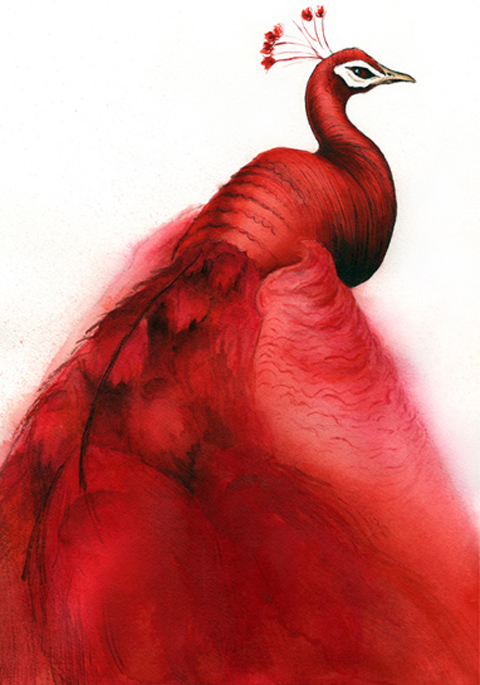
Do you think you will ever try to write and illustrate a picture book?
Oh yes, I already have and will continue to write more. I just haven’t gotten them published yet.

Have you done any illustrating for children’s magazines?
Yes, the main one has been Spellbound magazine. The editor and art director are both really great to work with and the magazine always has interesting, fantasy-related themes, so I always enjoy their assignments.
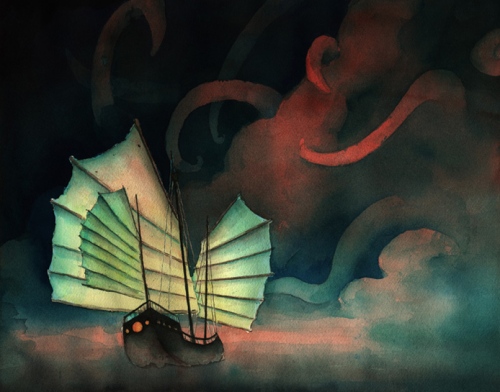
Do you have an artist rep or an agent? If so, could you tell us how the two of you connected? If not, would you like to get representation?
No, I don’t have one. I’ve heard some agent horror stories that made me wary of pursuing the matter. Obviously there are some amazing agents out there, but you are giving them a lot of power over the direction of your career. I can’t say I’d never be interested, but I would need to be confident that we were on the same page about where my work was going and how it would be represented.
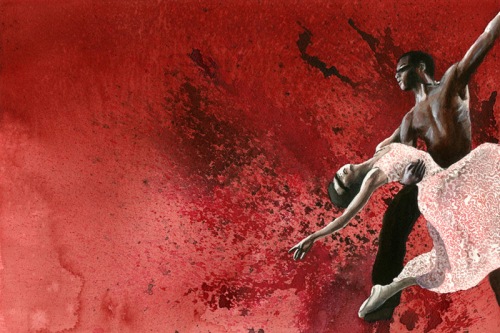
What types of things do you do to find illustration work?
I send out a lot of postcards and emails, meet people at conferences and events, and try to maintain a strong internet presence.
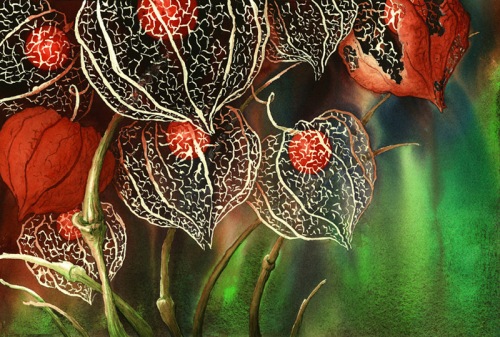
What is your favorite medium to use?
Watercolor
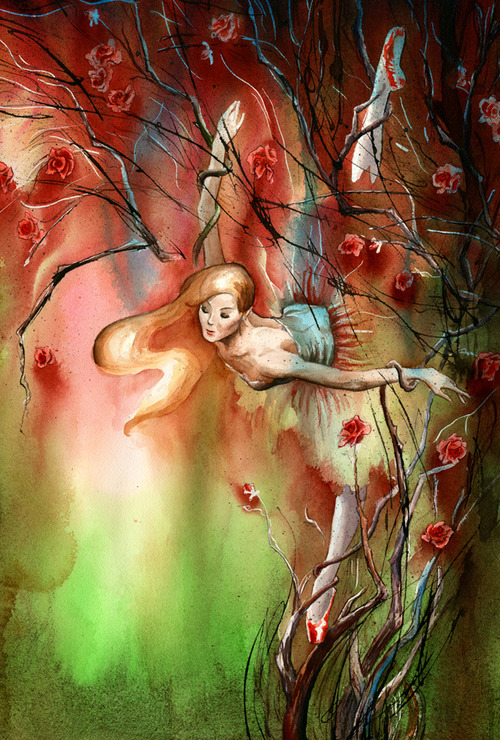
Has that changed over time?
No, but I’ve upgraded from the Crayola set. Now I use Winsor & Newton and Daniel Smith watercolors.
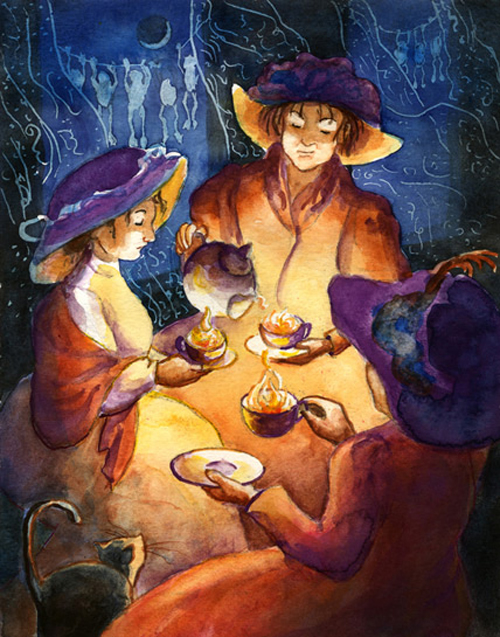
What is the one thing in your studio that you could not live without?
A cup of tea.
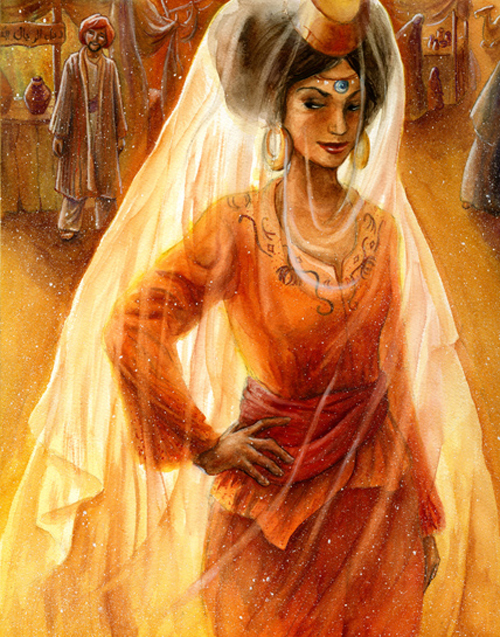
Do you try to spend a specific amount of time working on your craft?
I track the time I’m spending, but it’s usually not my goal to spend a specific number of hours. Instead, I review my time records now and then to help me evaluate things such as: how long did this project take and which part took longest, was the time well-spent, is there anything I’m repeatedly struggling over, when was I most productive, etc. This helps me figure out whether there’s anything I need to adjust in my routine.

Are you open to working with self-published authors?
Yes, cautiously open. Self-publishing has come a long way in the last decade, and there are some interesting projects out there that are too specialized for traditional publishing but can be successful as self-published books. I have worked with self-published authors in the past, and sometimes it was a great experience. Other times it was anything but.
Sometimes when authors pitch their projects to me, they say something along the lines of, “I have the whole book pictured in my head, and I know you’ll be able to paint it the way I see it.” But that is exactly what I cannot do, as I was born without mind-reading powers. I almost always turn these authors down, because I know they’re going to be disappointed once they figure out I’m not telepathic. (I wish I was joking about this, but it’s all too true.) Another problem I’ve run into is that authors may not realize just how massive an undertaking a book is. I’ve had authors offer me a few hundred dollars to do all the art and design work on a picture book, with no royalties, and they wanted me to sign away all rights into the bargain. They actually seemed to think it was a fair price.
Of course, there are also lots of brilliant authors who have done their research and have more realistic expectations. All in all, though, I am generally more willing to take on smaller self-publishing projects, such as novel and chapter-book covers, than I am self-published picture books. It’s simply less of a risk.
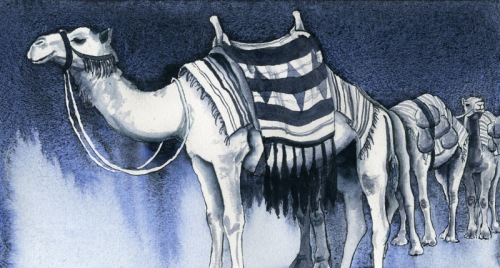
Do you take pictures or do any types of research before you start a project?
Yes, I do lots of research; in fact, I’m particularly drawn to projects where research is required. Investigating historic fashion, rare plants, and obscure legends is all part of the fun.

Do you think the Internet has opened doors for you?
Without a doubt. My whole business is conducted online.

Do you use Photoshop with your illustrations?
I do use Photoshop, but just for minimal editing, such as adjusting for contrast or stitching a piece together if it was too large for the scanner bed.
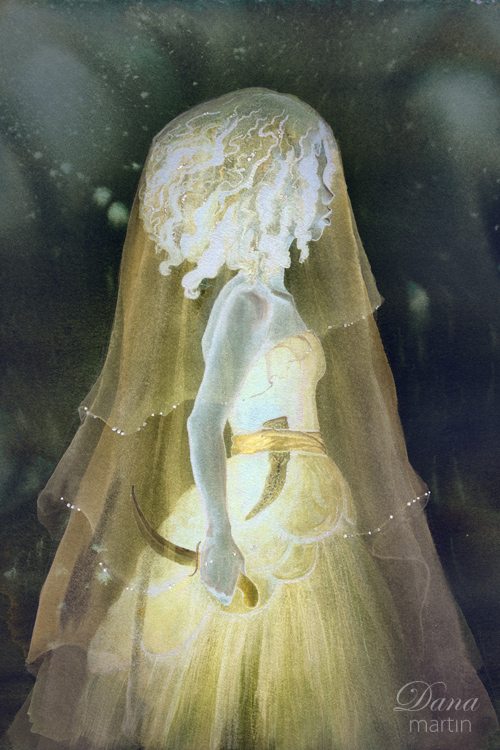
Do you own or have you used a Graphic Drawing Tablet in your illustrating?
I’ve used them, but so far I don’t need a tablet enough to invest in one.
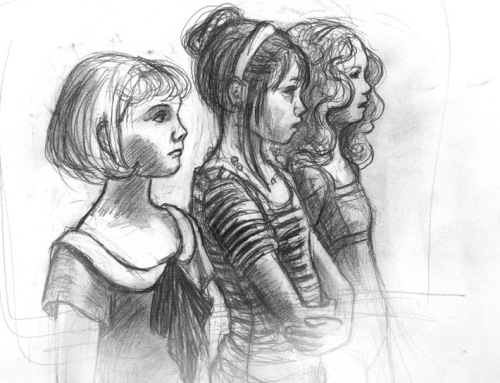
Do you find exhibiting your artwork gets you jobs?
No, because most of the shows I’ve been in have not been the sort that would attract editors and art directors.
Rather, the shows are their own experience. They’re an opportunity to interact with my audience and hear their thoughts on my work. I never know what to expect, but people have actually been extraordinarily positive and encouraging, and I always come back from a show energized to make more art.
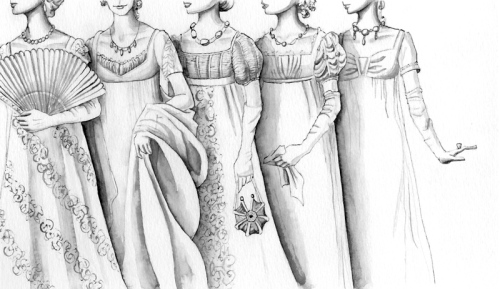
Do you have any career dreams that you want to fulfill?
Yes, so many! Bringing out my own picture book is the one I’m focused on at the moment.
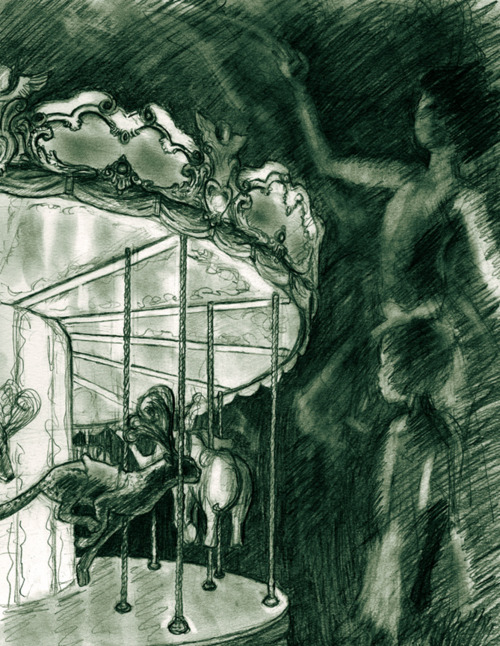
What are you working on now?
I have some small magazine assignments, but the projects I’m most excited about right now are actually personal ones. I’m working on a picture book manuscript set in Venice, and I’ve also started a new series of paintings. I’ve recently become fascinated with really limited palettes, so each of the paintings (which are based on some old stories) has a different dominant color. They’re also all set in different decades, because I wanted to explore some of the ways fashion has changed in the last hundred years.
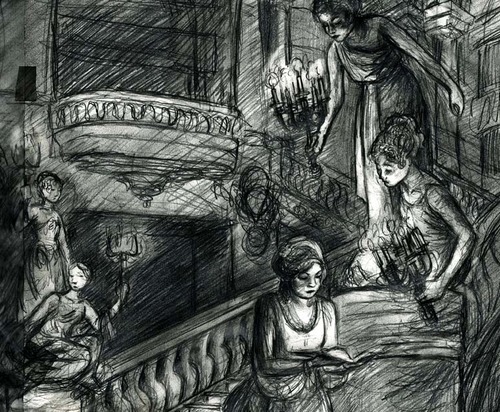
Do you have any material type tips you can share with us? Example: Paint or paper that you love – the best place to buy – a new product that you’ve tried – A how to tip, etc.
My painting methods can be hard on the paper, so I need something sturdy. Arches cold press is the paper for me. It stands up to washes, doesn’t tear from tape or masking fluid, has enough texture to get interesting effects with the paint, but not so much that it interferes with pen work.
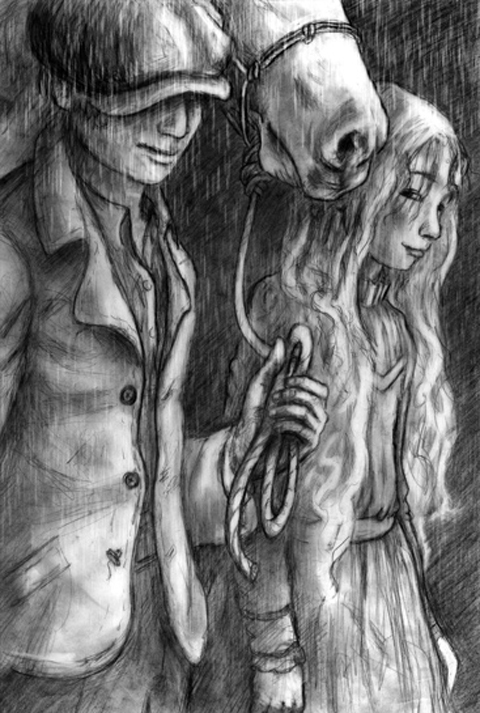
Any words of wisdom on how to become a successful writer or illustrator?
Everyone knows they have to work hard, but I don’t think everyone realizes how long they’ll be working hard. This is a marathon, not a sprint. It’s easy to neglect everything else in the pursuit of your craft, but over time that undermines you. Art has to be about something. If you cut yourself off from your friends, your hobbies, and whatever else fuels you as a person, you eventually will have nothing to say artistically. In the words of Gore Vidal, the unfed mind devours itself.
So keep an eye out for all the wonderful and interesting things that are happening around you and cultivate an agile mind. That, rather than any technical skill, is an artist’s greatest asset.
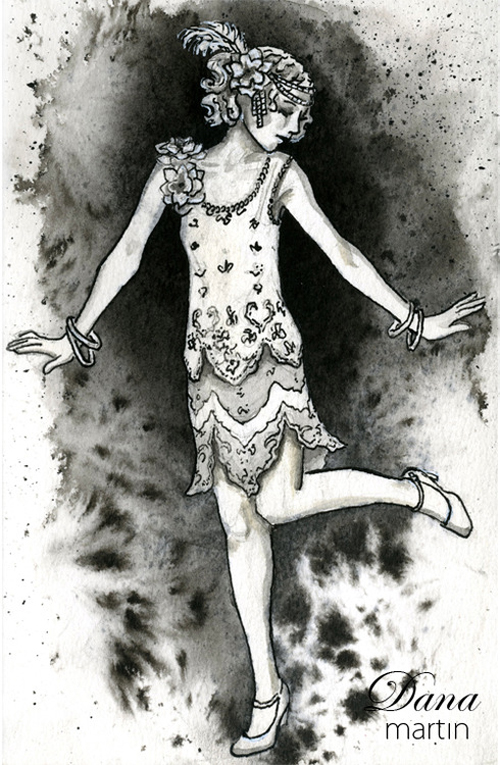
Thank you Dana for sharing your illustrations, journey, and process with us this week. We look forward to following your career, so please let us know of all your future successes.
You can visit Dana at www.dana-martin.com or find out what’s new with her on her blog at http://danamartinillustration.tumblr.com/
Please take a minute to leave Dana a comment. I am sure she would love to hear from you and I would appreciate it, too.
Talk tomorrow,
Kathy
Filed under:
Book,
illustrating,
Illustrator's Saturday,
inspiration,
Process,
Tips Tagged:
ABDO Publishing,
Dana Martin,
Liza Mullarkey,
Montserrat College of Art 


By: Kathy Temean,
on 4/14/2014
Blog:
Writing and Illustrating
(
Login to Add to MyJacketFlap)
JacketFlap tags:
Erika Wassell,
List of tips,
Tracking Submissions,
Tips,
list,
Advice,
Process,
submissions,
article,
Add a tag
HAVE A HAPPY PASSOVER HOLIDAY
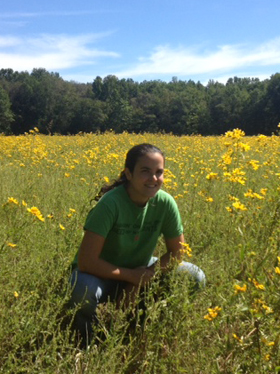 Tracking Submissions
Tracking Submissions
by Erika Wassell
Polished manuscript?
CHECK – one I’m proud of.
Research?
YUP – Found a few agents who are a perfect match.
Query Letter?
WRITTEN – Pitches my manuscript and myself.
There it is …
My finger hovers on the mouse. Hesitation. I KNOW this is a worthy story but maybe I shou—– ACK! I’m doing it!
CLICK. Message sent.
So that’s it right? Wave goodbye and cross my fingers? Not exactly.
While I definitely support leaning back and letting out that breath you may have been holding, you still have another important step… tracking your submissions.
First, the top three reasons WHY:
1) So you don’t query the same agent without realizing it: How long to wait before submitting to an agent again is another topic. But you certainly don’t want to do it by accident! Repeat submissions can look very unprofessional.
2) Follow Up: For many agents, no response, means it’s not for them. But in the research stage, you may find others that say at a certain point, it’s okay to reach out. Following up at the appropriate time shows that you’re dedicated and serious.
3) In case you get a yes! The best reason of all!! If an agent or publisher is interested in your work, you will want to inform everyone else it’s currently out to. (A) Because it’s professional courtesy. And (B), it can drum up additional interest and lead to the sort of “bidding war” that every author dreams of!!
Okay. So what exactly do I track?
Here’s the HOW:
My suggestion is use Excel. It’s easy to set up, and gives me data that is simple to keep track of, look back through and actually use – more so than the stack of scribbled on pieces of paper that form an ever-growing precarious tower next to my computer.
Here are the eight column titles that I use when tracking submissions:
First come the four most obvious:
Who: The name of the actual person I addressed the query letter to.
Where: The name of the agency/publisher, including its website for easy reference.
What: What manuscript did I send them?
When: Exact date that I hit the all-powerful SEND BUTTON.
These next four are not as obvious, but they’re JUST as important!
Why: A few notes about why the agent is a good fit for my manuscript, what interviews I read or what specific things made me query them.
Wait time: What their estimated timeline is. Most places give you an idea of how long it may take them to look over your query and whether or not they will necessarily respond. I note things like “no means no, 6-8 months” or “will respond within 10 weeks”.
Follow up: Often times, no response means not interested. But if I know someone is open to follow up, I make a note as to when to do that, and where I got the information. This way, in my follow up, I can say something like, “As per your interview with ____, I’m following up on the query I sent you three months ago.” IMPORTANT: When following up, I make absolutely sure that I don’t come off irritated. These agents work hard, and receive thousands of queries. I love when I’m able to follow up, so I make sure they know I appreciate the opportunity.
Response: If I get a rejection, or any sort of response, I make a note of when I got it and what was said.
It’s really just eight little columns in a spreadsheet, but it allows me to treat my writing professionally. I know what I’ve done, why I did it, and what I’m waiting on. And that’s really the best way to prepare for what I’ll do next.
When I hit that at-times-OH-so-unnerving SEND BUTTON, I’m comforted in knowing that my manuscript still has a tie to me, right here in my tracked submissions and is not just disappearing into the world of Ethernet cables and fiber optics.
I know your manuscripts deserve the same professional attention.
Thanks Erika for the valuable post. Erika has agreed to be a regular Guest Blogger for Writing and Illustrating.
Erika Wassall is a writer, a farmer and a liver of life. She is a member of SCBWI and a proud Mad Scientist, bringing science experiments right into children’s classrooms, and hearts. She has a small farm in New Jersey with sheep, chickens, pigs and vegetables. Check out her new website at www.TheJerseyFarmScribe.com where as a first generation farmer, she often takes the long way, learning the tricks of the trade on The Farm. On her website is also The Shop page with tips and a free Q/A from her husband’s mechanic shop, and The Writer page where she shares stories, experiences and characters from the heart. Follow her on Twitter at @NJFarmScribe. She’d love to hear from you!
Talk tomorrow,
Kathy
Filed under:
Advice,
article,
list,
Process,
submissions,
Tips Tagged:
Erika Wassell,
List of tips,
Tracking Submissions 


By: Kathy Temean,
on 4/11/2014
Blog:
Writing and Illustrating
(
Login to Add to MyJacketFlap)
JacketFlap tags:
Illustrator's Saturday,
Christopher Denise,
Anika Denise,
Baking Day at Grandma's,
Sleepytime Me,
Patty Gauch,
Tips,
inspiration,
illustrating,
authors and illustrators,
demystify,
Add a tag
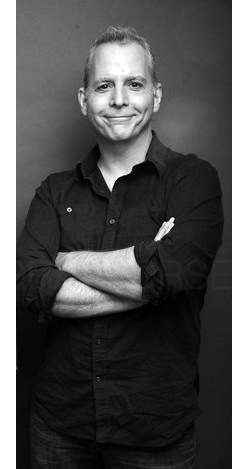
Christopher Denise is an award-winning children’s book illustrator and visual development artist. His first book, a retelling of the Russian folktale The Fool of the World and the Flying Ship, was pronounced “a stunning debut” by Publishers Weekly.
Since then, Chris has illustrated more than twenty books for children, including Alison McGhee’s upcoming Firefly Hollow, Rosemary Wells’ Following Grandfather, Phyllis Root’s Oliver Finds His Way, his wife Anika Denise’s Bella and Stella Come Home and some in Brian Jacques’ acclaimed Redwall series.
His books have appeared on the New York Times bestseller list and have been recognized by Bank Street College of Education, Parents’ Choice Foundation, and the Society of Illustrators Annual Exhibition.
Christopher Denise lives in Rhode Island with his family.
Christopher has two books coming out in the next few months. The first is SLEEPYTIME ME written by Edith Hope Fine coming out May 27th.
The second book, BAKING DAY at GRANDMA’S is written by his wife Anika and will be available in August.
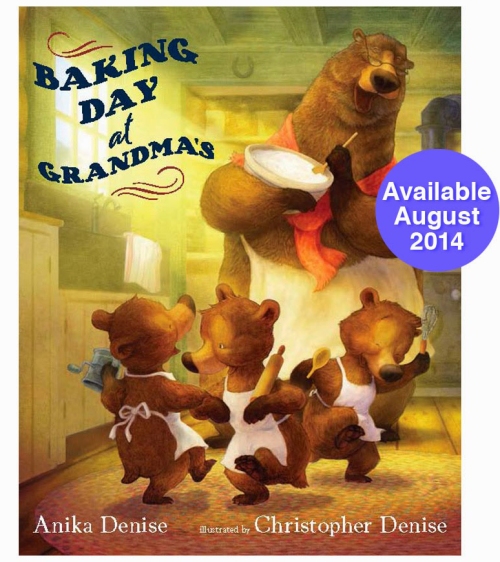
Christopher gives us a sneak peek of some of the interior shots below, with his process pictures on how he did a double page spread for the book. (Please check back later today. Christopher and I got our wires crossed with the process text. He is at a book festival and will be sending it as soon as he can get to Wi-Fi)

Rough sketch
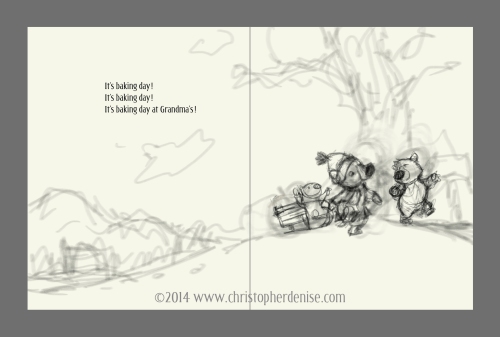
Adding more details
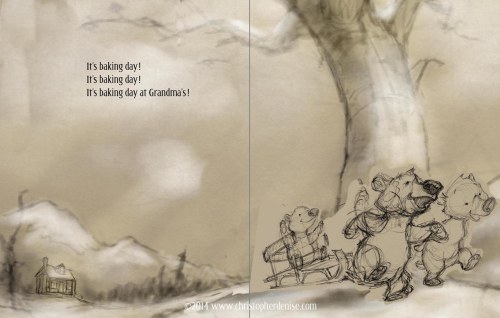
More details and first layer
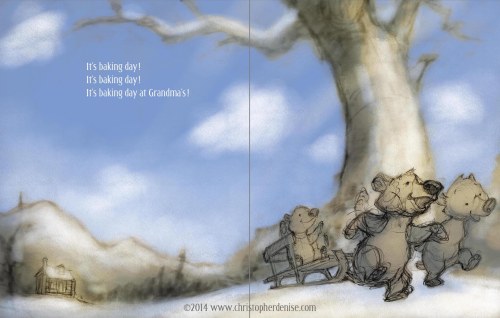
Laying in some color
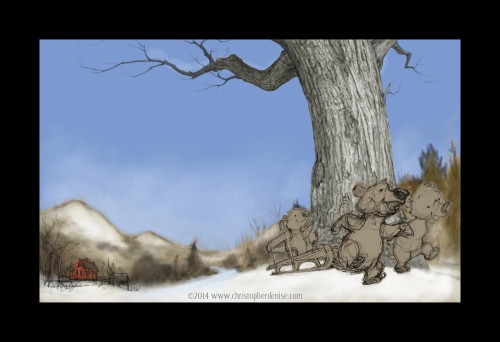
Refining details, inking in bark on tree, and deepening color of sky
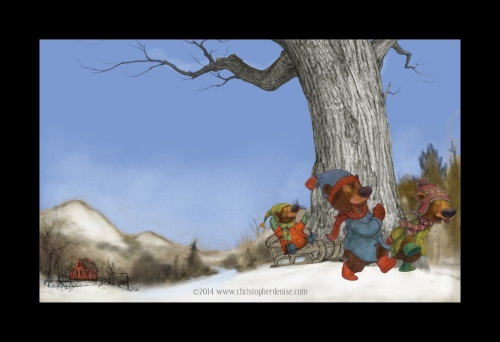
Painting in color on clothes
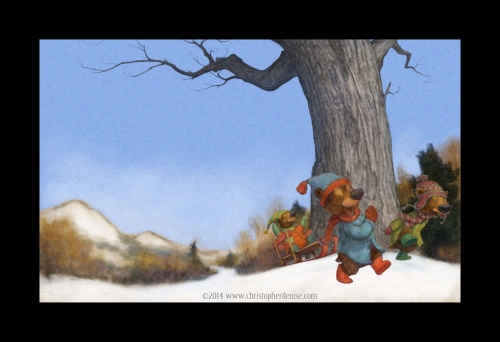
Worked on background and more detail on clothes
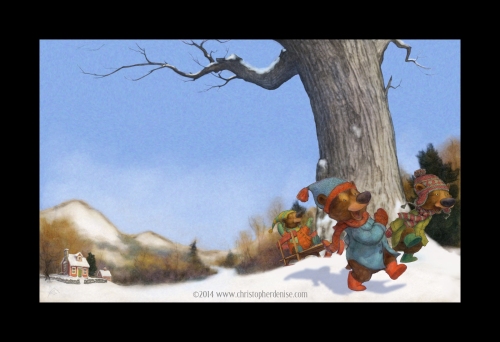
Adding shadows and details on house
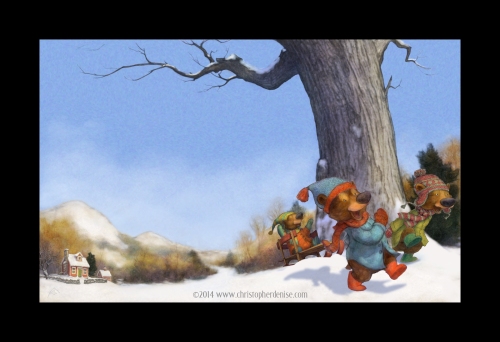
Continuing to deepen shadows and details

Adding highlights
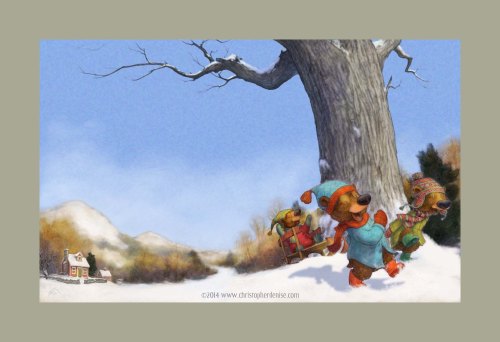
Deepening colors
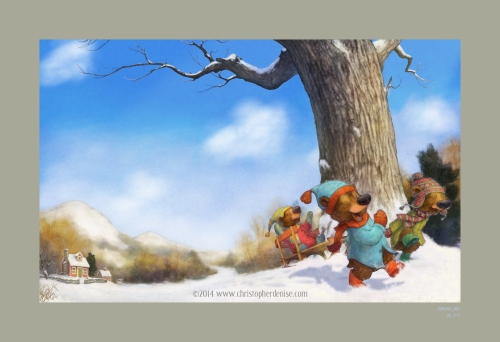
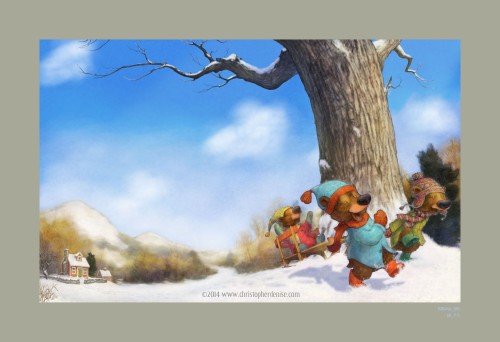
Adding color to tree.
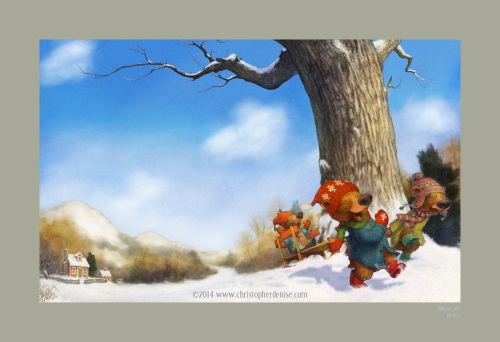
Changed my mind about the color of the clothes and added for detail to the final illustration.
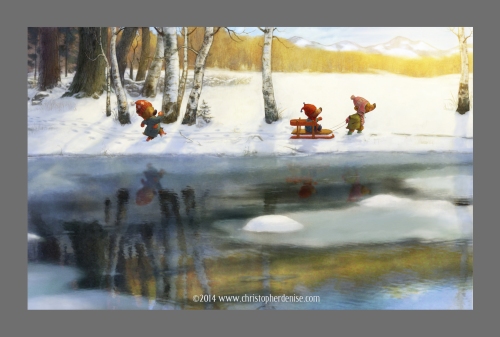
Above are the bears in this double page spread on their way to Grandma’s and below they are getting ready to bake.
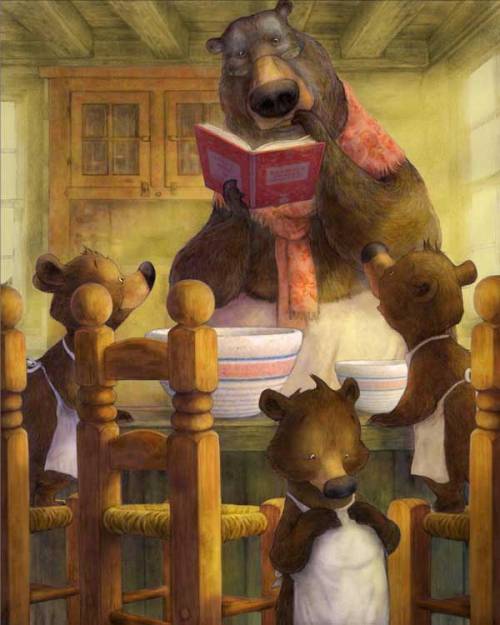
When did you first get interested in art?
As a kid! All kids love art-I just never stopped. I never let anyone talk me out of it-it is too much fun.
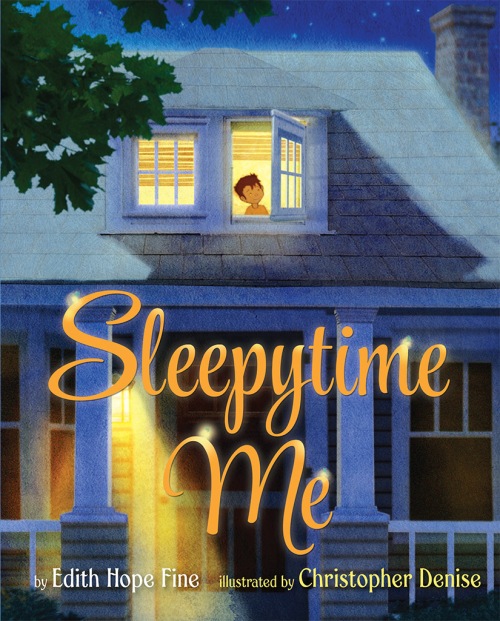
Why did your family move to Ireland from Massachusetts after you were born?
We moved to Ireland when I was six years old. My father had been working with General Electric and they offered him an opportunity to relocate and set up a headquarters in Shannon. He saw it not only as a great career opportunity but a chance to expose his kids to a very different way of life. This was in the early 70′s so Shannon was more like the States in the 50′s. It was an amazing place to spend some of my formative years.

What made you move back to the states?
He had completed much of what he set out to do and my oldest brother was preparing to enter high school and my parents thought it best to return to the states.

Do you feel Ireland influences your illustrations?
Absolutely. In Ireland we kids had an amazing amount of autonomy and unstructured time. Broadcast television began after 6pm and there was very little programing geared at children so we spent our days outside exploring the countryside and creating our own adventures. I look at the art I created for The Redwall picture books and I see so much of those childhood days.

Do you still have an Irish brogue?
Only after a very long dinner party with old friends!
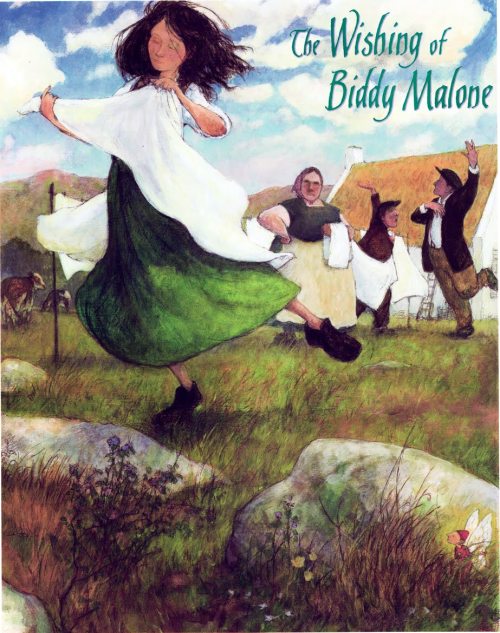
How did you decide to go to Rhode Island School of Design to study art?
After high school I was studying Art History and Archeology at St. Lawrence University. I was also spending a lot of time in art studio classes. It was fantastic and I was doing very well but I felt I needed more direction. My brother was studying architecture at RISD and after my first visit I knew that I needed to be there. While RISD students were dancing on the tables listening to The Talking Heads (very appealing to me) they were also having serious conversations about art and their own work.

What was the first piece of art that you sold?
I started freelancing for the Providence Journal in my Junior year at RISD. I created a series of black and white illustrations for a re-printing of A Child’s Christmas in Wales by Dylan Thomas.
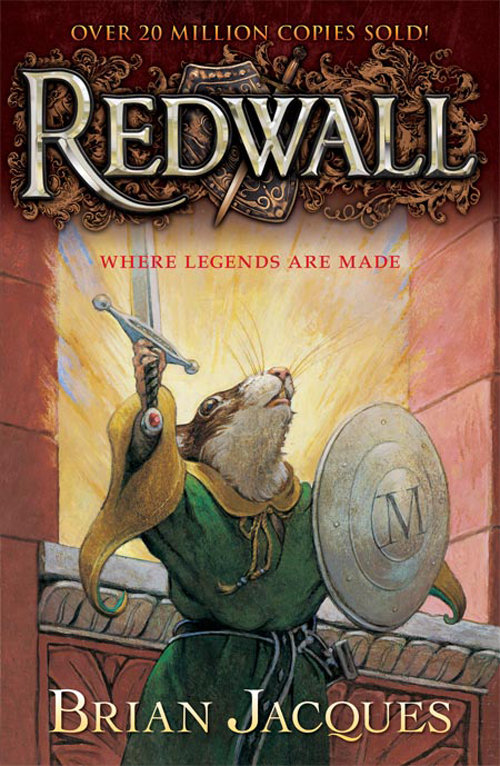
I read that you started illustrating books for educational publishers while you were still attending RISD. How did you make those connections?
I did and internship at Silver Burdett and Ginn, an educational publisher just outside of Boston. I was in charge of opening the submissions from artists and filing their promotional materials. It was not long before I realized that I wanted to be on the mailing end of the equation. When the internship finished I created my own mailers, asked the art directors to look at the work and for recommendations about where I might send them.
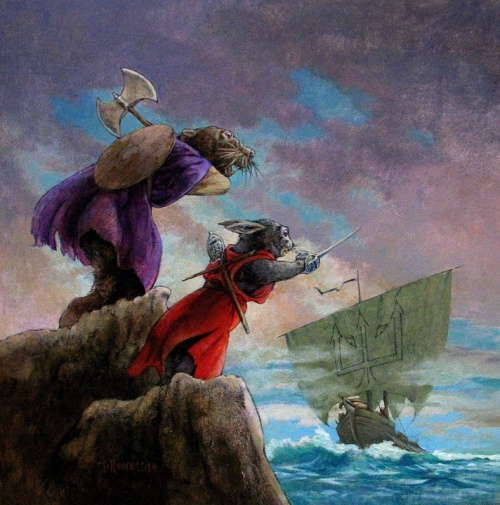
Did you always want to illustrate children’s books?
I never had any intention of becoming a children’s book illustrator, I sort of fell into the career. I knew I liked making art, so I left St. Lawrence University and transferred to Rhode Island School of Design. I remember while at RISD I had an assignment to create this illustration using an animal of our choice doing something specific. I think my animal was racoons and the subject was things you do at camp. Honestly, I Bobbaton Questthought I was way too cool to do something like that. I had been painting these big abstract paintings and when making illustrations they were always very cool and smart. But animals with clothes on? Forget it. I never finished the assignment. Fortunately, the teacher stayed on me and gave me another assignment. This time she had me illustrating scenes from Wind and the Willows. Somehow the writing grabbed me and became something that I could sink my teeth into. I really thought about the characters and what they should look like, their clothes, their houses, how they would walk and stand, etc. Then I surprised myself by really enjoying the process of making the art and people loved it. I ended up using those images to start my professional career when I was still a Junior in college to get freelance jobs with educational publishers. The rest is history.
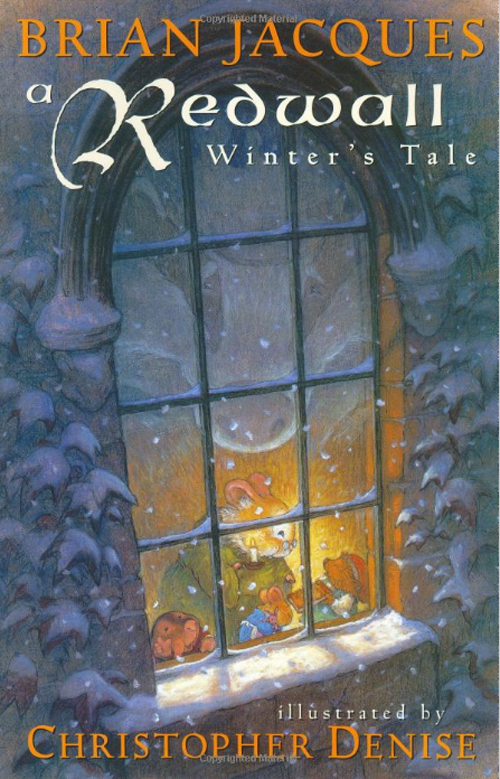
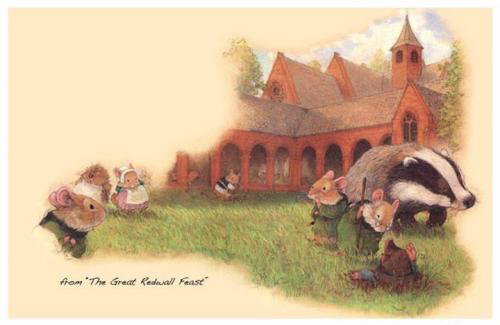
Were you continue doing freelance work when you graduated? Or did you take a job illustrating?
Since that day it has been all freelance work.


How did you connect with Philomel to illustrate your first picture book?
That was a friend of a friend situation. I heard that this person, whom I had met a few times socially, worked as an assistant editor at Philomel Books. She was incredibly generous and offered to look at my work. I don’t think she expected much but she actually liked my art and offered to take it down to the Art department. The Art Director promptly rejected it and told me to come back in a few years. Luckily she hung one of my mailers on her wall where it caught the attention of the esteemed editor Patti Gauch (Owl Moon, Lon Po Po). Patti called me up right there and asked when I could be in New York. I borrowed the cash for the train and within a week I was sitting in her office talking about books.
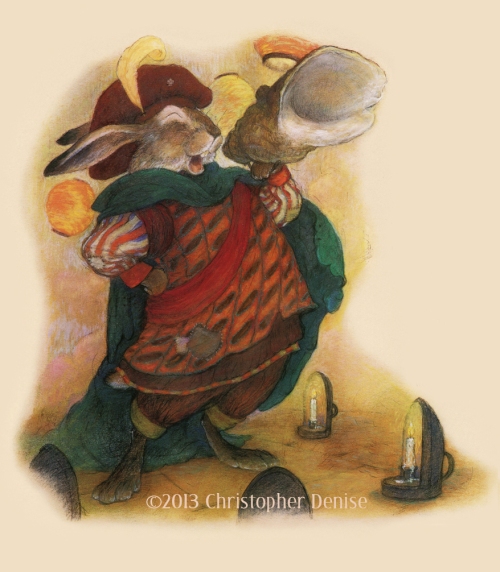
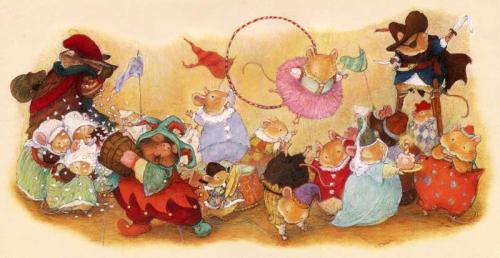
Your name is the only name for THE FOOL OF THE WORLD AND THE FLYING SHIP. Did you do the writing of the retold Russian tale?
Patti suggested that I consider illustrating the story of the fool and sent me on my way. The first edition I found was the Caldecott award winning version illustrated and retold by Uri Schulevitz. Lets not forget, that this is the guy who had literally written THE book on writing and illustrating picture books, Writing With Pictures. After being paralyzed with fear and then realizing there was no way out of this I started my research. I came across a wonderful version of the text by Petr Nikolaevich Polevoi published by St. Petersberg in 1874. Patti and I loved the language and just made a few minor edits. There is a note about the text on the last page of my edition.
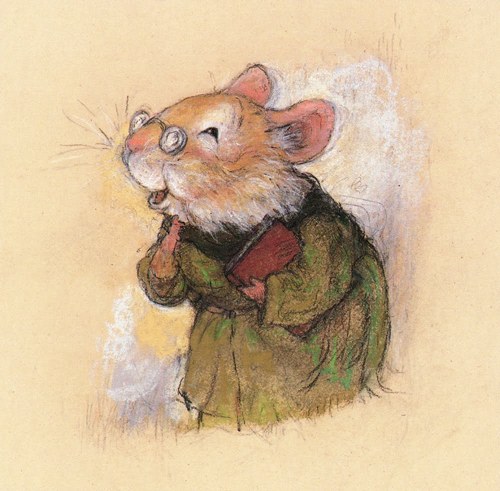

What was the next book that you illustrated and how did you get that assignment?
My next book was The Great Redwall Feast by Brian Jaques. Patti was Brian’s stateside editor and had been hounding him to write a picture book. Brian saw The Fool and wrote The Feast for me to illustrate. We quickly became close friends and I had the pleasure of working with him for many years. He is missed and I think of him often.
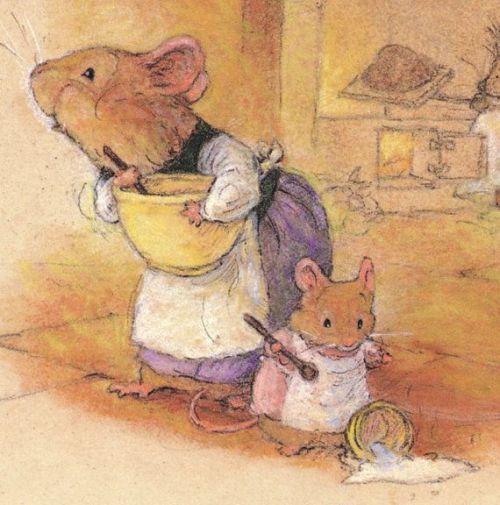
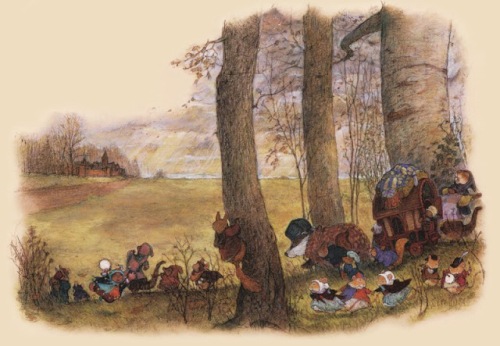
Did anyone hire you just to illustrate a cover for a book?
Yes, I created the artwork for Brian’s Castaways of the Flying Dutchman. I created two paintings for the cover but ultimately they were never used.

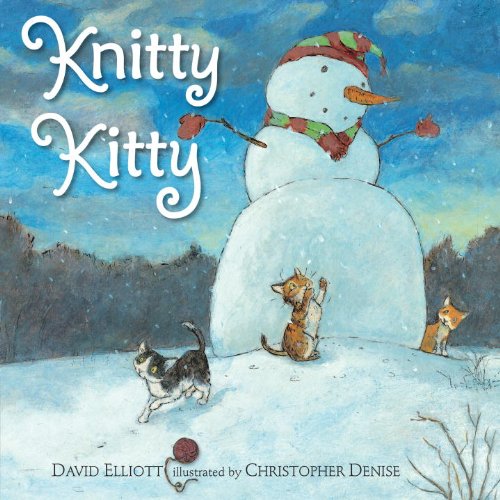
Did anyone hire you just to illustrate a cover for a book?
Yes, I created the artwork for Brian’s Castaways of the Flying Dutchman. I created two paintings for the cover but ultimately they were never used.
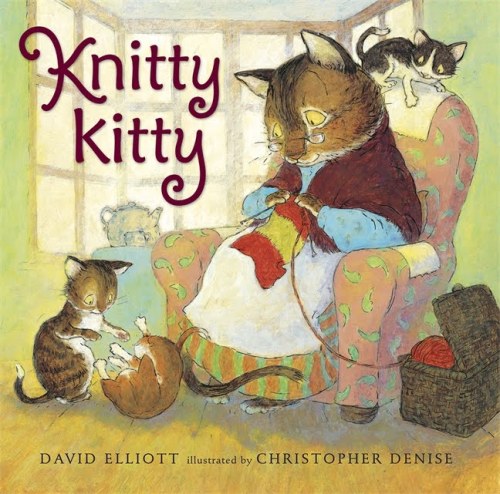
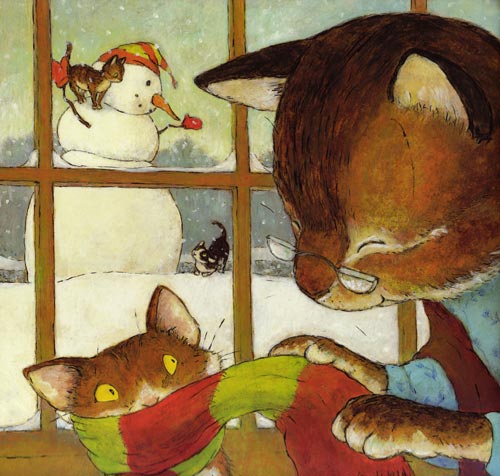
I see that your wife Anika is an author. How many books have you illustrated for her?
We have a really fun wintertime read-aloud book due out this August called Baking Day at Grandma’s (Philomel Books). That will be our third. Before that we collaborated on Pigs Love Potatoes (Philomel Books 2007) and Bella and Stella Come Home (Philomel, 2010). Both are still in print and seem to be popular!

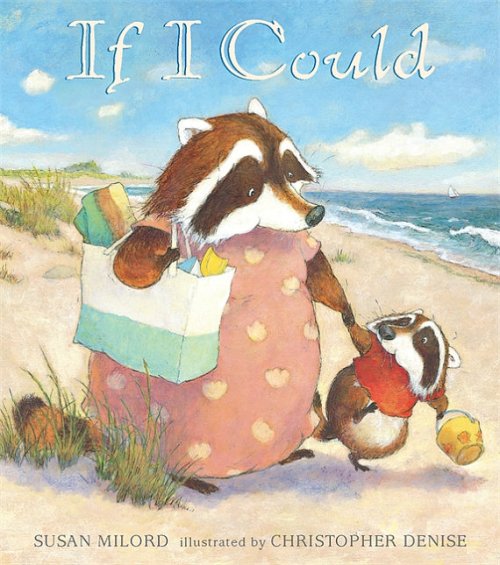
Do you have any desire to write and illustrate a picture book?
Desire-yes but I have not felt like I have had the chops to pull it off until recently. Writing a solid picture book, as many of your readers know, is incredibly difficult. I have a few things on my desk that are showing some promise and with the help of my incredible agent and friend, Emily vanBeek at Folio Jr., I am sure that a few of them will come to fruition at some point. Recently, I came up with the initial concept and art for a book that I tried writing but it was terrible! Thankfully, Alison McGhee (Someday, Bink & Gollie, Shadow Baby) came to my rescue and penned a gorgeous novel called Firefly Hollow that I am working on right now.
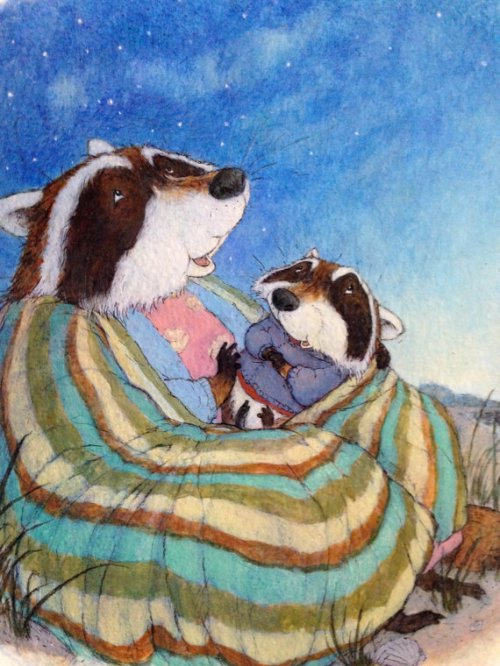
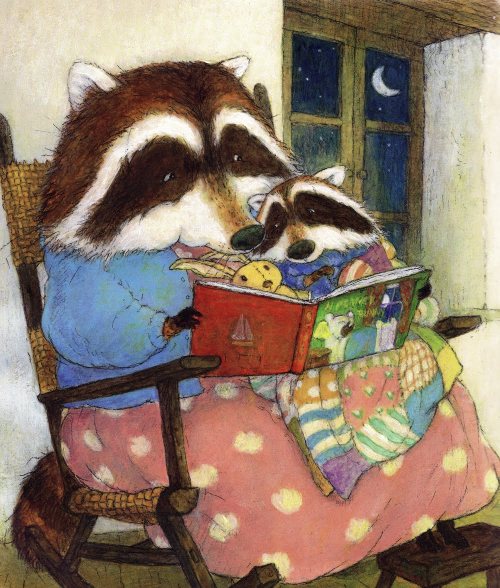
How and when did you get involved in visual development work for animated feature films?
A RISD alumni who knew my work called me to work on a project that was in development with Blue Sky Studios ( Ice age, Rio, Epic). I was part of a very small team of artists all outside the film studio creating images for what the film might look like. I ended up staying with the project for nearly a year. Its a beautiful story that I hope they make into a film someday!
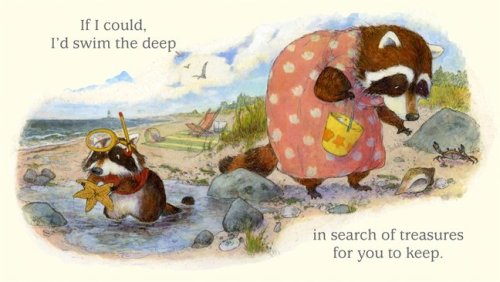
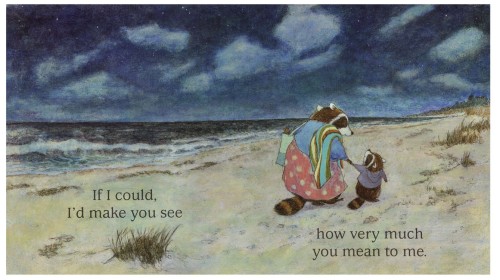
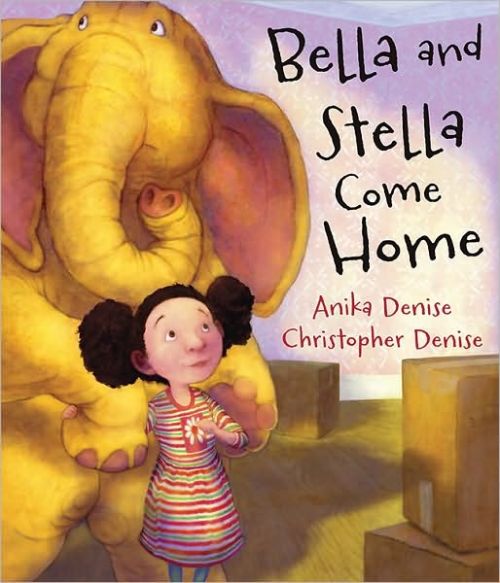
Which animated films did you work on?
Left Tern (Blue Sky studios), Beasts of Burden (ReelFx), a bit of work on Rio (Blue Sky studios) after it was already in production, and a few others that have not yet been made and I am not supposed to talk about!
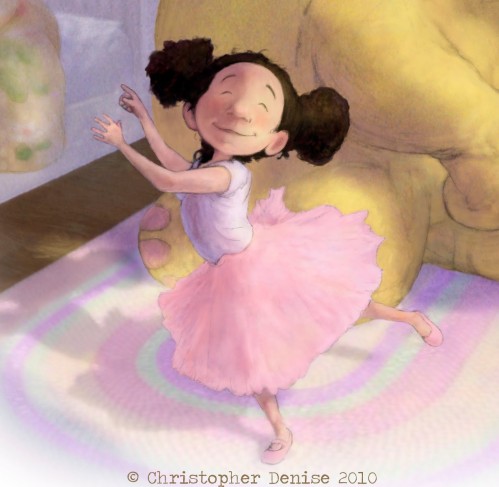

What is involved in visual development in animation?
Visual Development artists are called in to work with a director and/or production designer to help envision the look and feel of a film. You need to check your ego at the door, stay flexible, and work very, very quickly. I would turn out 20-30 paintings a week. Many loose, some more finished. Sometimes your paintings would be sent off to another artist to paint over and then sent back to you for work again. Often there is not a solid script and you are flying by the seat of your pants with a story summary and a few story beats (moments in a film) that you need to nail down. I love the collaborative aspect of the work and the idea that it is all about the story-not just making one or two pretty pictures.
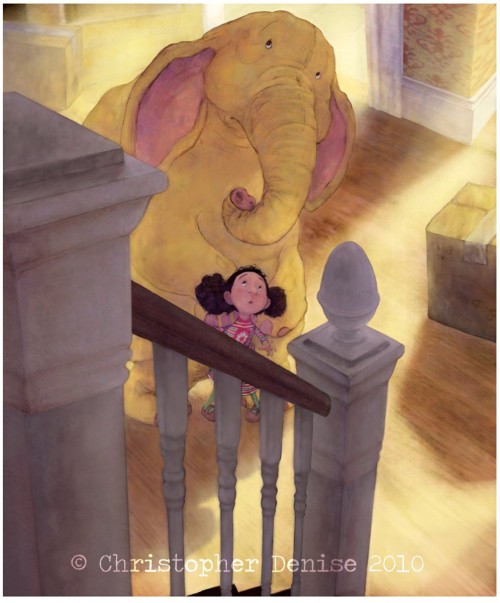
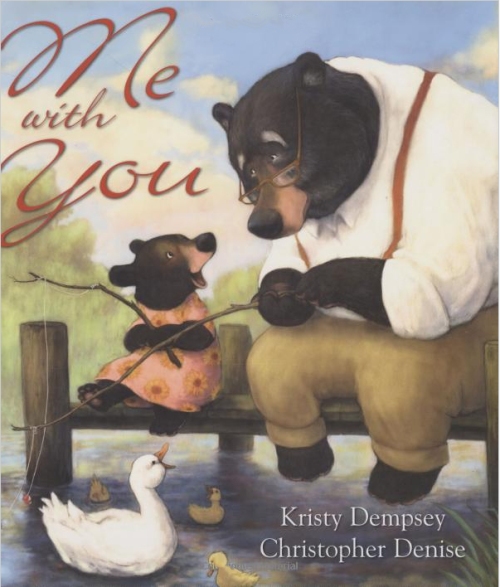
I noticed that you used pastels on one of your illustrations. Is that your favorite medium?
I love pastel work but really I love whatever is working for that particular book. Its always about the book on my desk and what it needs from me. I do enjoy the flexibility and speed of photoshop. I am impatient with my work and want to get to the good stuff as soon as possible. I need to get in there and start painting and changing things. Acting and re-acting. Photoshop is a wonderful tool for that type of work.
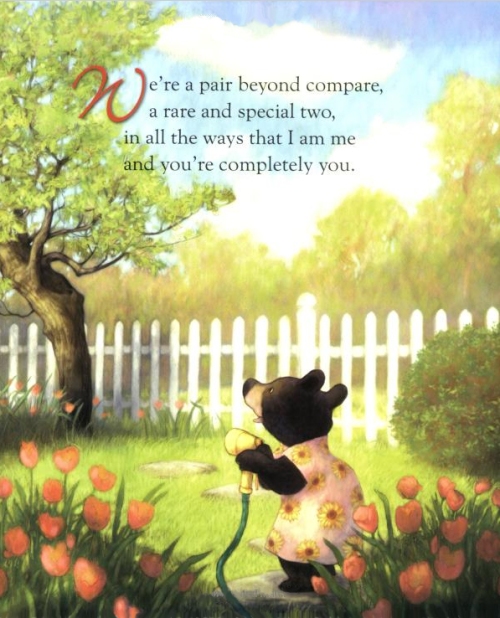
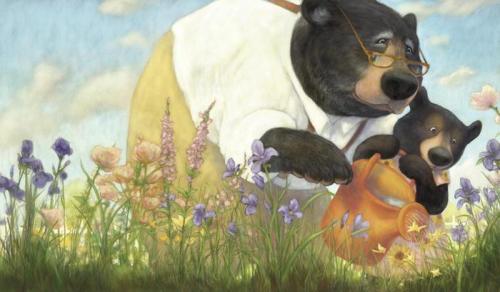
Has your style changed over the years?
Sure, with every book and the demands of each manuscript. Writing is hard and I think it would be a great disservice to the author and the story for me to impose a particular style on a book.

How did you connect with the lovely agent, Emily van Beek?
How long have the two of you been together? Emily and I met when I signed on with Pippin about 5 years ago. I was thrilled to re-connect with her later on when she started Folio Junior.
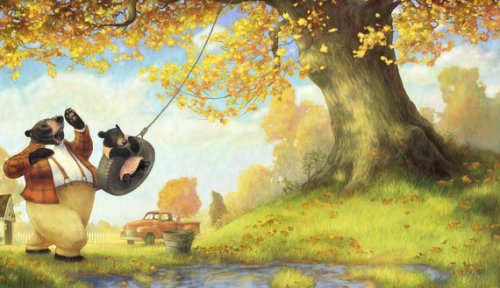
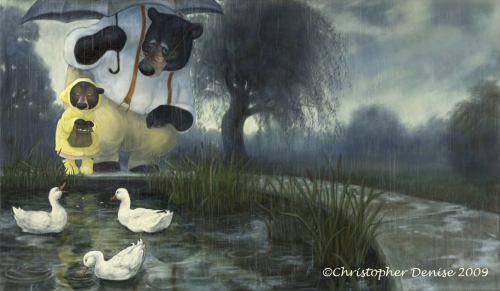
What do you think has been your greatest career accomplishment?
Wow. Tough question. Ask me again in about twenty years! A Redwall Winters Tale and Oliver Finds His Way would both rank pretty high up there for different reasons but I always think that I am only as good as my last book. I feel pretty good about the last year. I completed two books that I am VERY proud of. Sleepytime Me by Edith Fine (Random House, May 2014) and Baking Day at Grandma’s (Philomel, August 2014)
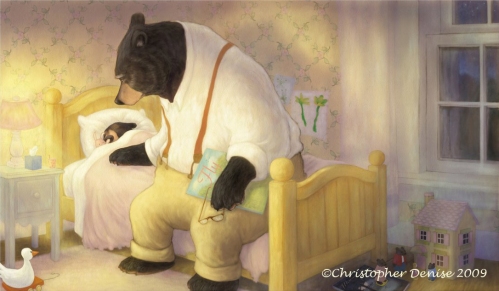
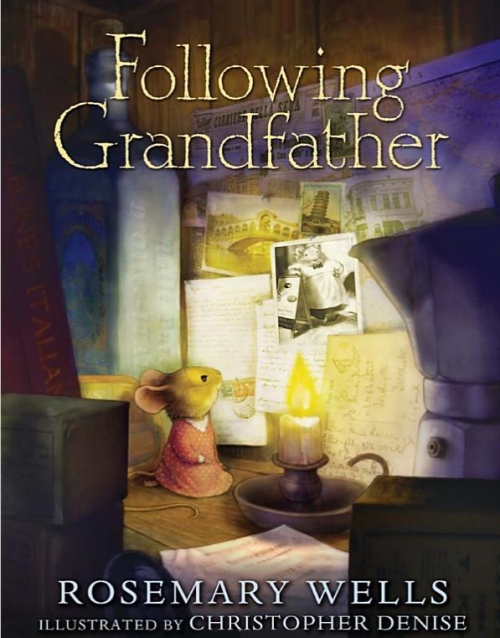
How many children books have you illustrated?
About twenty two I think. A few of the titles were created for educational publishers then re-published for the regular trade market.
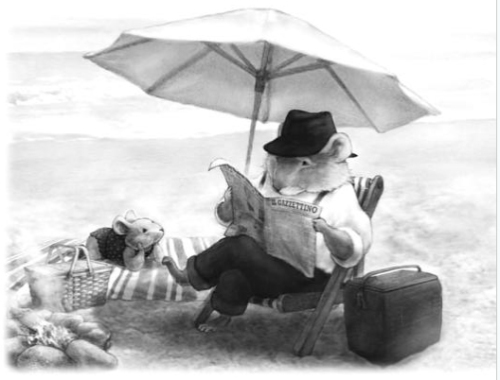
How did you get involved in illustrating the Redwall series of books?
Patti Gauch was responsible for showing Brian Jacques my work. Thanks, Patti!
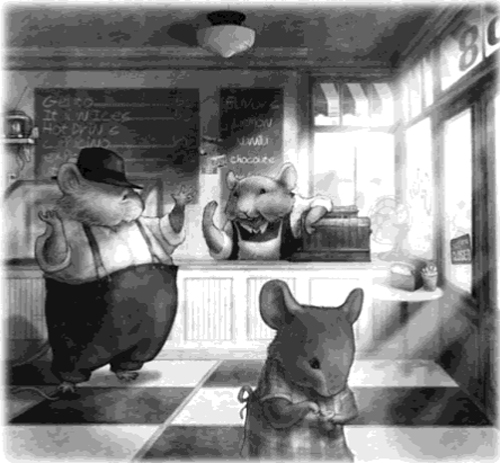
How many of those books have you illustrated?
I illustrated three books for the the Redwall picture-book series. The Great Redwall Feast (Philomel 1996), A Redwall Winters Tale (Philomel 2001), and The Redwall Cookbook (Philomel 2005)
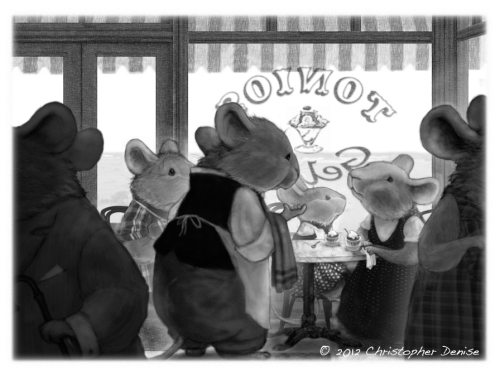
It looks like you have done a lot of books with Philomel. How many books have you illustrated for them?
Nine books with Philomel so far.
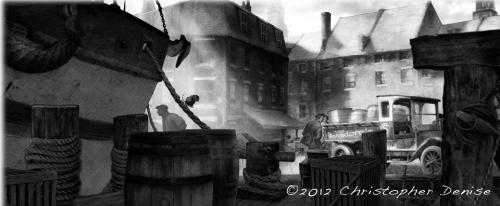
OLIVER FINDS HIS WAY was published by Candlewick. How did that contract come about?
Chris Paul at Candlewick called me up out of the blue one day and said she had a project that she would like me to consider. They are just up in Somerville so I drove up for lunch and met with Chris and the wonderful Mary Lee Donovan. I knew right away that I wanted to work with them. Candlewick is a fantastic house, beautiful books, super nice people.
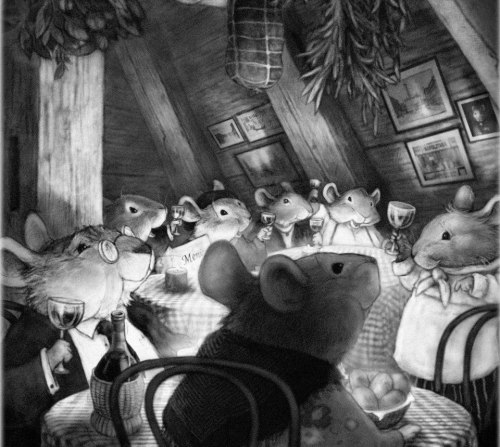
I think Jane Yolen lives near you. Did you know her before you illustrated THE SEA MAN? Was that the only Merman you have illustrated?
I did not know Jane before I illustrated The Sea Man, but of course I knew Jane’s work. We just saw each other at Kindling Words in January and since then have talked about the possibility of working together again. Yes-that was the very first Merman I was asked to illustrate.
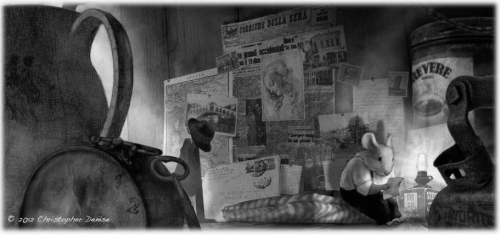
Do they have a studio in your house?
My studio is about 15′ from my back door in a separate building that I re-built just three years ago. For years I had studios in Providence. Downtown is only about twelve miles away from the little beach-side community where we live but the drive home, late at night if I was working on deadline or a film project, was not fun. It was convenient when I was teaching at RISD but I was also missing my wife and the kids. I like to be able to quit at 4:00, spend some time with my family, have a glass of wine, dinner, read to the kids, and put them to bed. After that I walk back out to the studio for another session. Making books is hard work but my family life and walks on the beach keep me anchored and very happy.
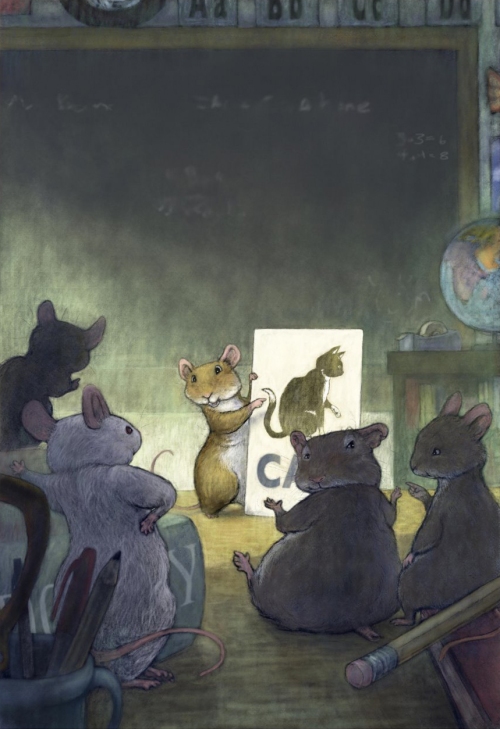
I was able to see some of your wonderful black and white interior drawings that did you do for Rosemary Well’s book, FOLLOWING GRANDFATHER. How many did you do for the 64 page book?
Gosh, I don’t remember-quite a few! I loved working with Rosemary and since then we have become good friends.
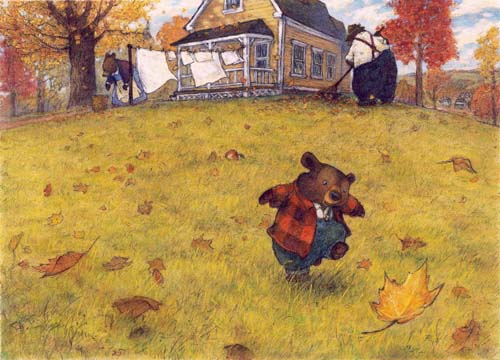
Have you done illustrations for any children’s magazines?
Yes, I think I did work for Ladybug magazine. I may have done work for Cricket.
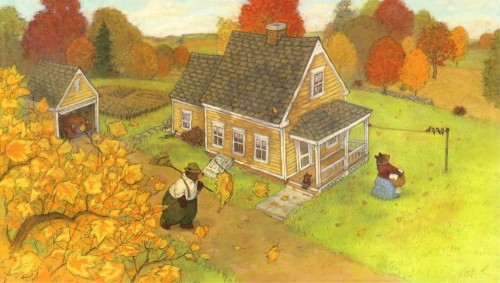
Your new book coming out in May titled, SLEEPYTIME ME is beautiful. How did you get that contract with Random House?
I was working with Elena Mechlin at Pippin and she brought the manuscript to me. Edith’s (Fine) writing is so wonderful. That was another fantastic project. Random House gave me lots of support and complete freedom.
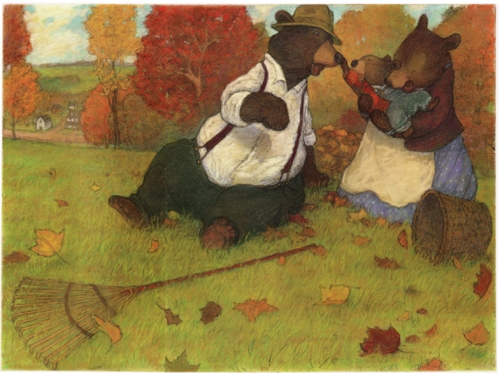
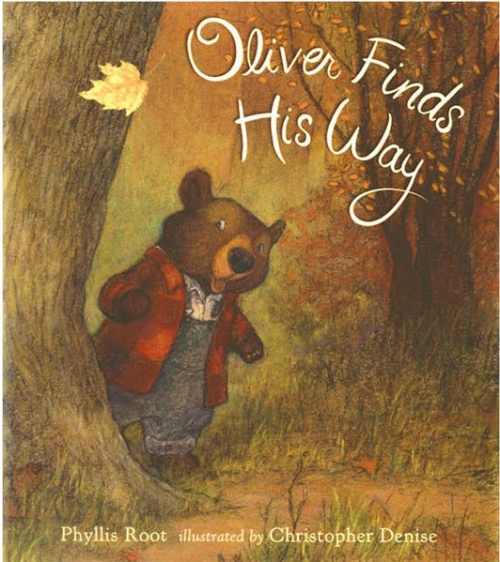
How long did you have to illustrate that whole book?
I created that suite of images in about six months. They were long days but I loved the work.
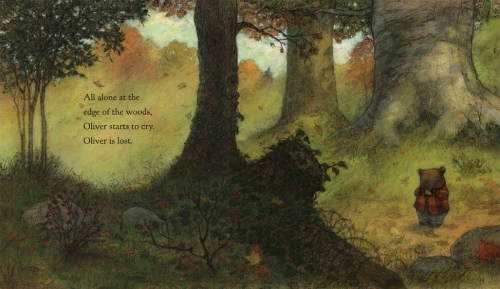
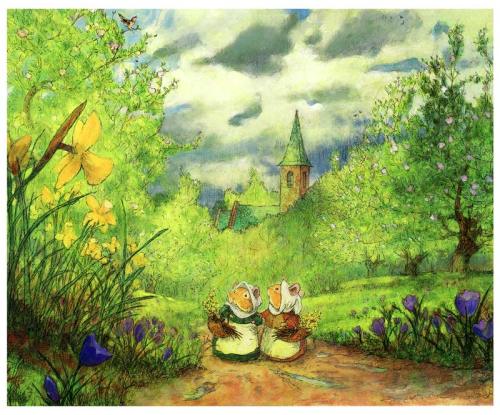
What types of things do you do to find illustration work?
Not so many things personally. Emily, my agent, makes sure that I have plenty on my plate. I work closely with her making sure that we have a plan and chart out the production schedule. Our biggest challenge is leaving some blocks of time off-especially in the summer

What is the one thing in your studio that you could not live without?
My sketchbook-no doubt.
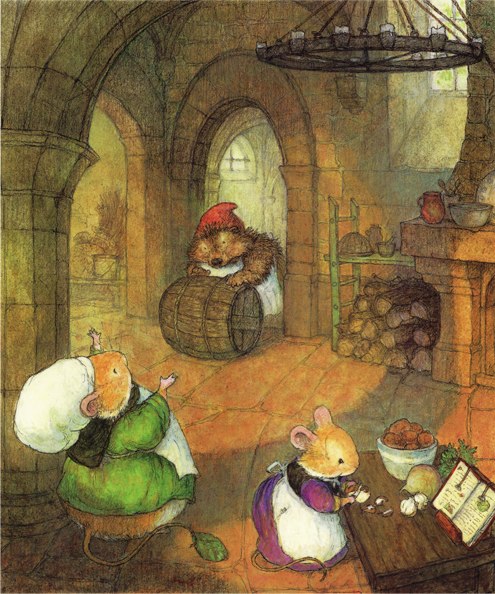
Do you try to spend a specific amount of time working on your craft?
I do try to take some time in the summer to go landscape painting. But in truth I work on my craft every single day. I try to start each session as a novice.

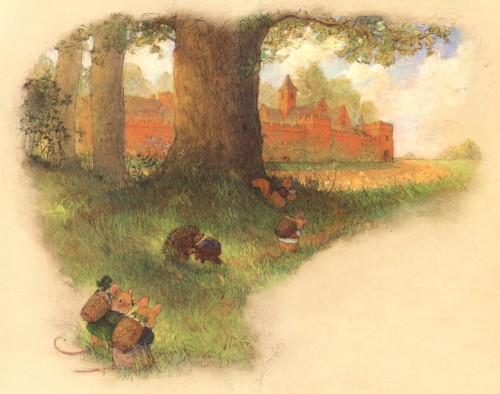
Do you take pictures or do any types of research before you start a project?
I do take some pictures. I browse books ( fine art, photography, other picture books) from my own shelves and the library-seeing what comes to me. The internet, of course, is amazing.
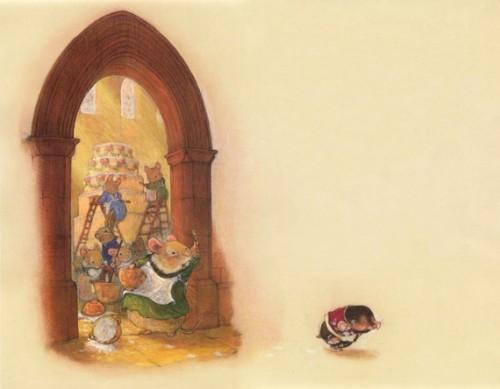
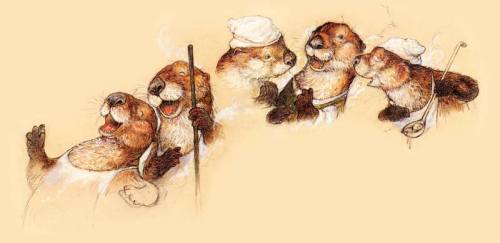
I notice that you are doing the illustrations for Betsy Devany’s debut picture book, SMELLY BABY. Both of you are represented by Emily van Beek. I can’t wait to see the illustrations. Great match-up! How was Emily able to get you two together?
This is one of the great things about Emily. We were talking about what I wanted to work on, scheduling and such and she was already thinking way ahead of me about what would serve us (because we are most definately a team) professionally but also allow me to stretch artistically. She called me up a few days later and asked how I felt about working on something funny and emailed Betsy’s manuscript for Smelly Baby. I read it through and forced my self to wait for ten minutes before I said YES!


Have you won any awards that you are particularly proud of?
Yes but it has nothing to do with publishing! I was nominated for the Frazier award in teaching at RISD. That nomination was particularly meaningful to me because it is the students who vote for the few nominees that make the cut. That was such an honor because I loved working with such wonderfully talented young artists and I put my heart in soul into teaching those classes. Of course I am grateful and honored when any of my books receive recognition.
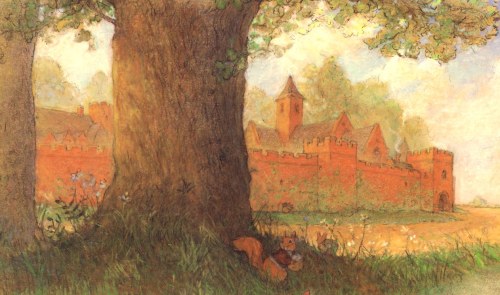
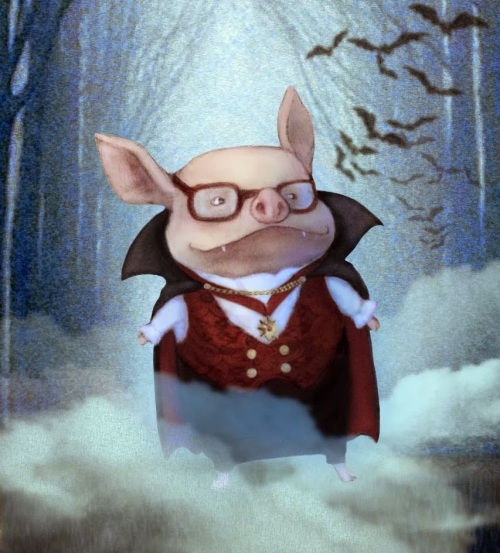
Out of all the books you have illustrated, do you have a favorite?
Another tough question. The books are like my girls, they are all my favorites for different reasons. If I had to choose I would choose four. Pigs Love Potatoes (Anika Denise) Oliver Finds His Way (Phyllis Root), Sleepytime Me (Edith Fine), and Baking Day at Grandma’s (Anika Denise).
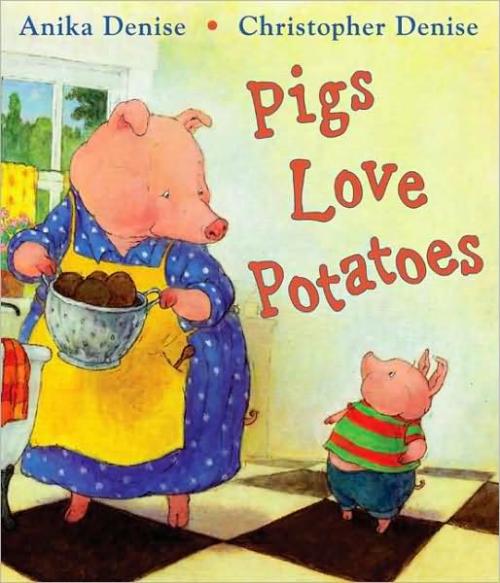
Do you use Photoshop or a graphic tablet when illustrating?
I paint and draw in Photoshop using a medium size wacom intuos tablet and pen.
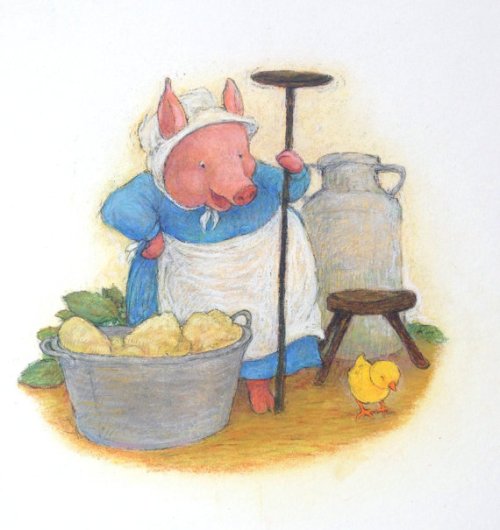
Do you have any career dreams that you want to fulfill?
I am in the process of doing just that! I spend my days drawing pictures and coming up with stories. How great is that?!
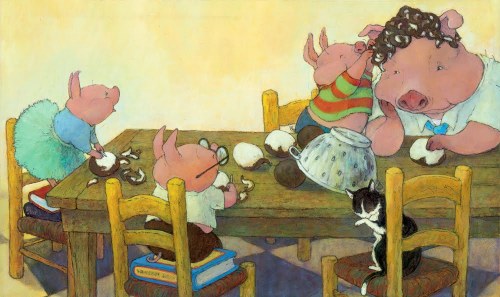
What are you working on now?
Firefly Holly ( Simon & Schuster) an illustrated novel by Alison McGhee, and Betsy Devany’s picture book Smelly Baby (Henry Holt & Company)
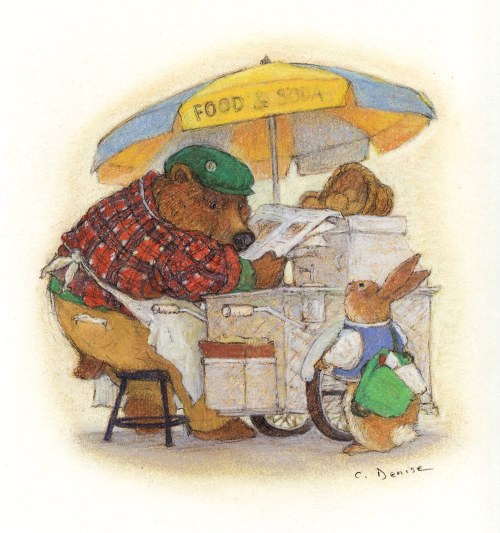
Do you have any material type tips or software type tips you can share with us? Example: A new product that you’ve tried – A how to tip, etc.
I think my breakthrough with digital tools came when I stopped trying to “learn” the software and started to think of using photoshop to replicate my traditional process. To use the program in the same way as I used my traditional tools. Same layering process, same ways of applying color. Make the digital tools work for you-mistakes and all. In the end you have more flexibility and can change things. Also-be brave and create your own brushes to get the effects that you want.
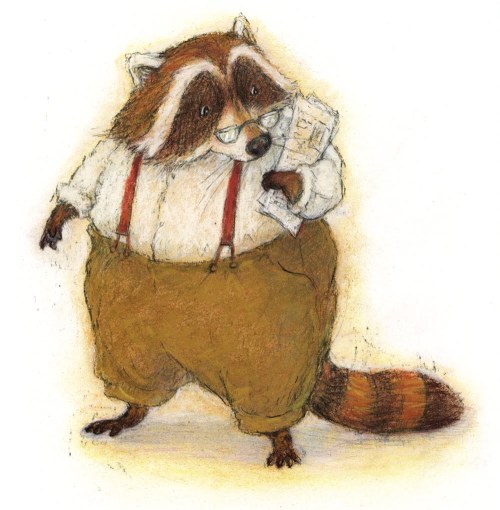
Any words of wisdom on how to become a successful writer or illustrator?
Trust your instincts. Do what you need to do to get by but after that point do not be afraid to say no to something if your heart is not in it.

Thank you Christopher for sharing your talent, process, expertise, and journey with us. Please keep in touch and let us know all of your future successes. We would love to hear about them.
You can visit Christopher at: http://www.christopherdenise.com You can link over to his blog and his Etsy shop where he sell original artwork.
facebook at: http://www.facebook.com/pages/Christopher-Denise-Illustrator
I really appreciate it when you leave a comment, so please take a minute to leave Christopher a comment. Thanks!
Talk tomorrow,
Kathy
Filed under:
authors and illustrators,
demystify,
illustrating,
Illustrator's Saturday,
inspiration,
Tips Tagged:
Anika Denise,
Baking Day at Grandma's,
Christopher Denise,
Patty Gauch,
Sleepytime Me 


By: Kathy Temean,
on 4/7/2014
Blog:
Writing and Illustrating
(
Login to Add to MyJacketFlap)
JacketFlap tags:
Tips,
Events,
list,
inspiration,
Advice,
Debbie Dadey,
Simon & Schuster,
Dream of the Blue Turtle,
Tresaure of Trident City,
Add a tag
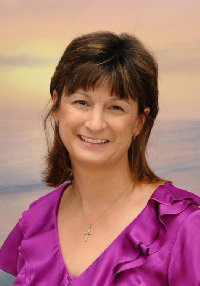 My Little Magic Box by Debbie Dadey
My Little Magic Box by Debbie Dadey
It took me about twenty years to figure it out, but making a magic box to take with me to book events was a great idea! Okay, it’s not magic but it does have everything I need to make a book signing or school visit go smoothly. What does my little plastic container have inside? Here’s what I’ve collected for my little 6.5 by 4.5 inch box (a left-over from my teaching days):
1. Business cards (Because the minute you don’t have one, you need one.)
2. Tissues (Because boogers are not pleasant with 200 kids watching!)
3. Book plates (Someone will always cry because they forgot their book.)
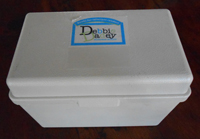 4. Award winning author stickers (Which I bought in a silly moment, but kids like stickers.)
4. Award winning author stickers (Which I bought in a silly moment, but kids like stickers.)
5. Sticky notes (Because kids have the strangest names these days and it’s better to write it first on a note than ruin the book-better yet have the school or bookstore do it for you while the kids are waiting in line.)
6. Tic Tacs (Bad breath is not an author’s friend.)
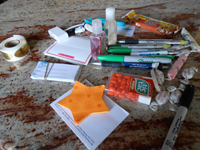 7. Protein bar (Let’s face it, sometimes school lunches are horrible.)
7. Protein bar (Let’s face it, sometimes school lunches are horrible.)
8. Candy (see above)
9. Cough drops (A coughing fit really doesn’t work well with my presentation.)
10. Hand lotion (It makes me feel better!)
11. Hand sanitizer (It keeps me from catching every illness because schools are breeding grounds!)
12. Chap stick (I am prone to fever blisters and they aren’t pretty.)
13. iPad adapter (I started taking my iPad on school visits instead of my laptop and I love it.)
14. Clips to hold up something (Just a handy thing to have for posters.)
15. Memory stick with presentations (Some schools have their computers far away. I also have a clicker to advance slides. There is an app available to advance Keynote-the iPad version of PowerPoint. PowerPoint will convert to Keynote, but there are always a few adjustments to be made.)
16. Slips for information (These are leftovers from a giveaway and everyone likes free stuff.)
17. Rubber band (These come in handy for keeping my rolled up posters tidy.)
18. Markers or ink pens (Some people like Sharpies to autograph with, but I’m not picky).
Missing from my box are my fun red Author pin, camera, book signs, bookmarks, a bottle of water, and school visit brochures. Not all of them will fit inside my box, but I have them listed in marker on the inside of my box so I don’t forget them. Something I’ve been wanting to get is a tablecloth with my logo and maybe some book covers on it. On my scheduling page (http://www.debbiedadey.com/Events/Scheduling/index.php)
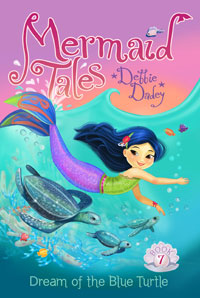 I have an Author Visit Checklist that lists everything I could think of to help a school prepare for my visit. Click Here to View.
I have an Author Visit Checklist that lists everything I could think of to help a school prepare for my visit. Click Here to View.
Perhaps there is something on it you can adapt for yourself. Do you have more suggestions for my box? Please let me know, I have more book events coming up soon!
Check www.debbiedadey.com for one near you.
My newest book is Dream of the Blue Turtle (Mermaid Tales #7) with Simon and Schuster. Treasure in Trident City (#8) comes out in May. I hope you’ll like me on Facebook.com/debbiedadey. I’m hoping it doesn’t take me twenty years to get the hang of Facebook!
Thanks Debbie for sharing your idea for having a handy box that you can grab whenever you do a book event. It will definitely help everyone who has a hard time juggling everything that has to be done in our busy lives.
I love the idea of getting a table cloth made with your logo and covers. They don’t cost very much and it really adds to making you look exciting and professional.
Talk tomorrow,
Kathy
Filed under:
Advice,
Events,
inspiration,
list,
Tips Tagged:
Debbie Dadey,
Dream of the Blue Turtle,
Simon & Schuster,
Tresaure of Trident City 

There are 10 easy ways (in my opinion) to keep up the pace (or suspense/tension) of a novel. This can be for any book to keep the reader clipping along and turning the pages.
10 steps to a page turner
1) Create short chapters - most of mine are 1500 to 2000 words. (It can't be 250 word chapters with 1000 chapters in the book. Thats' just annoying :)
2) End on the conflict, forcing the reader into the next chapter. (I call it the inverted climax curve! I'm smart huh?)
3) Keep your narrative short. At the end, go through and cut back scenes with too much setting or exposition. I say try to cut them in 1/2. (Actually, I should do this in my conversations as well. I'm sure my friends would appreciate it.)
4) Use short sentences when you want reader to feel rushed into reading. Longer sentences help to slow it down and create tension as well as a break before you ramp back up again. (I call this the roller coaster feeling. Make your reader sick :)
5) Add a ticking time bomb. This can be an actual time countdown or a lead in to knowing something is coming soon. (This even works in the ebay auctions I bid on. There's just something about a clock that creates stress.)
6) Create a strong opening line in every chapter that yanks the reader in. (I tend to spend more time on this than I do finding my dangling modifiers. I do not recommend that :)
7) Create strong closing lines that tease the reader to turn the page. (Do not let them put that book down! If you have to drag them on to the next chapter by their bookmarks)
8) Torture your MC - have her make mistake so actions get thrown back in her face. (I talk to my MC. "Oh you think that's bad, wait until I give you this!" I know I'm nutzo)
9) Raise the stakes each time it looks like resolution may be about to happen. (Give your reader the feeling of "oh thank God" and then take them to "WHAT the hell!"
10) Allow room to breathe. (You don't want them to pass out. Not good PR....But not too much room :)
Feel free to ask me questions! :)

By: Kathy Temean,
on 3/31/2014
Blog:
Writing and Illustrating
(
Login to Add to MyJacketFlap)
JacketFlap tags:
Agent,
Tips,
list,
Advice,
article,
illustrating,
authors and illustrators,
How to,
Directory of Illustration,
Freelance Pricing,
Friend + Johnson,
Joann Miller,
Add a tag


You may know Joann Miller over at the Directory of Illustration. Well, she asked Friend + Johnson (illustration representation agency) if she could share the best advice they had about pricing that they would give an illustrator. I thought I would share the part about how to come up with a price for a potential client. It is quite good.
Here is a list of questions to ask your potential client to help create an accurate estimate that fulfills both their expectations and your needs.
Introduction
1. How did you find out about me? Is there something in your portfolio that inspired them to think of you for this project? Make sure you understand exactly what they’re referencing so you can make sure you’re comfortable executing it, and are clear on what they’re hiring you to do. This will also help you determine the level of complexity of the illustration they’re looking for.
Project Description
2. Do you have a layout? How complex are the illustrations? Are they single-spot illustrations or more complex scenarios? Are they providing any references for you to use? Are they looking for you to concept illustration ideas with the creatives, or are you working from a pre-approved layout that will not allow for much change? Is this black-and-white or a four-color piece? Are you working in layers?
3. What is the timing for the initial pencils and the final illustration? Usually, you should have three to four days for the initial pencils, and after client approval, another five to seven days to deliver the final. Two rounds of pencils are standard; anything more should have an additional charge.
Usage, Licensing and Copyright
4. Usage is very important in helping you price your project. Note that consumer advertising will be priced much higher than illustrations for a children’s book or direct mail.
Does the client want national, regional, international, web or worldwide uses? How long is the usage? What is the media use: consumer ad, trade ad, packaging, direct mail, billboards, brochures?
5. If clients say they want unlimited use, you should explore if this is really what they need and offer alternative licensing to match their budget. Often times, clients are not “educated” in this area of rights-based pricing; they will be much more understanding if you take the time to outline that they will ultimately save money by purchasing just the usage they need. For example, if they see the difference in cost for a two-, three- or five-year use, this may be more in-line with what they really need vs. unlimited use/time.
Most clients aren’t planning on a consumer magazine campaign or any out of home use, they may just want unlimited collateral (direct mail and consumer or trade brochures and inserts) use. Find out specifically what they’ll use the artwork for and tailor your pricing to match.
6. If at all possible, never do “work for hire,” give buyouts or sell your copyright. You’re essentially giving away all of your rights as the creator of the artwork and giving ownership to your client. They in turn can reuse and resell the artwork in any way they want.
You can still retain your copyright even if it’s unlimited use, worldwide for an unlimited time and exclusive to them. If they feel they may need the artwork for other uses down the road or for a longer period of time, these extended uses can be renegotiated or factored into the original contract as well.
Remember, they want to use you and you want to work with them. This is a negotiation to give them what they need and pay you fairly for the creation and use of the work. You’re working together to create a fair contract for both parties.
7. Will this image have resale potential in stock or other markets? Does your licensing give you this option?
Keep Budgets & Other Paperwork in Mind
8. Editorial and book clients usually have a predetermined budget. Sometimes you can renegotiate if you feel it’s too low for the amount of work they’re requesting. You should always get a credit line for editorial or pro-bono work.
9. Do they have an allotted budget already in mind? If not, when do they need numbers?
10. Is there a contract? You should have your own contract in addition to anything they supply.
Hang Up
11. Never give an estimate while you’re on the phone with your client. It’s best to hang up and think about what you’re comfortable with.
12. Review your estimate before submitting it. A great source for guidelines for estimating various projects is the “Graphic Artists Guild Handbook” at www.graphicartistsguild.org/handbook/.
Post-Submittal
13. After you have submitted your estimate and it’s approved, make sure to have it signed and sent back to you.
14. After the project is confirmed, you should bill 50% of the job. This is important for cash flow since illustration projects can stretch over a number of weeks with the back-and-forth for approvals. This is also important with a new client that you don’t have a payment history with.
15. In addition to billing upon confirmation AND having a new client sign your contract, you may want to get a purchase order from you client as it is a contract to purchase your services from your buyer.
To read all the other helpful information use this link: http://joannsartadvice.blogspot.com/2014/03/take-charge-of-pricing-your.html
Talk tomorrow,
Kathy
Filed under:
Advice,
Agent,
article,
authors and illustrators,
How to,
illustrating,
list,
Tips Tagged:
Directory of Illustration,
Freelance Pricing,
Friend + Johnson,
Joann Miller 


By: Kathy Temean,
on 3/30/2014
Blog:
Writing and Illustrating
(
Login to Add to MyJacketFlap)
JacketFlap tags:
How to,
Jerry Seinfeld,
Acheive Your Goals,
Secret of Productivity,
Stop Procrastinating,
The Seinfeld Strategy,
Tips,
writing,
Advice,
article,
Add a tag
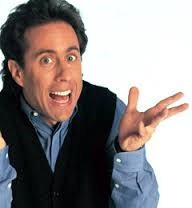 What’s most impressive about Seinfeld’s career isn’t the awards, the earnings, or the special moments — it’s the remarkable consistency of it all. Show after show, year after year, he performs, creates, and entertains at an incredibly high standard. Jerry Seinfeld produces with a level of consistency that most of us wish we could bring to our daily work.
What’s most impressive about Seinfeld’s career isn’t the awards, the earnings, or the special moments — it’s the remarkable consistency of it all. Show after show, year after year, he performs, creates, and entertains at an incredibly high standard. Jerry Seinfeld produces with a level of consistency that most of us wish we could bring to our daily work.
Compare his results to where you and I often find ourselves. We want to create, but struggle to do so. We want to exercise, but fail to find motivation. Wanting to achieve our goals, but — for some reason or another — we still procrastinate on them.
What’s the difference? What strategies does Jerry Seinfeld use to beat procrastination and consistently produce quality work? What does he do each day that most people don’t?
I’m not sure about all of his strategies, but I recently discovered a story that revealed one of the secrets behind Seinfeld’s incredible productivity, performance, and consistency.
Let’s talk about that what he does and how you can use the “Seinfeld Strategy” to eliminate procrastination and actually achieve your goals.
The Seinfeld Strategy
Brad Isaac was a young comedian starting out on the comedy circuit. One fateful night, he found himself in a club where Jerry Seinfeld was performing. In an interview on Lifehacker.com, Isaac shared what happened when he caught Seinfeld backstage and asked if he had “any tips for a young comic.”
Here’s how Isaac described the interaction with Seinfeld:
“He said the way to be a better comic was to create better jokes and the way to create better jokes was to write every day.
“He told me to get a big wall calendar that has a whole year on one page and hang it on a prominent wall. The next step was to get a big red magic marker. He said for each day that I do my task of writing, I get to put a big red ‘X’ over that day.
” ‘After a few days you’ll have a chain. Just keep at it and the chain will grow longer every day. You’ll like seeing that chain, especially when you get a few weeks under your belt. Your only job is to not break the chain.’ “
You’ll notice that Seinfeld didn’t say a single thing about results.
It didn’t matter if he was motivated or not. It didn’t matter if he was writing great jokes or not. It didn’t matter if what he was working on would ever make it into a show. All that mattered was “not breaking the chain.”
And that’s one of the simple secrets behind Seinfeld’s remarkable productivity and consistency. For years, the comedian simply focused on “not breaking the chain.”
Let’s talk about how you can use the Seinfeld Strategy in your life.
How to stop procrastinating
Top performers in every field — athletes, musicians, CEOs, artists — are all more consistent than their peers. They show up and deliver day after day, while everyone else gets bogged down with the urgencies of daily life and fights a constant battle between procrastination and motivation.
While most people get demotivated and off-track after a bad performance, a bad workout or simply a bad day at work, top performers settle right back into their pattern the next day.
The Seinfeld Strategy works because it helps to take the focus off of each individual performance and puts the emphasis on the process instead. It’s not about how you feel, how inspired you are or how brilliant your work is that day. Instead, it’s just about “not breaking the chain.”
All you have to do to apply this strategy to your own life is pick up a calendar and start your chain.
A word of warning
There is one caveat with the Seinfeld Strategy. You need to pick a task that is meaningful enough to make a difference, but simple enough that you can get it done.
It would be wonderful if you could write 10 pages a day for your book, but that’s not a sustainable chain to build. Similarly, it sounds great in theory to be able to deadlift like a maniac every day, but in practice you’ll probably be over-trained and burned out.
So step one is to choose a task that is simple enough to be sustainable. At the same time, you have to make sure that your actions are meaningful enough to matter.
For example, researching good jokes each day is simple, but you’re never going to write a joke by merely researching. That’s why the process of writing is a better choice. Writing can actually produce a meaningful result, even when it’s done in small doses.
Similarly, doing 10 pushups per day could be simple and meaningful depending on your level of fitness. It will actually make you stronger. Meanwhile, reading a fitness book each day is simple, but it won’t actually get you in better shape.
Choose tasks that are simple to maintain and capable of producing the outcome you want.
Another way of saying this is to focus on actions and not motions.
Mastery follows consistency
The central question that ties our community together — and what I try to write about every Monday and Thursday — is “how do you live a healthy life?” This includes not merely nutrition and exercise, but also exploration and adventure, art and creativity, connection and community.
But no matter what topics we’re talking about, they all require consistency. No matter what your definition is of a “healthy life,” you’ll have to battle procrastination to make it a reality. Hopefully, the Seinfeld Strategy helps to put that battle in perspective.
Don’t break the chain on your workouts, and you’ll find that you get fit rather quickly.
Don’t break the chain in your business, and you’ll find that results come much faster.
Don’t break the chain in your artistic pursuits, and you’ll find that you will produce creative work on a regular basis.
So often, we assume that excellence requires a monumental effort and that our lofty goals demand incredible doses of willpower and motivation. But really, all we need is dedication to small, manageable tasks. Mastery follows consistency.
Written by James Clear at Entrepreneur.com
Take tomorrow,
Kathy
Filed under:
Advice,
article,
How to,
Tips,
writing Tagged:
Acheive Your Goals,
Jerry Seinfeld,
Secret of Productivity,
Stop Procrastinating,
The Seinfeld Strategy 


By: Kathy Temean,
on 3/28/2014
Blog:
Writing and Illustrating
(
Login to Add to MyJacketFlap)
JacketFlap tags:
Interview,
Tips,
inspiration,
Process,
illustrating,
Templar Publishing,
How to,
Illustrator's Saturday,
Lyn Stone,
Armadillo Childrens books.,
Add a tag
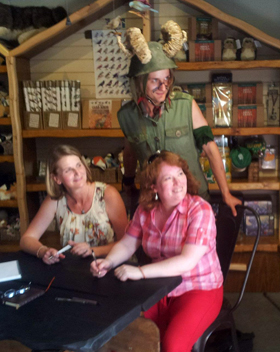 Lyn Stone has worked in a variety of jobs, including a Curator at the Tower of London. Being rather small she was the only member of staff who could climb into the display cabinets to clean Henry VIII’s Codpiece, whilst Japanese tourists happily took photographs! She can also boast accidentally shocking an Amerian tourist who mistook two flintlock dueling pistols for gun with real amo! She has also worked as a freelance model-maker for television, working on a variety of shows, for the BBC and ITV. As a model-maker she found herself working with puppets, actors as well TV crew. On one memorable occasion Lyn made a model so big, it had to be built in her garage. Much to the amusement of all her neighbours when a large lorry, bearing the slogan ‘British Broadcasting Corporation’ turned up to collect it and struggled up a very narrow lane!
Lyn Stone has worked in a variety of jobs, including a Curator at the Tower of London. Being rather small she was the only member of staff who could climb into the display cabinets to clean Henry VIII’s Codpiece, whilst Japanese tourists happily took photographs! She can also boast accidentally shocking an Amerian tourist who mistook two flintlock dueling pistols for gun with real amo! She has also worked as a freelance model-maker for television, working on a variety of shows, for the BBC and ITV. As a model-maker she found herself working with puppets, actors as well TV crew. On one memorable occasion Lyn made a model so big, it had to be built in her garage. Much to the amusement of all her neighbours when a large lorry, bearing the slogan ‘British Broadcasting Corporation’ turned up to collect it and struggled up a very narrow lane!
Her main line of work, however, has been that of an artist and illustrator. Her amusing drawings have enlivened the pages of many children’s books, from history books to children’s play scripts, and pop-up books. Some of her regular clients have included Oxford University Press, Templar Publishing and Armadillo Childrens books.
She has lived all her life in south-east London, and when not at her lightbox she enjoys forays from the suburbs to the bright lights, theatres and cinemas of the West End. However soon she’ll be packing her bags and moving to the seaside in Kent, and is hoping that the Kent countryside and beaches will inspire her work!
Here is Lyn showing and discussing her process:
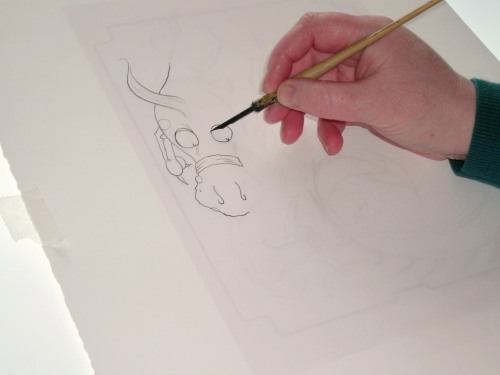
Step 1 – I place the sketch or enlarged thumbnail onto a lightbox. The watercolour paper is placed on top and using an acrylic-based ink I begin inking the drawing, without following the sketch too carefully.
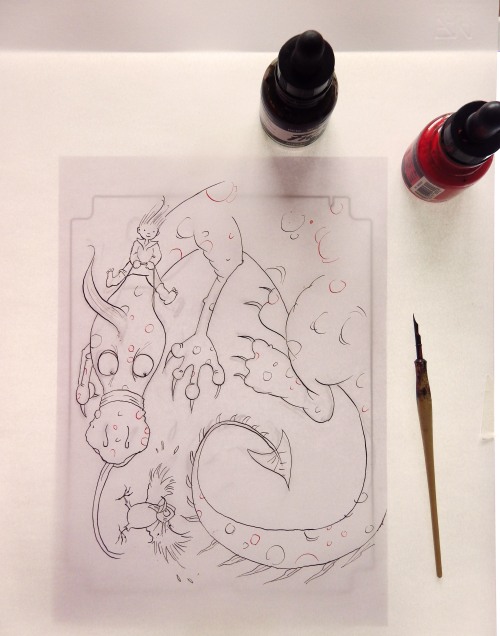
Step 2 – Here is the finished inked artwork. I then stretch the paper using traditional methods.
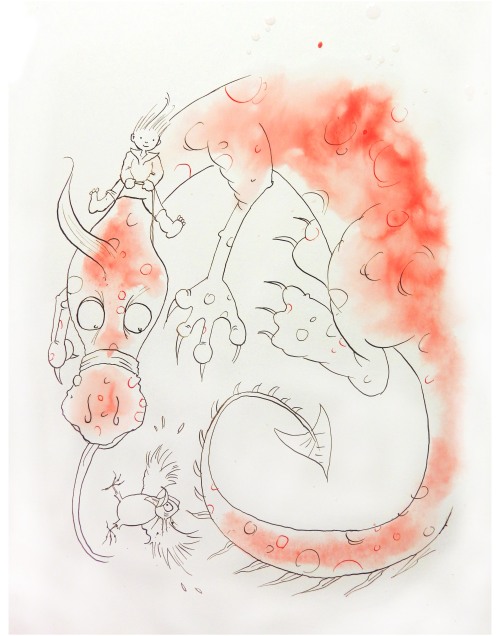
Step 3 – Once dry. I flood the paper with clear water and begin adding the first colour, which spreads and pools in the water in nice unpredictable ways. Start building the colours up a little. Again I am using the wet-in-wet technique.
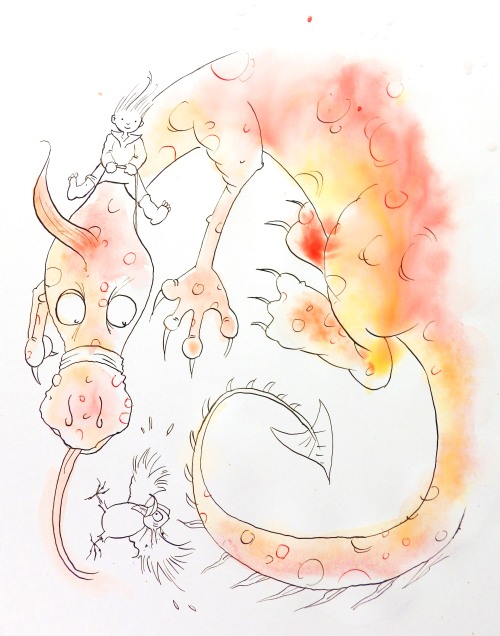
Step 4 – While everything is still very wet, I like to ‘push’ the colours around a little so they merge.
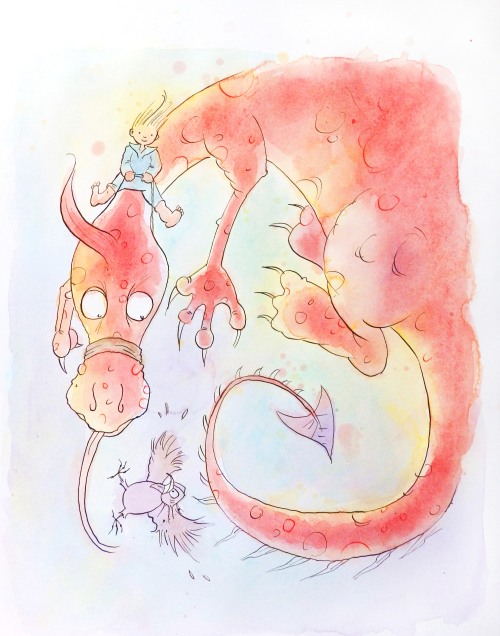
Step 5 – Now I begin adding colours in a more controlled way with the paper dry but mixing the watercolour over the paper by adding clear water to it.
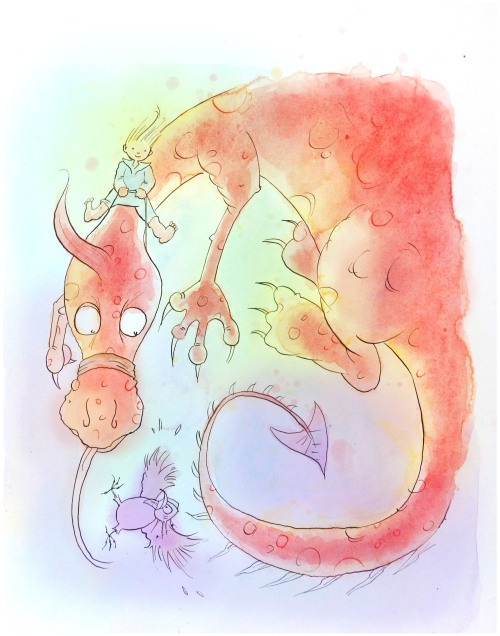
Step 6 – With this particular picture I added the background colours at a later stage.
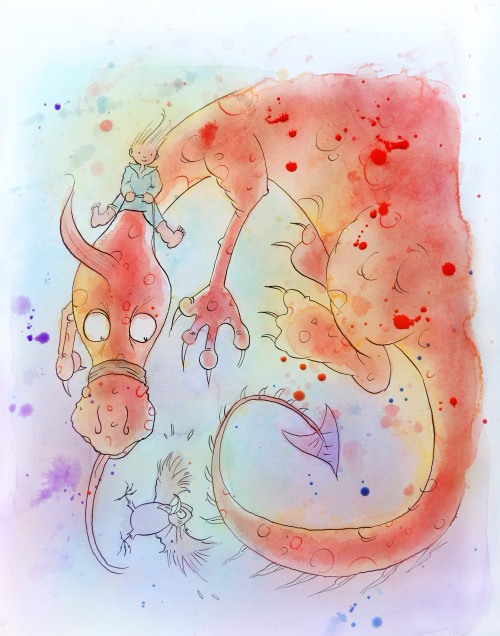
Step 7 – Now I can start adding some texture and pattern by flicking the paintbrush, loaded with paint across the picture – this is great fun!
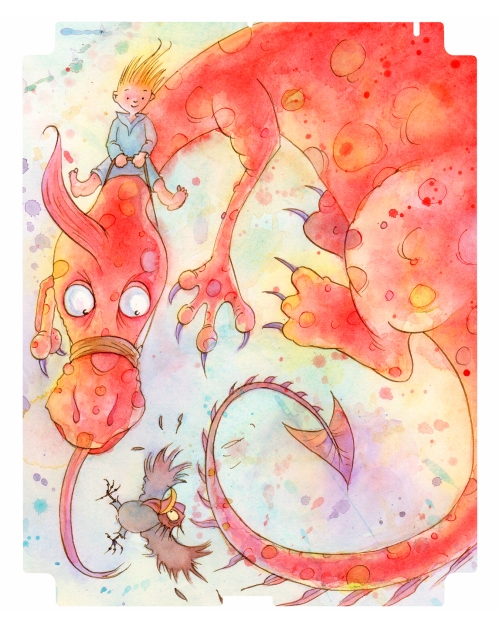
Step 8 – Once dry I then scan the artwork and this instance dropped it into a template for an iPAD skin using Photoshop.

How long have you been illustrating?
Over 20 years
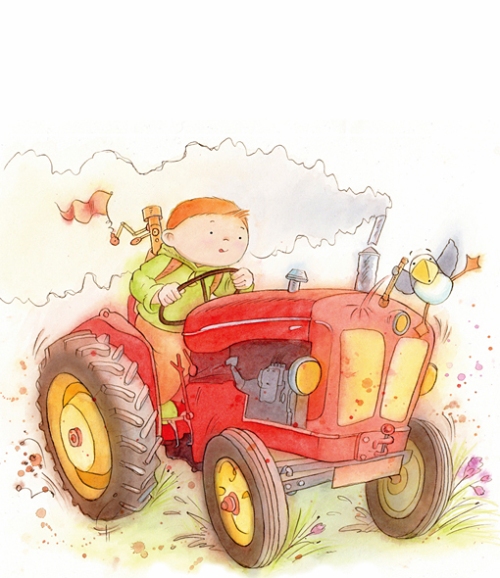
Did you go to college for art? If so, where I attended.
Southwark College off the Old Kent road in London, where I completed a B/Tec diploma. I then went onto to do a BA Hons at Middlesex University in 3D design. I originally worked in television and am self taught as an illustrator.
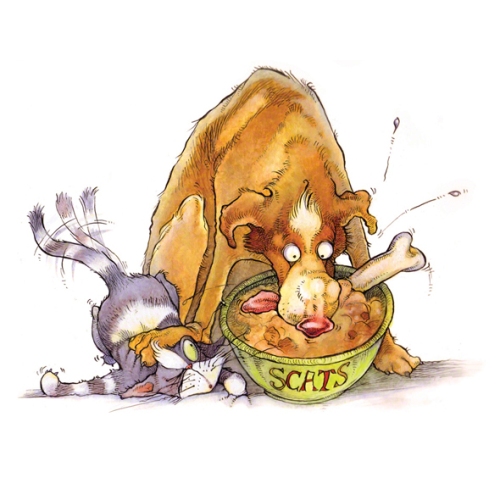
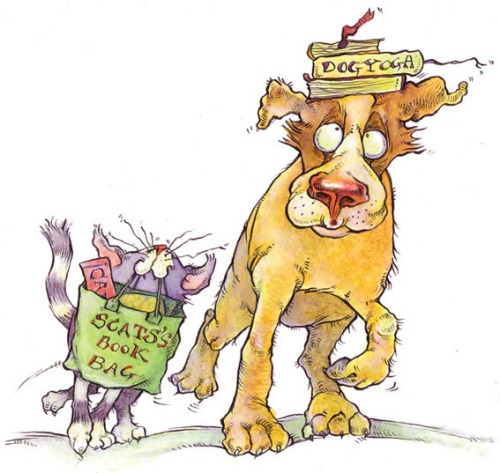 How did you decide to attend that school?
How did you decide to attend that school?
Well the first college had a really good reputation at the time and a very good tutor for drawing, even though we did call him Hitler, because he worked us so hard! My second choice probably wasn’t a good one, as I should have done an illustration course, maybe at Brighton, but I learned a range of skills from doing it.
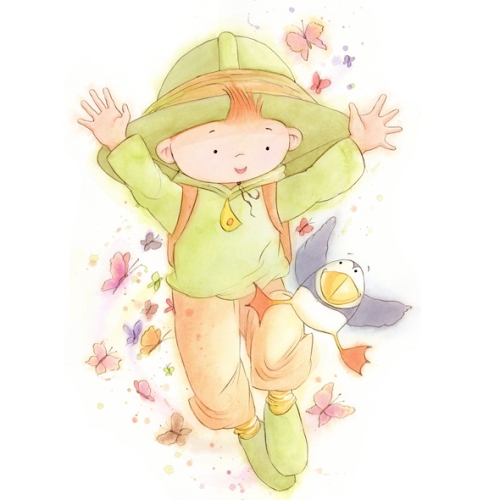
Can you tell us a little bit about the school and the type of degree you received?
Well it was 3-dimensional work, so ceramics, jewellery making, glass blowing, silversmithing, furniture making, etc., we also studied the history of art.
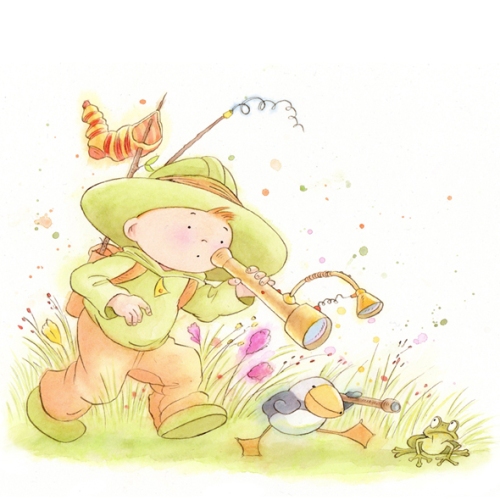
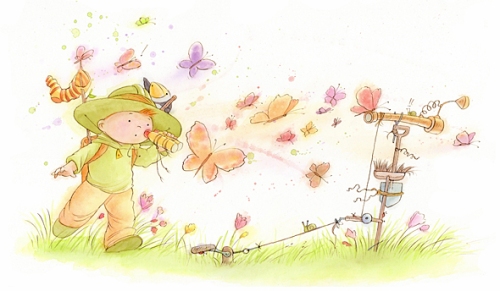 What were you favorite classes?
What were you favorite classes?
History of art and probably ceramics
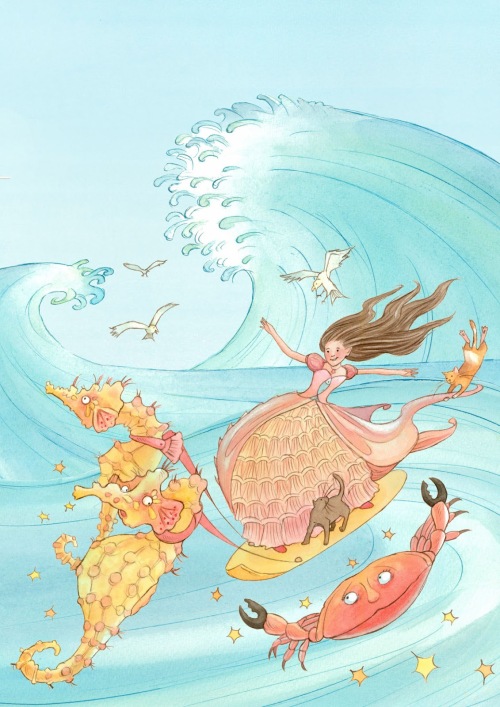
Did the School help you get work?
No. It’s the one bad thing they do not do. You never get to hear about what it’s really like out there in the real world. Universities could do with introducing a few lectures on this subject alone. I am very self-motivated. A year before I was due to graduate I approached the head of design at ITV television. He interviewed me with my portfolio and said to contact him when I graduated. I did and he gave me my first job!
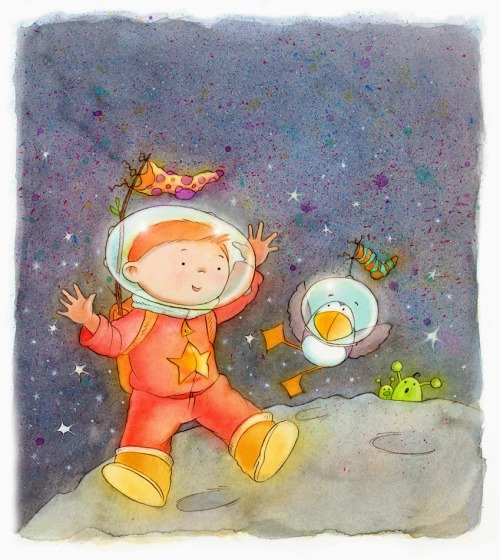
What type of work did you do right after you graduated?
I worked on many different British TV shows for both ITV and the BBC.
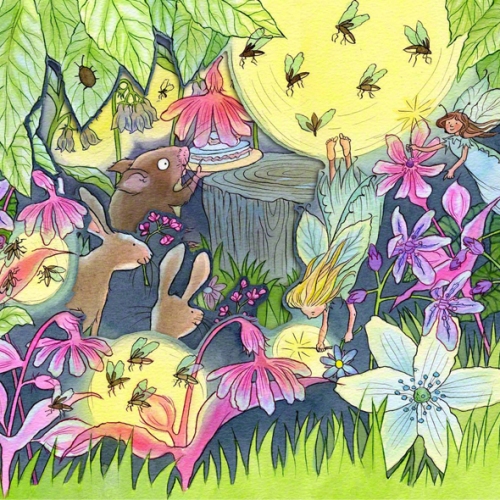
Do you feel that the classes you took in college have influenced your style?
No. I have been influenced by other artists and illustrators. I love the artists Turner and Kandinksy, the illustrators Peter Woodroft, Chris Riddell and my favourite by far is Heath Robinson!
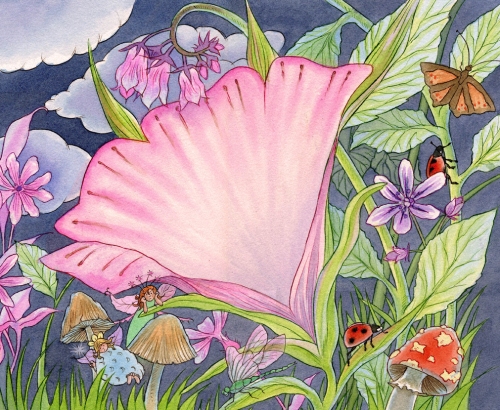
What was the first art related work that you did for money?
I guess for TV. I built a 25th scale model of The Bill set, and for 10 years it was on display in the MOMI, The Museum Of Moving Image in Central London.
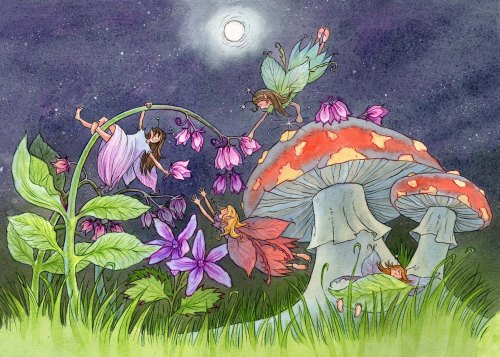
When did you decide you wanted to illustrate a children’s book?
I sort fell into it really. A friend of mine wrote travel books and wrote a children’s play that he wanted illustrated. I was known by that time as being very good at creating leaving cards for people, and he suggested I illustrate his book. The publisher then proceeded to use me for more projects, and it very gradually snowballed.
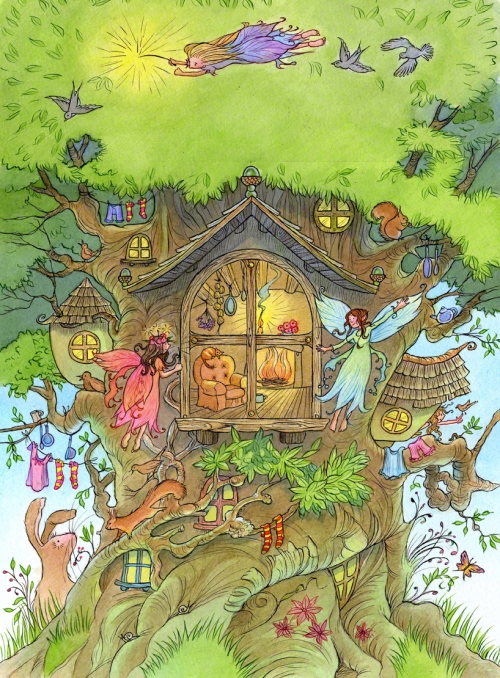
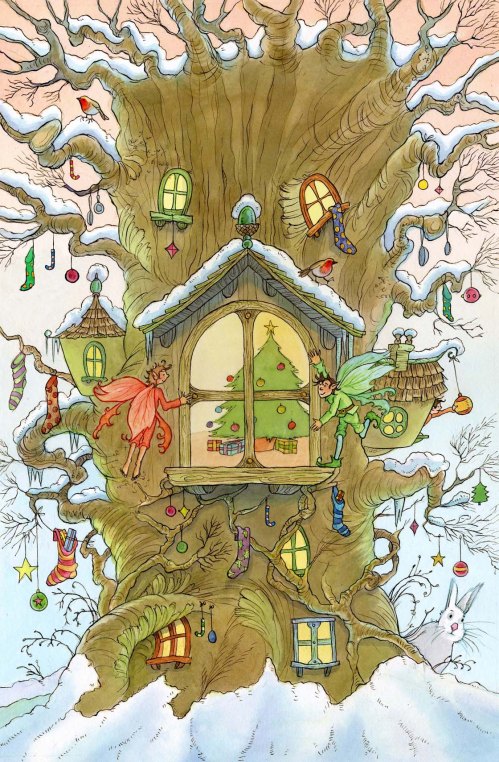
What was the first book you illustrated?
My friend’s play, entitled The Looking-glass Alchemist
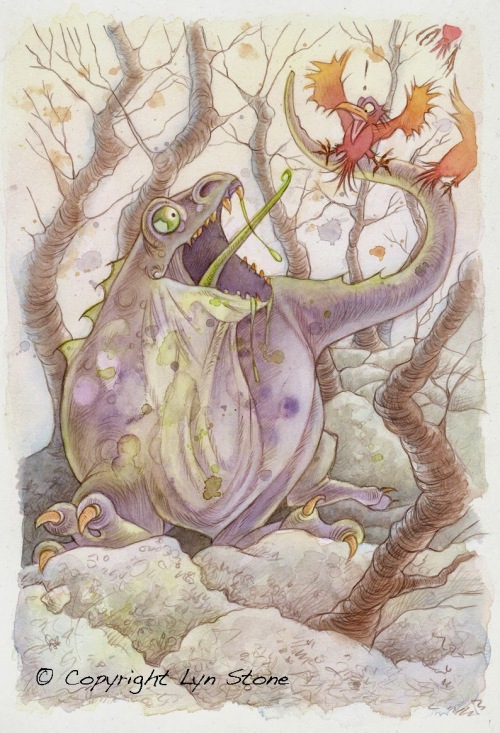
How did that contract come about?
My friend really put my name forward to the publisher. In those days you could get away with that, lol.
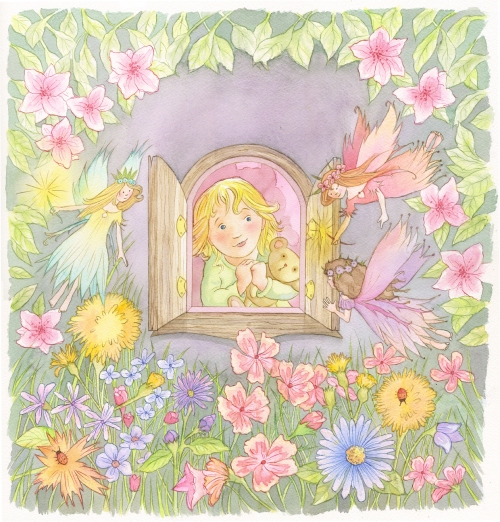
What do you consider is your first big success?
My first commission with Oxford University Press.

How did that opportunity come about?
I sent them samples of my work and they asked me to produce a single illustration. What I didn’t realise at the time was that I was competing with three other illustrators for the commission! I got it – hurrah! I had to do over 150 illustrations – a huge project.
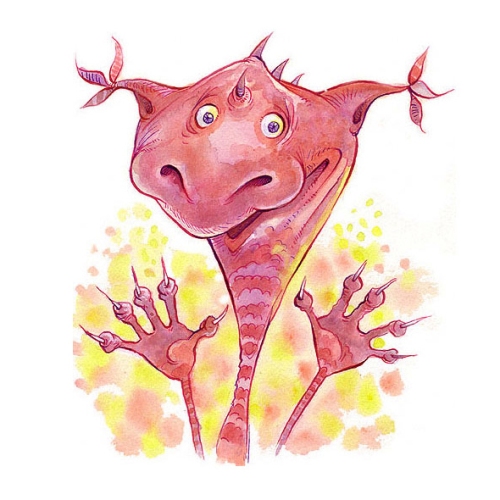
How many picture books have you illustrated?
A true 25-page illustrated picture-book is something I am yet to be commissioned to do – come on publishers, give me that commission! However I have illustrated over 43 books!
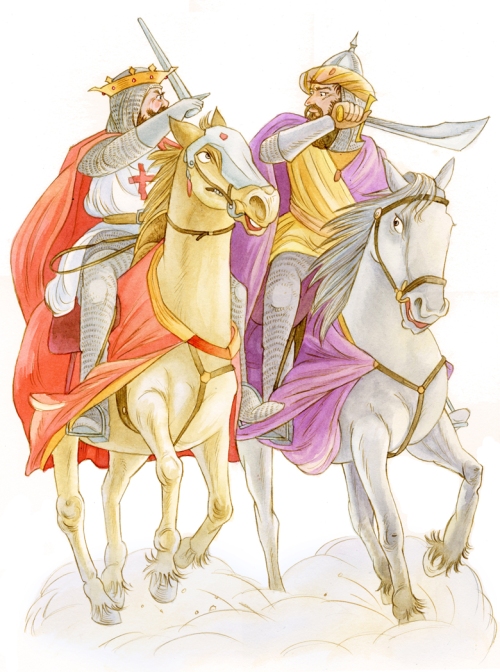
I see you were a model-maker for television. What does a model maker do?
Well a range of interesting things. I used to make mini models of sets, so cameramen could work out where to film, models that were props on set, and models for exhibition purpose.
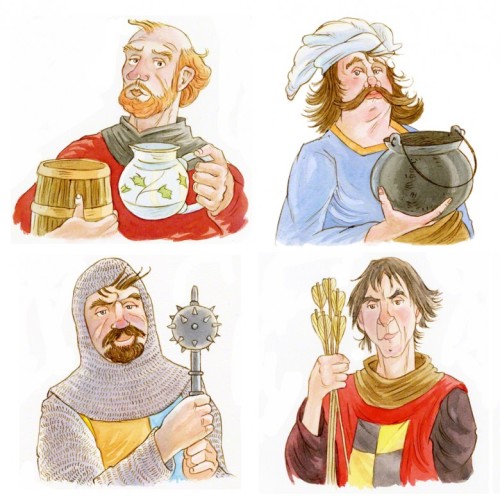
How did you get involved in creating pop-up books?
To some publishers my style seems to lend itself to the pop-up genre. The first one I did was a dummy book for the Bologna book fair for Templar Publishing.
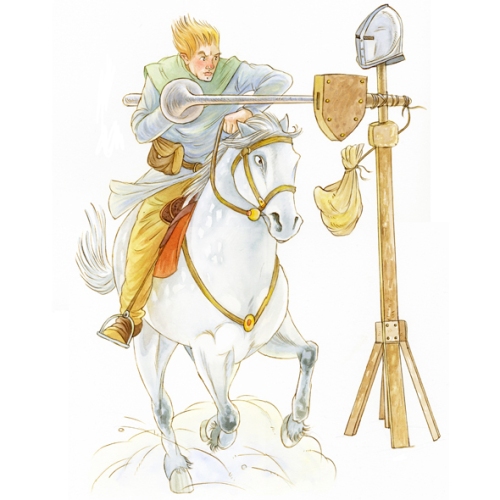
Do you work with the physical creation and working parts of the pop-up books?
A paper engineer will send me a mock up that actually works and the designer on paper will send me templates, so I know the space my artwork must fill.
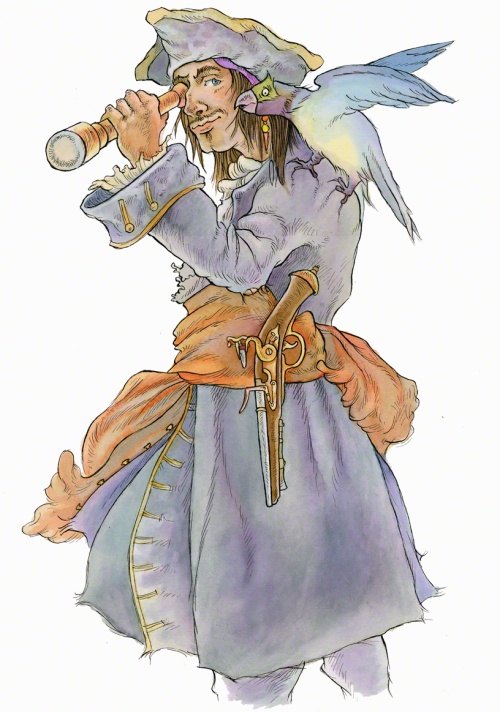
What is the children’s publishing industry like in London?
Well the recent recession hit it a bit and it is picking up again, but you cannot get the same fees that were available ten years ago, but that is an international problem. I still love what I do very much, it is just a shame that the profession has been somehow diminished a little by the industry.
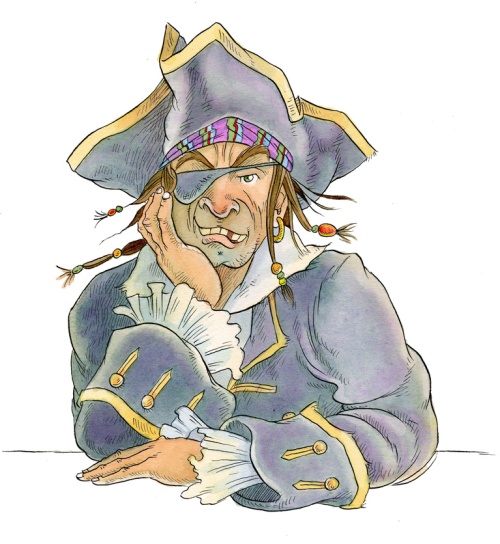
How did you find your agent and how long have you had them?
I have been with Peter now for four years, but tried two others before that. I simply emailed samples of my work and a little of my history and client list (very important if you want to be considered). They receive hundreds of requests weekly, and so I was very lucky.
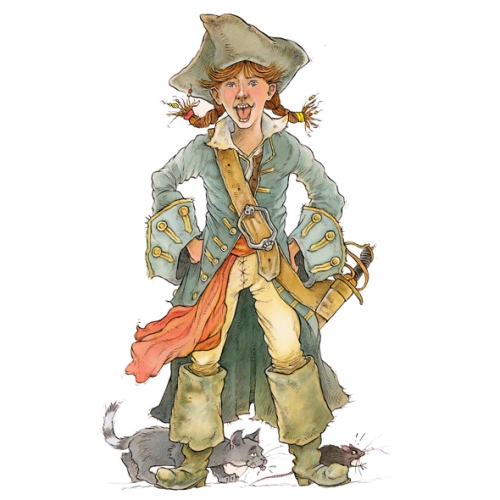
Do you always use watercolor to paint your color illustrations?
No, sometimes inks and I have experimented with mix media too!

What do you use to create your black and white drawings?
An old fashioned dip nib and an acrylic based sepia or black ink. Sometimes however they are created digitally, using illustrator. My greyscale illustrations are created using a propelling pencil with a nice soft led. They’re great because you never need to stop to sharpen them.
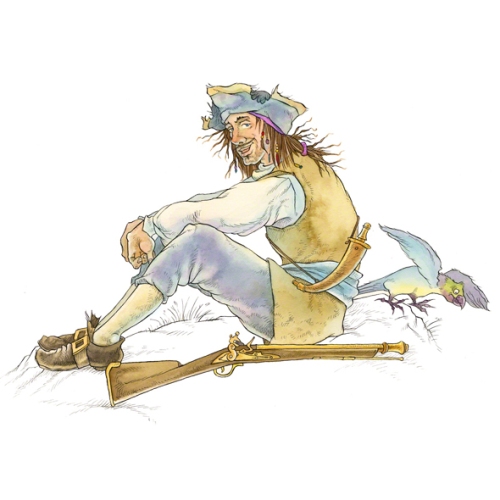
Have you done illustrations for any children’s magazines?
No, but I recently completed working on a two-year project for the Agatha Christie book collection. I illustrated all the villains! Great fun.
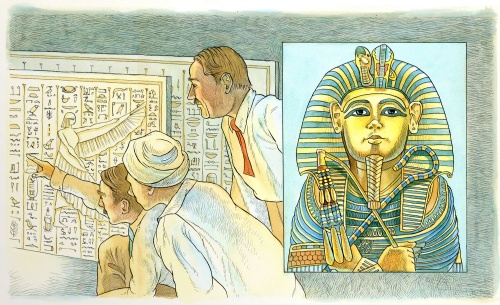
How did you get involved with painting for stage and theatre?
I have never worked in the theatre or on stage as a painter. Only television. However I have produced an illustration for a pantomime, Cinderella for a theatre in Scarborough. It was used on their posters and promotional material.
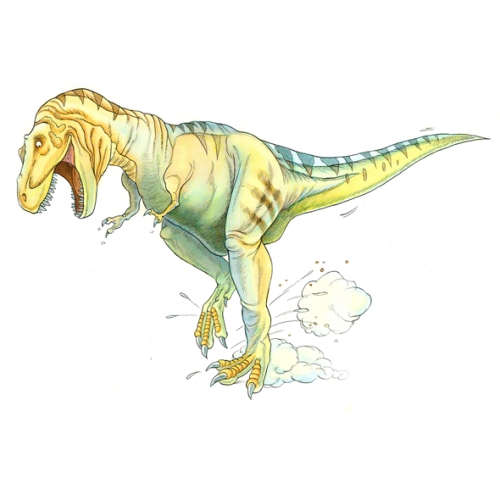
Have done any artwork for educational publishers?
Yes. Lots and lots.
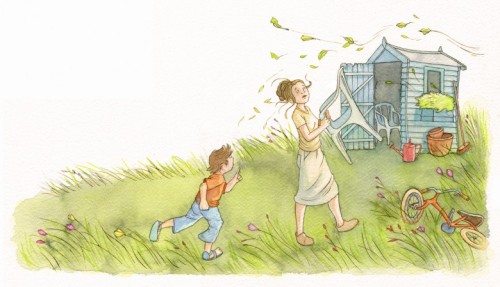
Do illustrators do school visits in the UK?
Yes, and museums and libraries. I have certainly run childrens workshops in both libraries and at a museum – the National Maritime Museum in Greenwich.
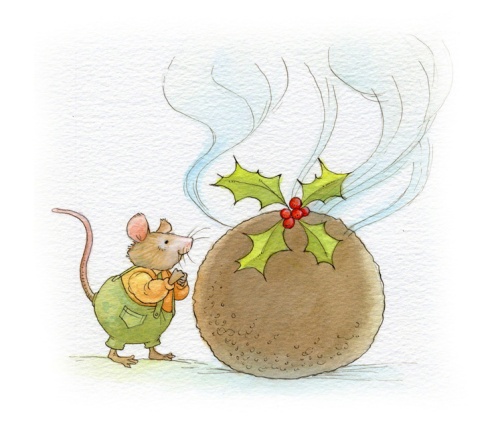
What types of things do you do to find illustration work?
I find the internet is becoming more and more important. I am on several websites, including the AOI, Association of Illustrators. I also blog regularly, tweet and have a Facebook page.
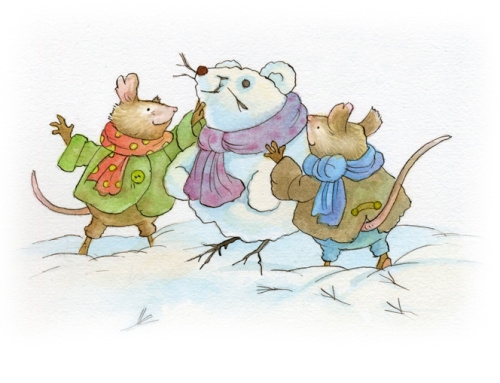
Do you ever exhibit your artwork?
Not yet, no. But what a good idea!
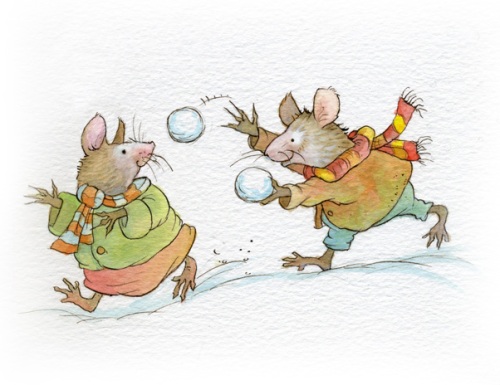
What is the one thing in your studio that you could not live without, other than your paints?
My light box!!!
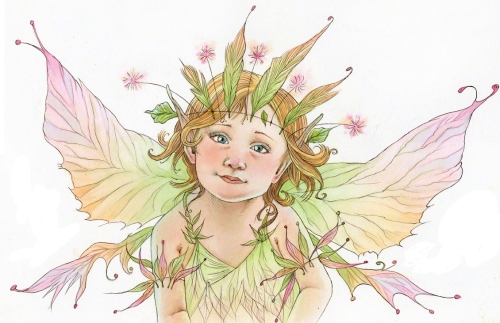
Do you try to spend a specific amount of time working on your craft?
It varies, if you have a tight deadline then a twelve hour day is quite normal!
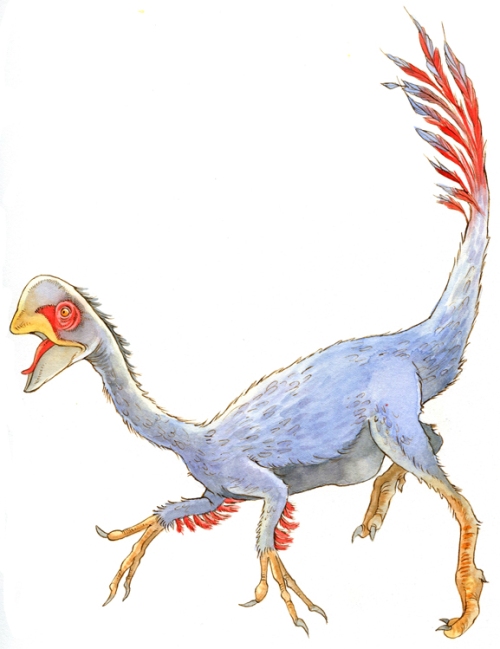
Do you have any desire to write and illustrated your own books?
Yes. I have just written three picture books, which are currently being looked at by Macmillan Books. Hopefully they will buy my project – fingers crossed.
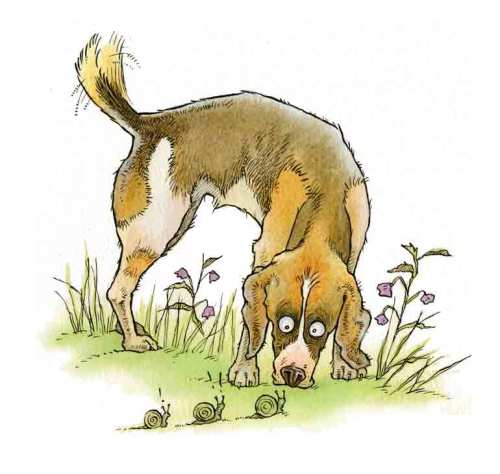
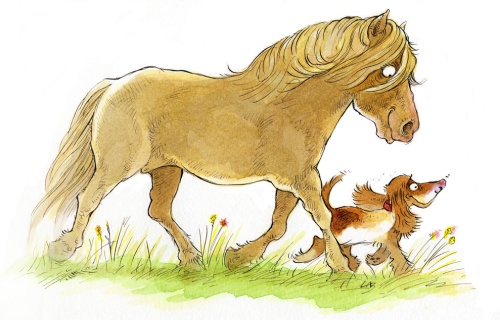
Do you take pictures or do any types of research before you start a project?
Often, yes. Especially for a reference book.

Do you think the Internet has opened doors for you?
Most definitely.
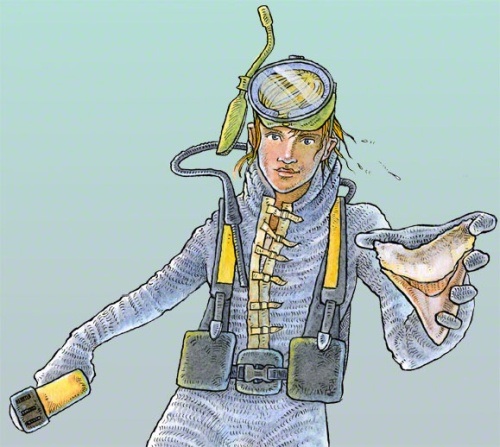
Do you use Photoshop or Corel Painter with your illustrations?
These days publishers very rarely want original artwork, and of course some of my clients are half way round the world. So I tend to scan my illustrations and digitally prepare them to upload to a client, using Photoshop.

Do you own or have you used a Graphic Drawing Tablet in your illustrating?
Yes own and used! I had to do a series of vector illustrations using illustrator. They were all silhouetted characters and animals.
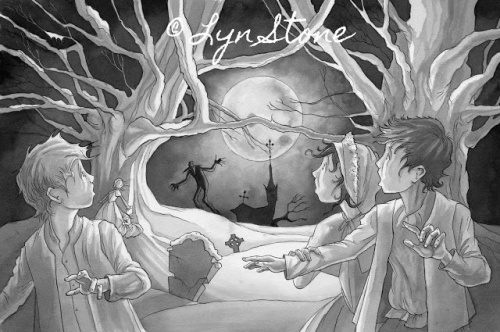
Do you have any career dreams that you want to fulfill?
Yes. To write and illustrate my own books. I have always enjoyed writing too.
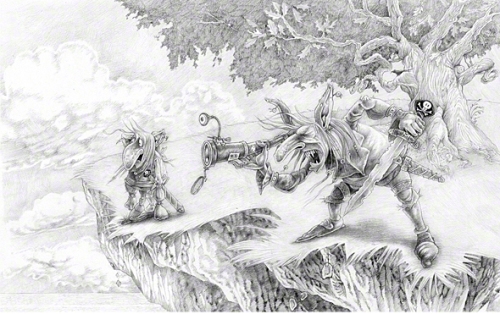
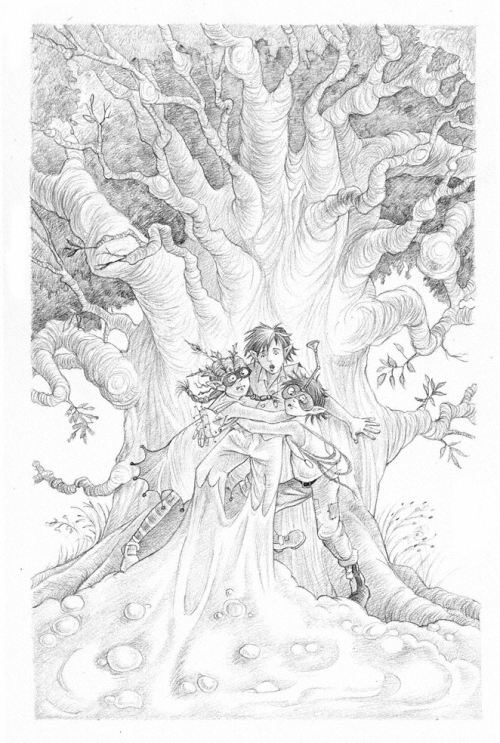
What are you working on now?
Have just completed working on peek-o-boo book. They are quite hard to work on, because you have to think in three dimensions all the time, and there are many layout restrictions. Each page of the book opens up into what I can only describe as a theatre set, and you can peek through to various layers, which together tell a story. Very complex work indeed.
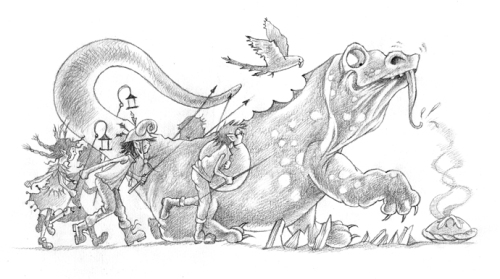
Do you have any material type tips you can share with us? Example: Paint or paper that you love – the best place to buy – a new product that you’ve tried – A how to tip, etc.
I particularly like using Fabriano heat sealed, hand made watercolour paper. It has no knot at all, and takes a bit of knocking about too. Very good quality paper indeed. All artists are different. I prefer to stretch my paper first, the old fashioned way. You can throw as much water and paint at it as you like and it always dry completely flat, which makes scanning less of a headache. My father taught me how to stretch paper as a child.
My favourite art shops are Corneillison & Sons, in Great Russell Street, London, and Chromos in Canterbury. Both hold extremely good stock.
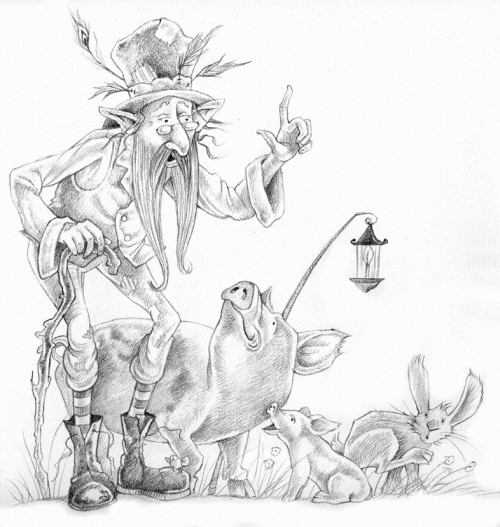
Any words of wisdom on how to become a successful writer or illustrator?
You need a will of iron, determination, patience. Unless you are extremely lucky, it can take years to become truly established. Grow a thick skin too. Publishers can be quite harsh about your work when it gets to editing roughs stage. Join an illustration association, as they can provide you with advice on fees and legal advice. They can often provide standard contracts too that you can give to potential clients, and so well worth joining. Above enjoy what you do!
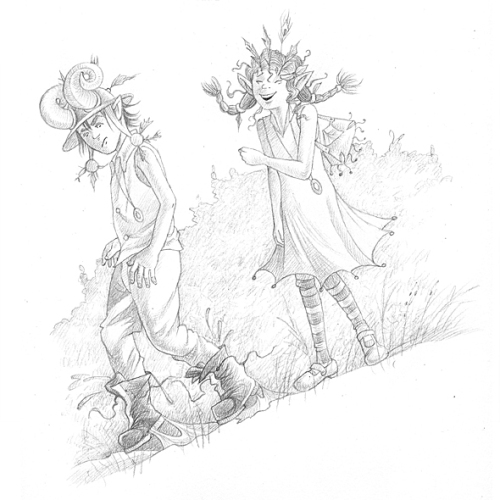
Lyn thank you for sharing your wonderful illustrations, process, journey, and expertise with us. Please keep in touch and let us know of all your future successes. We would love to hear about them.
You can visit Lyn at her website: http://www.lynstone.com or stop by the agency that represents her: The Illustrator Agency
Please take a minute and leave Lyn a comment. It is always appreciated. Thanks!
Talk tomorrow,
Kathy
Filed under:
How to,
illustrating,
Illustrator's Saturday,
inspiration,
Interview,
Process,
Tips Tagged:
Armadillo Childrens books.,
Lyn Stone,
Templar Publishing 

.jpeg?picon=3498)
By: Cait,
on 3/27/2014
Blog:
Cait's Write...
(
Login to Add to MyJacketFlap)
JacketFlap tags:
tips,
food,
running,
Cartoons,
motivation,
blogs,
injuries,
training,
core,
Add a tag
Let the #CoreandCake Party get going, Runners!  I’m going to start by showing you a quick core routine that you can do post-run. It’s short and sweet but effective at hitting those important core muscles, so there’s NO excuse for not doing it because you can whip it out fast.
I’m going to start by showing you a quick core routine that you can do post-run. It’s short and sweet but effective at hitting those important core muscles, so there’s NO excuse for not doing it because you can whip it out fast.
I’ve got some picture demonstrations for a few of the ones that might be trickier to explain. Truth: I actually did a video but I think I’ve already grown tired of my chipmunk voice, so opted for the stills. 
Here’s how it works, there are group of exercises. Work up to doing three sets of each group, do all the sets for each group before moving onto the next group. Try doing this (or at least SOME core work) three days a week.
Group A
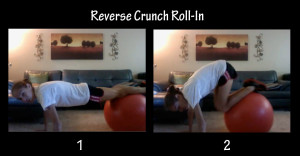
1) Reverse Crunch Roll-In’s — Set of 16
2) Ball Crunch — Set of 30
*Note: for the middle set, I like to mix it up and do the crunches alternating side to side.
Group B
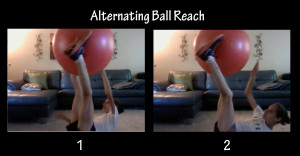
1) Alternating Ball Reach — Set of 30
* Alternate reaching opposite hand to opposite foot; 30 total, so 15 each side
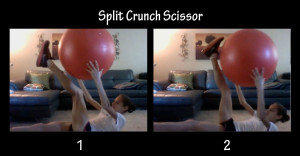
2) Split Crunch Scissors — Set of 16
* Start laying flat, as you reach up to center with the ball bring your left leg up towards the ball. Lower back down then bring your right foot up to the ball. Repeat.
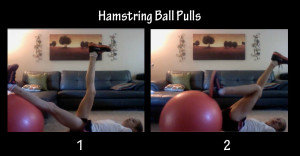
3) Hamstring Ball Pulls — Set of 8 for each leg
* This move works in three phases, and similar to the BRIDGE EXERCISE DEMO I did but up on the ball. Start with one foot on the ball and back flat on the ground, lift your butt up so you’re doing a bridge on the ball, then roll/pull the ball in towards you. Roll out, lower your back down to the ground out of bridge, then repeat. Then switch to other leg.
Group C
1) Push-up — Set of 10-15 (Modify on your knees if you have to.)
2) Chair Dips — Set of 10
BAM!! You can’t tell me you can’t bust that out in 10-15 minutes at most. But the benefits to your running are incredibly important:
* Strong Core = Efficiency. Build up your core and ‘weaker’ muscles so you’re able to hold better form as you run. Maintaing proper form, even as you tire, will keep you more efficient…read as faster.
* Strong Core = Less Injuries. You got it, most injuries are a result of an imbalance that result from a weak muscle. Fix those so you don’t wind up injured and not running at all.
Oh wait, we forgot the OTHER major benefit, you do your core and you get cake too! 
#CoreandCake Party Phase 2…

Nom.
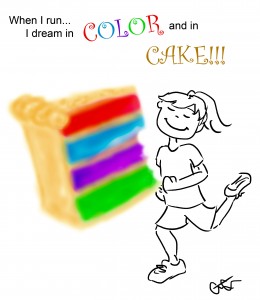
Nom.

Cake sees no speed. Runners of ALL levels working hard get their cake! ;)
Nom.

Nom….check it out, #coreandcake goes #SweatsintheCity style in my
Ezzere Run Your Fortune Tee!!
Check out the AWESOME Lisa @ RunningOutofWine because she’s celebrating all the #coreandcake goodness over at her blog too!! 
Thanks all your runnerchicks and runnerdudes for coming, now go get YOUR #coreandcake on too! Don’t forget you can tweet/insta/social media #coreandcake all day, seeing hardworking runners devouring their just desserts always makes me smile. 
1) How often do you incorporate core work into your routine?
2) What’s your favorite kind of cake, or any dessert?
3) Have you partied down with Lisa yet too?? If not…you best head on over NOW!! 

A runner’s mind is filled with lies. We live in our own sort of warped reality. I’ve talked a lot about how lies are our little coping mechanism so we CAN stay dedicated and motivated to keep reaching our goals. That lies can be a good thing.
The thing is though, not all of those lies are created equal and it’s important to know which lies you should be ‘believing’ and when you need to be truthful.
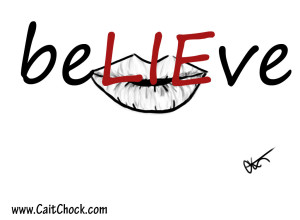
Good Lies
* Midway through a workout: “I’m only doing 1 more repeat, don’t worry brain!”
* About to start a workout or at the starting line: “It won’t really hurt, I swear!”
* In moments of motivation lulls to just START running: “Just run for 5 minutes, if you want to stop then you can.
These are the lies that help us tune out the pain and call our brains out when they’re just being lazy. These are AWESOME lies and the ones you should be blasting from a megaphone because they’re coming from your inner rockstar runner. The runner who wants you to achiever your goals…believe everything they say, those lies will fuel your greatness.
Bad Lies
* Mid-workout brain chatter: “You can’t keep this pace up.”
* Starting line: “Holy crap, I don’t belong next to so-and-so, they’re going to kick my butt!”
* Mid-race: “They just surged, they must feel way stronger than me…I’m just going to let them go.”
These are all the things that weak, insecure, tired, lazy, annoying, complaining brain likes to shout at you. These are remarks your rockstar runner persona needs to refute and call-out as lies. “I am stronger than I think. I belong at this starting line. A race isn’t over until the finish line and I know they hurting too, I just need to hang onto them.”
Dangerous Lies
* Mid-workout: “What was that POP? I’m sure it’s nothing…I think this pain will just go away in a second…”
* After 6+ days of feeling like total sh*t and workout times getting progressively slower: “Just suck it up…I’m DOING this long run/workout exactly as was planned 4 months ago.”
* In life: “It’s totally okay that I’ve only slept 4 hours the last five nights and been existing on Sugar Daddies, Ramen noodles and Diet Coke.”
You get a runner, heck-bent on proving their toughness and combine that with our own ‘stupidity’ (“It doesn’t hurt THAT bad, I can surely make it three more repeats!”) and that’s when things get ugly. Injuries, Baby, injuries. Runners are always riding a fine line between good pain, bad pain, when to push, when to ease back, and to our credit it CAN be incredibly difficult to distinguish ‘right pain’ from ‘wrong pain’ and from there the degree of ‘wrongness’. I’m sure that reads like jargon to normal people, but runners totally GET exactly what I’m talking about.
The thing is, runners usually have to just learn the hard way and suffer through times when they’ve made mistakes to LEARN. Eventually you’ll come to find it’s better to err on the side of caution. It doesn’t make you mentally weak or a lame-o runner; in fact it takes more self control and confidence to hold back and issue that self-restraint.
Think of it this way. You’re running and mid-workout you definitely know something is off.
Option 1: Either slow down to a pace where you don’t feel the ‘bad’ pain or pull the plug on the workout entirely. Follow it up with some easy days and you’ll be right back into training mode after.
Option 2: Grit your teeth, finish the workout come h*ll or high water. You limp through a cool-down and the grimace never leaves your face. You ice like a mofo the rest of the day, chomp Ibuprofen like they’re Smarites and pray you’ll somehow go to bed and miraculously be fine.
What scenario do you think wins out?? Finally, what’s the WORST thing that could happen if for some reason you could have finished the workout and been fine after? The running police won’t come and yell, “SLACKER!!” at you.
Just keep working hard and remember training works on the law of averages, that single workout isn’t going to ruin your entire build-up to your Championship race.
Why it’s Hard to Admit a Dangerous Lie is Reality
On the flip side, runners sometimes grit their teeth through the ‘bad pain’ because they are afraid that if they stop they’re going to lose the ability to PUSH through the ‘right pain’. I know you know what I’m talking about because it feeds right back into the GOOD kind of lies.
Running hurts one way or another whether you’re injured or not. You can’t let your mind actively be looking for excuses to stop. So naturally there is the fear that if you pull the plug on a workout one time, you’ll start a chain reaction that results in you never being able to finish a workout. This does happen, and it’s mental suicide for a runner but here’s the thing…
…it works on a case by case basis and for lots of runners this fear of ‘losing the ability to push through pain’ is irrational. So, be honest here…you DO know good pain from bad pain, you DO know you can push through good pain, so in those pinnacle moments of needing to decide if you need to stop or not, listen to your gut.

If your bones tell you you’re in danger of really doing damage, stop. It’s not worth it. You can’t run at ALL if you’re injured.
The same goes for a runner who refuses to acknowledge they need to ease back and give their body some rest rather than keep pushing, and keep digging themselves into a hole. Again, all those fine lines, but if you’re experiencing chronic fatigue for a week or more, you need to adjust.
Training routines aren’t concrete and always need a degree of flexibility. Flexibility goes both ways, sometimes you need to push yourself harder but other times you need to know when to scale back.
Don’t dig a hole so deep you have to take a full-on break. Sometimes a few easy days will do the trick and breathe life back into those legs!
Wow, so many lies!! You see why I said we live in a warped runner reality, no?! But be smart.
Tune into the good lies and believe them with all of your heart. Then be secure and confident enough in yourself to recognize the bad lies for what they are and face the real truth.
——-
More posts on CONFIDENCE
More posts on MENTAL TOUGHNESS
More posts on INJURIES
——-
1) What’s a good lie?
2) What’s a bad lie?
3) What’s a dangerous lie?


By: Kathy Temean,
on 3/21/2014
Blog:
Writing and Illustrating
(
Login to Add to MyJacketFlap)
JacketFlap tags:
Eric Carle Museum of Picture Book Art's,
SCBWI Magazine Merit Award,
Interview,
Tips,
picture books,
inspiration,
Advice,
Process,
authors and illustrators,
Melanie Hope Greenberg,
Illustrator's Saturday,
Add a tag
 Melanie Hope Greenberg has illustrated 16 trade published children’s picture books; six of them she wrote. Greenberg was recently an artist in residence for the Eric Carle Museum of Picture Book Art’s National Endowment for the Arts grant. Her original picture book illustrations were exhibited in a solo show and as a part of the “Drawn in Brooklyn” group exhibition at Brooklyn Central Library-Grand Army Plaza.
Melanie Hope Greenberg has illustrated 16 trade published children’s picture books; six of them she wrote. Greenberg was recently an artist in residence for the Eric Carle Museum of Picture Book Art’s National Endowment for the Arts grant. Her original picture book illustrations were exhibited in a solo show and as a part of the “Drawn in Brooklyn” group exhibition at Brooklyn Central Library-Grand Army Plaza.
Greenberg was also the selected artist for the Texas Library Association conference’s Disaster Relief Fund raffle. SCBWI NY Metro steering committee member. Keynoter, panelist, workshop presenter, picture book manuscript / dummy / portfolio critiques for SCBWI regional conferences.
Judge for the 2005 SCBWI Golden Kite Award, 2006 SCBWI Magazine Merit Award. Judge for the 2010 Cybils Awards.

Here is Melanie talking about her process:
Muriel Feldshuh was kind enough to invite me to participate, for a second time, in her traveling children’s picture book artist quilt project. She sent a kit containing a lovely note, a blank square of muslin, packing, and a self addressed, stamped return envelope. How could I refuse?

The first muslin square I painted is in the red quilt above. Feldshuh’s quilts exhibit in galleries throughout the United States.
For the new quilt, consisting of Brooklyn based illustrators, I chose an icon that both represents Brooklyn and my picture books. This is a sketch of a book cover test for MERMAIDS ON PARADE. The publisher thought it was “too old” for the age level of my book.

I still love this sketch and I’ve wanted to use it somewhere else. So, I did.
I work with a copy machine. I cut out extras and fixed some lines. Then copied again. There’s my outline.

I copy once more, and experiment with paint on the paper first. I discovered my glitter nail polish made a quick drying sparkle over the paint. Yippie, no glitter mess.

Using a lightbox, I trace the mermaid’s outline onto the muslin square with pencil. I lay down shapes of pure colors.

Now I add some details to the under layers of paint.

I add purple pen out line and carefully brush in the glitter. I do not want paint or glitter to spill onto the muslin outside the mermaid outline.

Remember to always ventilate while using the nail polish in large areas. I painted by an open window.

Finished art.

How long have you been illustrating?
Before kindergarten. I cannot remember not coloring or drawing. Here’s a painting from my teenage years living in Co-op City in the Bronx.
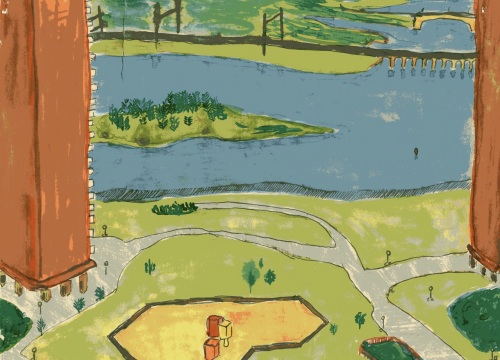
What was the first art related work that you did for money?
UNICEF greeting cards was my first professional illustration job. I also worked in a frame store and in graphic art studios.
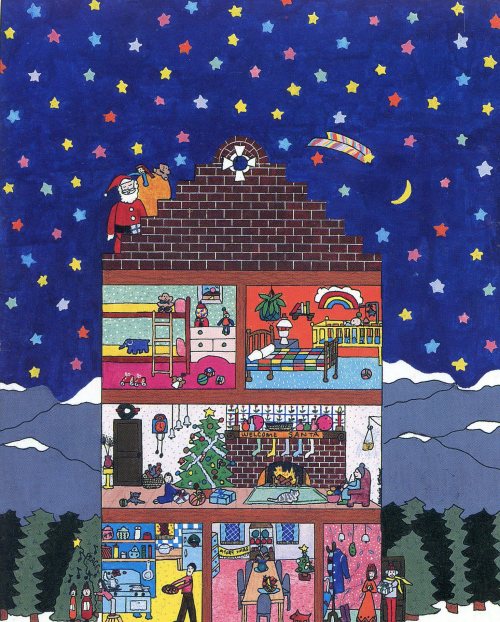
When did you decide you wanted to illustrate a children’s book?
When I met a picture book art agent. Finding her was random luck as I pounded the pavement with my portfolio and illustrating for the gift industry.
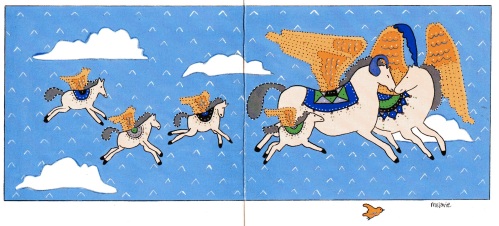
Greeting Card published by Michel & Co
Did you do freelance before you got into children’s books?
Yes. I still freelance. I’ve published hundreds of illustrated images on greeting cards, coffee mugs, posters, gift items and more.

What was your first book you had published? What year was that and who published it?
AT THE BEACH which I wrote and illustrated for Dutton Children’s Books 1989
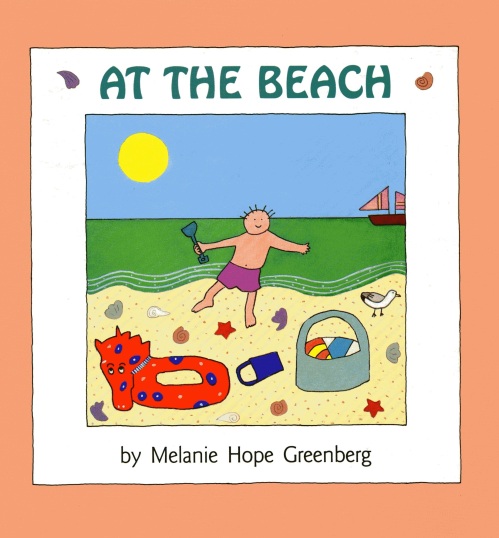
How did you get that contract?
Through the agent. We worked for about 6 months crafting a dummy and writing. Then I got the job!

What spurred you to write your own book?
I always liked to write and my agent encouraged me to write a story.
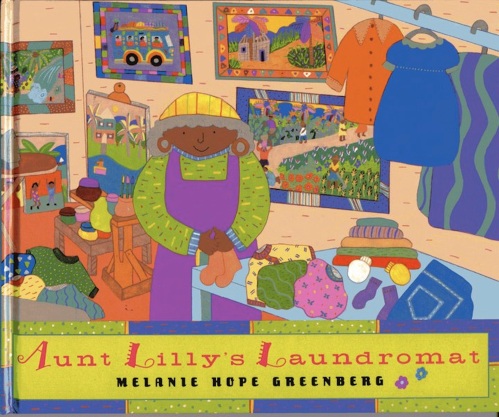
How did you find a home for that book?
Through the agent. I was incredibly green.
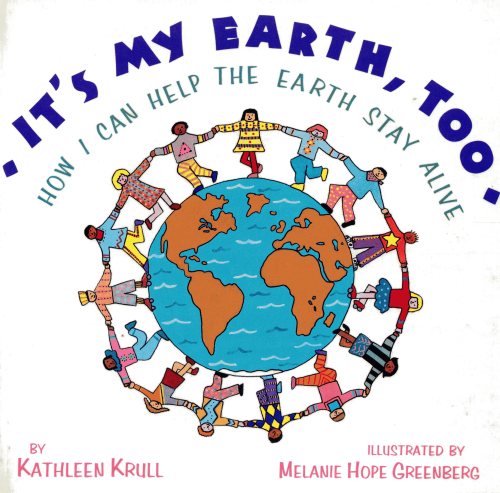
Is there anything you can point that ratcheted up in your career to the next level?
Understanding the vast scope of our business and how it all connects. Marketing my art and books with an individual vision to a target audience.
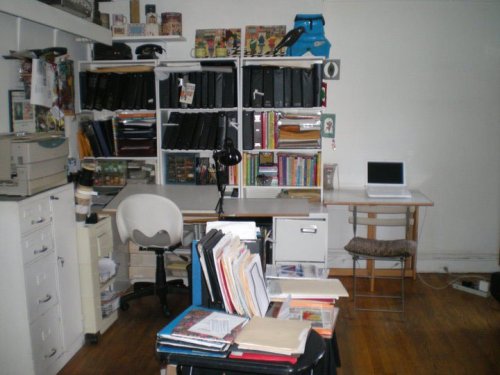
What book was your first big success?
When I saw my illustration from AT THE BEACH in Publisher’s Weekly with a lovely review. I was on an interview at Publisher’s Weekly for a freelance graphic job. When the art director flipped through the magazine there was my painting! The review made me realize that books were more than a freelance gig which is what I thought about my first book deal. Had no idea about picture book reviews.
PS: I got the freelance job at Publisher’s Weekly, too!
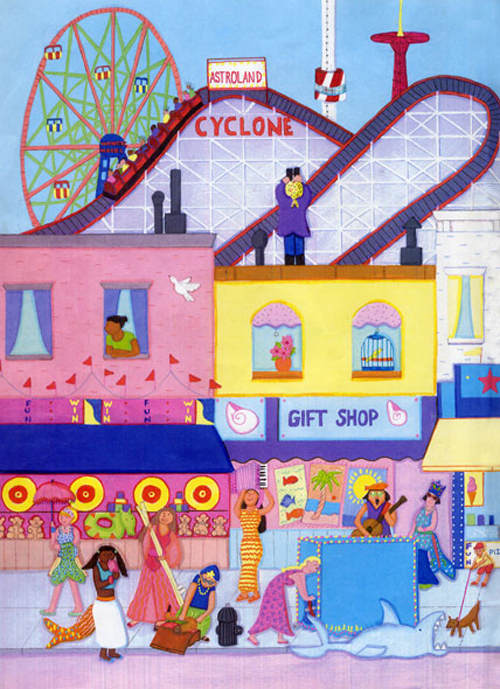
Since then, which book do you feel is your biggest success? Which book is your personal favorite?
A big success is DOWN IN THE SUBWAY which is still in print and has received several honors and became a New York Time Great Children’s Read. MERMAIDS ON PARADE is my personal favorite because it’s a personal story that came from real life. And the story in the book manifested in real life, too. We marched with a little girl who I met at my Eric Carle Museum program. She and her mom came all the way from Massachusetts to Brooklyn to march with my friends in the Coney Island Mermaid Parade. She won a medal for Best Little Mermaid. Just like my book!
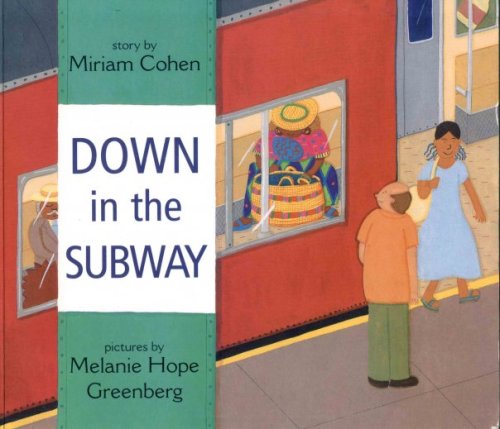
Have you won any awards for your books?
Yes, notables, honors, a New York Times Great Children’s Read, and state awards.
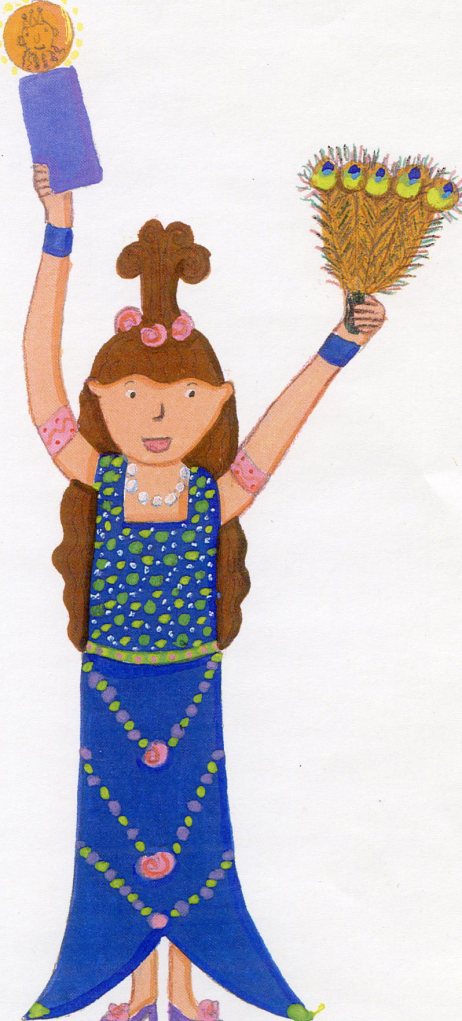
Did you do the original cover of Lizzy Logan Wears Purple Sunglasses by Eileen Spinelli or the latest cover or both?
Great question! I illustrated the first cover in my folk art style and I have no skills to illustrate the new cover. LOVE that they used the same hair style, I’m honored!
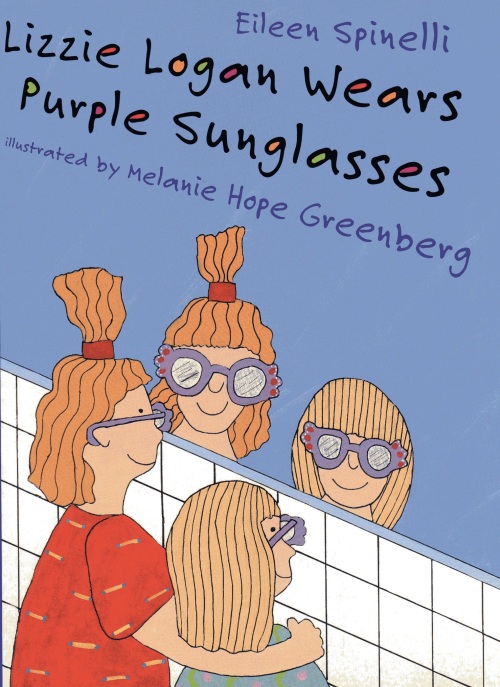
I see you have done a number of books with Henry Holt. How did you make that happen?
Agent connection to editor, Nina Ignatowicz. I published THE WIND’S GARDEN and A CITY IS with Henry Holt.
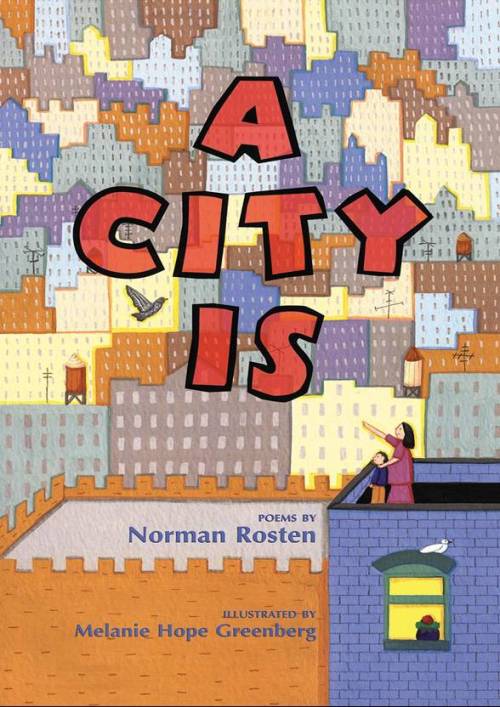
How many picture books have you published?
16 trade picture books. Six of them I’ve written.
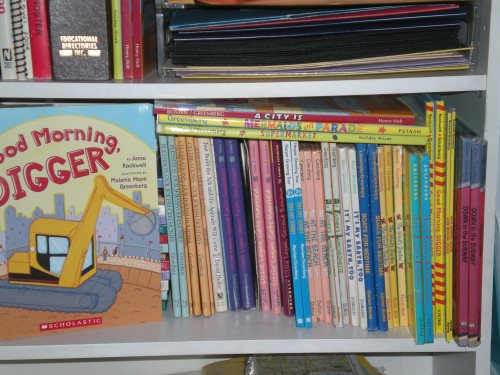
Do you plan to write and illustrate more books?
Always trying. I have polished projects which I submit and various new projects in different stages.
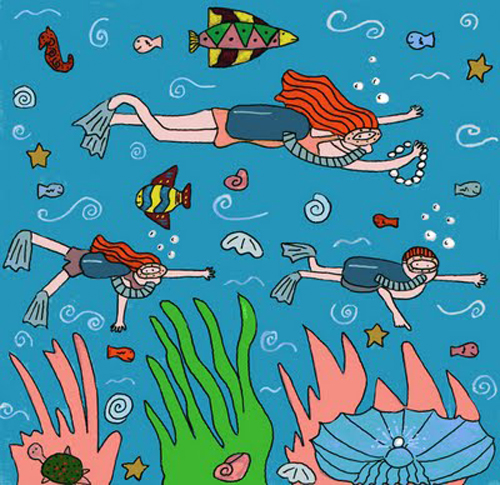
Are you open to working with self-published authors?
I’m not seeking it out, however if I am paid well I’d consider it as a freelance job. Because I am considered “hybrid” I might self-publish my own previously published books now out of print. These books have a track record with the public library system and with schools.
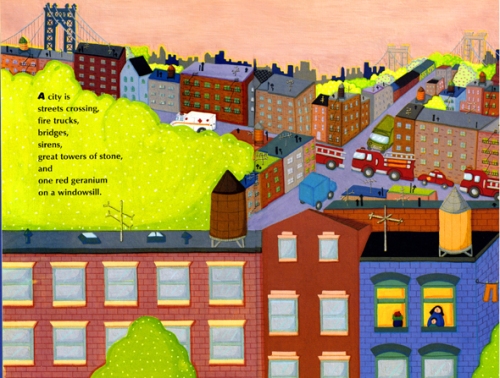
Do you feel your style has changed since when you started out?
Yes, from a decorative cartoon style to a painterly style. That evolution was challenging. In retrospect, it was breaking out of barriers (black lines) into a light filled open field (no black lines). The art mirrored my psychology at the time. Learning to expand interior spaces and how to illustrate with moods and symbols.

What materials do you use to paint your color illustrations?
Gouache, pens, pencils. Ballpoint rainbow colored gel pens rock my world for fine detail work.
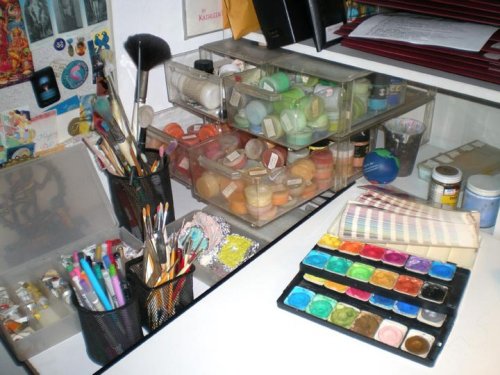
Do you use Photoshop or Corel Painter with your illustrations?
No. Ten fingers are my digital age ;)
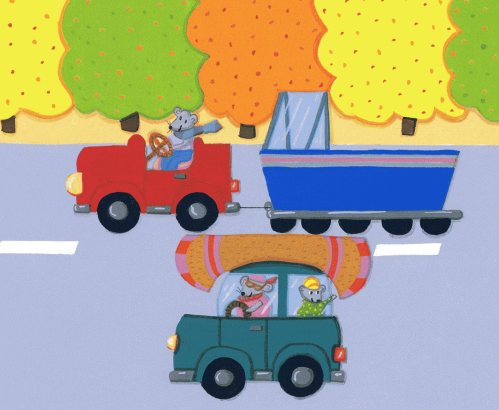
Have you done illustrations for any children’s magazines?
Yes. I had a monthly job with Scholastic’s Instructor Magazine for many years before their illustrations changed to photos. My first assignment with Scholastic was for poems edited by Lee Bennett Hopkins. He and I are currently Facebook Friends! Also, worked with Children’s Television Workshop, and teacher magazines.

Have you done any books with educational publishers?
Yes, A SCARY THING IN THE KITCHEN with McGraw-Hill. I AM with Scholastic. And many more black and white illustrations for textbooks.

What types of things do you do to find illustration work?
Postcard mailings. Submitting proposals. Online presence. Networking.
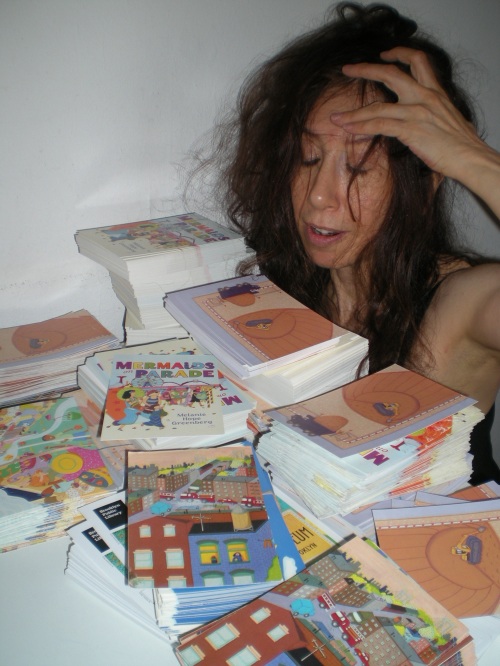
Do you have an artist rep.? If yes, who? If not, would you like to have one?
I did have a 23 year year long good relationship with an agent who is not as active. I went on my own but would LOVE an energetic rep. It’s a lot of work to meet the art directors and editors, do the paperwork and contracts. Definitely worth the commissions.
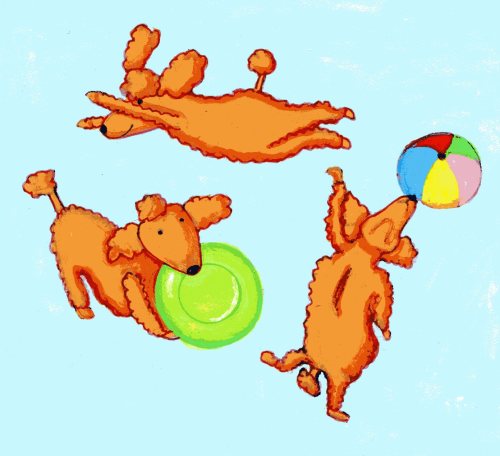
Do you think the Internet has opened doors for you?
Totally! My platform has ballooned. I meet people at events who say they see my name everywhere.

How did you get your first school visit?
I cannot remember, almost 22 years ago. Probably local, I sent mailers to the schools.

Do you actively look for school visits? Or do they find you through word of mouth?
Both. I have a booking agent now but I still must market on a consistent basis and do so with personal lists I’ve built up over time.
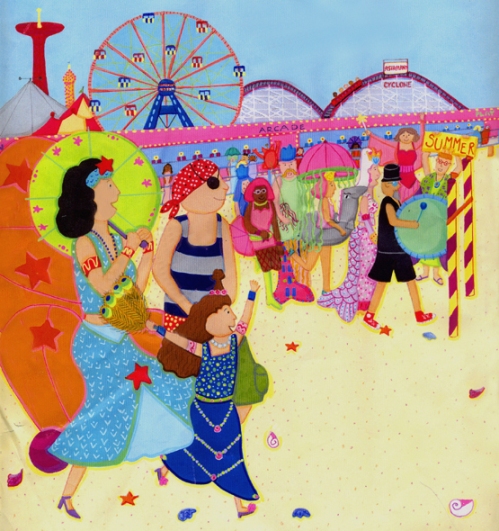
Do you have any tips on how to get invited to a school for a presentation?
Marketing to the target audience is always best.
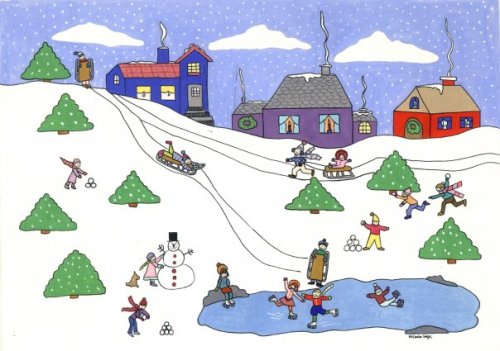
Do you try to spend a specific amount of time working on your craft?
Yes, and lots of paperwork! However, deadlines shape a timely art production. I paint better and more efficiently when I am eating.

What is the one thing in your studio that you could not live without?
My paints.
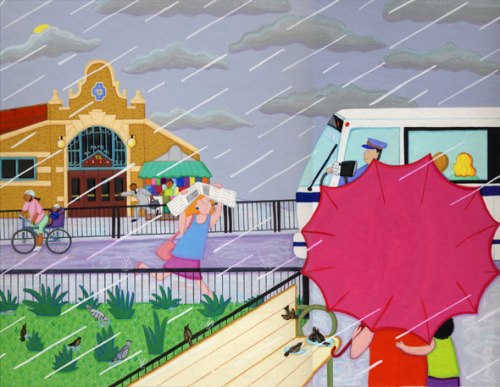
Do you take pictures or do any types of research before you start a project?
Yes, I LOVE to research! I have files of research before I sketch, write, etc. Especially if I am not clear on what info to convey in the art or story. If I can take photos I do, but I use my own visual files and the internet to search for images and other research.
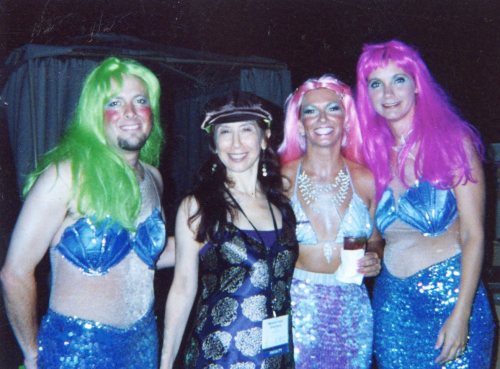
Jay Asher, author of 13 REASONS WHY, on left standing next to Melanie and the Disco Mermaids from the SCBWI party was research for MERMAIDS ON PARADE. They appear inside the book as well as on the flap jacket. )
Have you ever thought of getting back the rights to your out-of-print books and self-publishing them?
Yes! At this point I am hybrid, books in and out of print. I sell my remainder copies. I’ve learned how to sell to bookstores and the public via experience, the events I do and through social networking. Again, because I am “hybrid” I can self-publish previously published books now out of print which have a track record with the public library system and with schools.
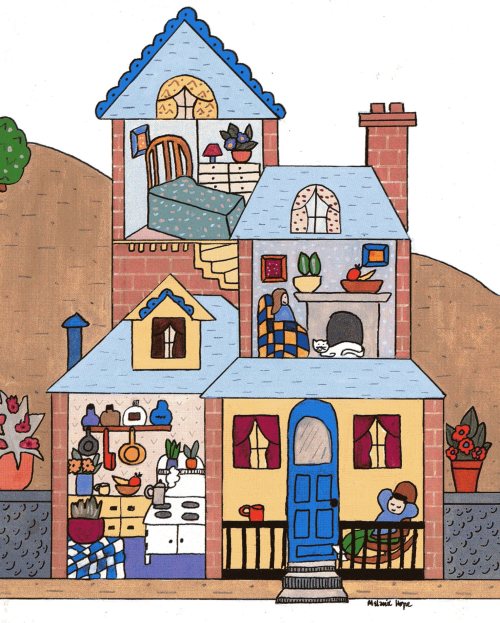 Do you have any career dreams that you want to fulfill?
Do you have any career dreams that you want to fulfill?
Retire properly with financial security. 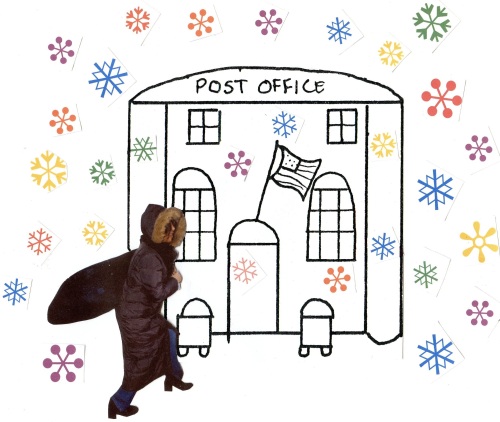
What are you working on now?
Submitting, submitting, submitting. I have a new Ebook being released with Random House. It’s the reincarnation of IT’S MY EARTH, TOO, originally published by Doubleday, released in 1992. It went out of print around 1995 when Doubleday merged with Random House.
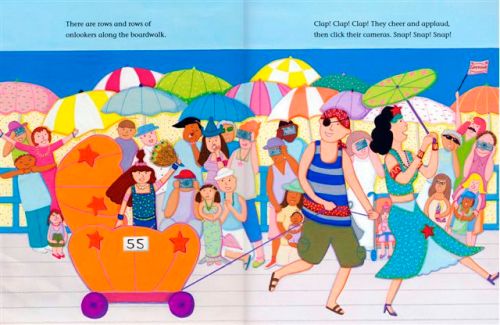
Do you have any material type tips you can share with us?
Play with whatever excites your imagination and experiment.
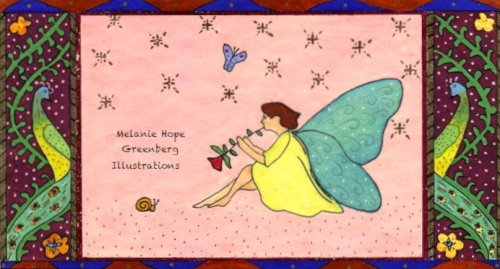
Any words of wisdom on how to become a successful writer or illustrator?
Work your butt off. Stop waiting for others to do the heavy lifting. Keep trying. Present your creativity with an authentic individual voice.
Melanie thank you for sharing your journey, talent, expertise, and process with us. Please keep us informed of all your future successes. We’d love to hear about them.
For more of Melanie, you can find her at: http://www.melaniehopegreenberg.com/ or http://mermaidsonparade.blogspot.com/
All art and photos are the copyright of Melanie Hope Greenberg.
Please take a minute to leave Melanie a comment. It is always nice to hear your thoughts and I am sure Melanie would appreciate it, too. Thanks!
Talk tomorrow,
Kathy
Filed under:
Advice,
authors and illustrators,
Illustrator's Saturday,
inspiration,
Interview,
picture books,
Process,
Tips Tagged:
Eric Carle Museum of Picture Book Art's,
Melanie Hope Greenberg,
SCBWI Magazine Merit Award 

.jpeg?picon=3498)
By: Cait,
on 3/20/2014
Blog:
Cait's Write...
(
Login to Add to MyJacketFlap)
JacketFlap tags:
tips,
running,
videos,
injuries,
training,
exercises,
workouts,
strength training,
core,
Add a tag
Alright, Runners, time to tell you the brutal honesty about your hamstrings: they’re plotting against you! They’re weak, they’re tight, and they’re cranky! Okay, okay, I’m speaking in the general, so your personal hamstrings (if you’re ALREADY taking care of them properly), may not be secretly plotting away an injury for you in the future…but it’s an ongoing offense we must play.
Hamstrings rank among one of the TOP injuries, or underlying issue for an injury for runners. The reason? Partially our lifestyles with too much sitting and also because runners are just prone to tight and weak hamstrings. The solution? Be proactive!
I’ve put together a video demonstrating an exercise routine targeting those weak hamstrings (and glutes). It hinges on the bridge exercise, doing them as single leg bridges. Aim to do these three times a week after your run, it will literally take you a minute or two, so no excuses!
3 Way Single Leg Bridges
10 raises each leg
3 Different distances from glutes
Avoiding an injury that keeps you from running is an ongoing effort, being proactive in the stretching and core work is your two-pronged approach! These nice exercises are one part of the puzzle and the other is doing the stretching.
Do yourself and the rest of the world a favor and keep being proactive…an injured runner on the streets is NOT someone I’d like to cross. 
———–
Fun announcement! If you follow me on Twitter you may have caught wind of #coreandcake parties that have been going on. It’s simple, do you core and you get your cake! Runners are human, we work well off of bribes. 
I’d like to take this party to the blog world! SOOO…I’m having a #coreandcake party NEXT Friday, March 28th and EVERYONE’S invited!! Here’s what’s going down and how you can take part:
1) I’ll be posting a core routine I’m currently loving, followed of course by talk of cake!
2) BLOGGERS: This will be a link-up sort of deal, so if you email me: [email protected] with an RSVP that you’ll also be talking core and/or cake on your blog we’ll kindly link up.
3) Social Media: If you’re tweeting, FB’ing, or Instagraming on that Friday let’s bust out that #coreandcake hashtag and give me a shout-out…cuz, let’s be honest, I can’t get enough of seeing core and cake taking over the net. 
So this is your INVITE!! 
———
1) What is one of the ways you proactively take care of your hamstrings?
2) What is one of your known weak spots as a runner that you give extra care to?
3) What’s your favorite kind of cake?
Ummm….chocolate….duh! 


By: Kathy Temean,
on 3/18/2014
Blog:
Writing and Illustrating
(
Login to Add to MyJacketFlap)
JacketFlap tags:
Process,
How to,
Doris Ettlinger,
Rhode Island School of Design,
demystify,
Synopsis Format,
Synopsis Guide,
Tips,
list,
reference,
Add a tag
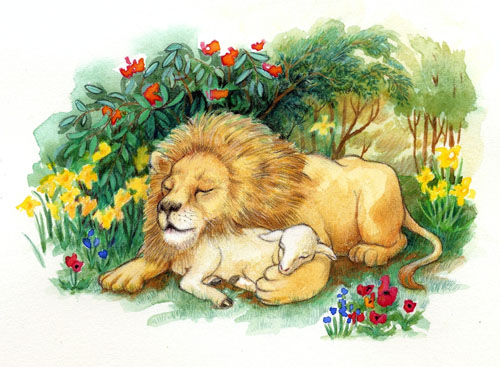
Doris Ettlinger sent in this gorgeous illustration reminding us of how March comes in as a lion and goes out like a lamb. Doris graduated from the Rhode Island School of Design and received an MFA from the University of Wisconsin – Madison. She was featured on Illustrator Saturday in 2010: http://kathytemean.wordpress.com/2010/07/17/illustrator-saturday-doris-ettlinger/
After talking about formatting your manuscripts, it was logical to receive a few emails asking about how to format a synopsis. That lead to adding other things you need to consider when writing one for your novel.
How to format your synopsis.
Use a one inch margins on the top, bottom and sides. Justify text at the left margin only. Use Times New Roman 12 pt. font. Type your name, address, phone number, fax number and e-mail address, each on a separate line single-spaced at the top left margin on the first page of your synopsis.
If you can fit your synopsis on one page, then you can single space the text with a space between paragraphs . If it goes over one page, then double space your text. Editors generally want one or two pages, but if you must go longer than you must – just keep it tight. You should always check a publisher’s submission guidelines, just to make sure you are following their rules before submitting.
Here are some things to help guide you through the synopsis writing process:
• You want to briefly tell what happens. This is one place you can ignore Show, Don’t Tell.
• Your goal should be to give an escalating series of turning points, a strong central crisis, a dramatic climax and a satisfying resolution.
• Introduce your main character first. Type a character’s name in all CAPS the first time you use it in the synopsis. Why? It helps the editor remember or find your character names.
• Remember your synopsis should showcase your unique voice.
• The synopsis should reflect your story. If it is humorous, be funny, etc.
• Start with a hook.
• Use present tense. This gives the story immediacy.
• Write the high points of your story in chronological order. Keep these paragraphs tight.
• Always answer basic who, what, where, when, why–early in the synopsis.
• Don’t waste words or time describing settings, unless crucial. Sometimes it’s enough just to put the date and place at the top, then start your synopsis.
• Omit unimportant details.
• Only include backstory if it is necessary to give the editor the information they need about the character’s motives.
• Always resolve the external plot question before you resolve the internal and/or relationship question.
• If it’s not a turning point, it doesn’t belong in the synopsis.
• Don’t use secondary characters in your synopsis, unless they are absolutely critical to the emotional turning points of the relationship. Even then, try to get by with the using the secondary’s relationship to the major characters (sister, teacher, boss.) They are too hard to keep up with and only add clutter. Only name them when necessary.
• Clearly convey the central question of the story, and what the resolution looks like. And resolve it at the end — don’t leave the editor guessing. They hate that, so spell out the story, including the ending.
• Rewrite your synopsis until each sentence is polished to the point of perfection. Use strong adjectives and verbs. Make every word count.
Check back tomorrow for a synopsis checklist you can use when drafting one for your manuscript.
Talk tomorrow,
Kathy
Filed under:
demystify,
How to,
list,
Process,
reference,
Tips Tagged:
Doris Ettlinger,
Rhode Island School of Design,
Synopsis Format,
Synopsis Guide 

Let’s talk fear. Okay, I’ll break the silence and let you in on a dirty little secret: EVERY runner has fear. Regardless of how fast they are, how much they’ve accomplished, the Gold medals sitting in those shiny cases…every, single, runner has fear.
Fear isn’t necessarily a bad thing, it just means that you WANT something. You have goals, you want to hit them and you’re scared/nervous/anxious because if you fall up short…then what? Fear merely proves you have goals that MATTER to you.
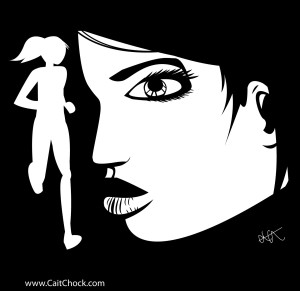
With running there is also the fear of the pain. BAM. I just touched on the TWO big taboos runners are never to speak of in the span of less than 150 words: fear and pain. Knowing that pain is going to be there, that you’re going to have to be mentally tough and push through that pain, that you’re NOT going to let that pain break you…that’s also where a large part of a runner’s fear comes from. And it also explains why, every runner, regardless of how good they are, be they professional or back of the packer will harbor some ‘fear’…every runner goes through pain. It’s part of our sport.
Now the thing is, the big difference between elite runners who race like ballers and every other runner who races like a gamer and the runners who implode is: the gamers don’t let the FEAR rule them. Gamers rule the fear. They turn the fear around, use that energy more as nervous-excited rather than nervous-fearful/worried. See the difference? It’s all in the mind.
Not letting fear rule you is difficult, even the most experience runners go through periods where they may struggle and need to get back on track. And to be honest, there’s always going to be a point in a race or workout where you’re riding a fine line between keeping your fear in check, “Am I seriously going to believe I can make it at THIS pace for THIS much longer?”
Combat The Fear
* Find Your Confidence:
Not letting fear rule you means you push those doubts aside with reminders of why you ARE a gamer. Think of past workouts, know that you’re mentally tough, know you’ve survived plenty of times when you’re mind began to doubt your ability…and you proved that silly mind wrong.
* Find Your Mojo: Tap into that confidence and a part of that is just realizing WHY you’re doing something. Without the ‘why’ as a driving force it’s easy to just let the fear take over and not give a flip over the outcome. Set some goals and know WHY you’re willing fight through this fear and OWN it.
* Relax: The thing with running and pain and then running through that pain, if you try and ‘fight’ it you usually wind up running slower. Kinda like you just have to ‘relax’ into the pain, let it come, than do your best to just numb it out. If this makes sense? To put this into more ‘physical’ terms, a good way to describe it is to just make sure your form and body is relaxed, you’re not clenching your jaw or fists or scrunching your shoulders up near your neck. Relax your body, relax your mind, don’t ‘try too hard’ and don’t ‘fight it’.
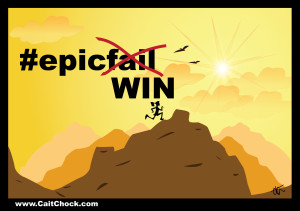
Everyone has fear, and that spans across all areas in life, but I’ve always found the best way to rule your fear is to DO what’s scary and prove that you lived through it. The more times you get through it, the less scary it becomes because you’ve built up your confidence.
I’ll tell you what helps me, and I’m be brutally honest, I say it like it is to myself, “Stop being a freaking idiot, just effing DO it.” Now, usually I’m not fearful of workouts, but I ultimately realize that the fear is stupid. Just effing do it would certainly apply across the board though, and with running sometimes that tough love is what you need. 
As for running, you can never let fear of workouts or racing turn into a monster: 1) because that sucks any fun out of running in the first place 2) you’ll implode in the workouts or races. Rather, just STOP thinking so much and freaking start. Just get going, relax, and roll with it…fear be da**ed.
The reason I feel it important to SHARE that EVERY RUNNER has fear is because you shouldn’t feel like a weakling just for having fear. You’re only a ‘weakling’ if you let that FEAR rule YOU. If that’s the case, don’t lose hope because you can always turn that around…tap into your confidence and race like the GAMER you want to be. 
——–
I wanted to do a post on fear because it came up in a really great article by Jason Fitzgerald at Strength Running. Read “7 Quick Lessons from my 16th Place Finish at the Rock ‘n’ Roll DC Half Marathon” because it’s filled with tons of important recovery tips for runners. The bit on doubts is what triggered my idea for this post. SR is a great resource for runners, so go, stay and check out all his awesome reads!
I also talk a lot more on the mental side of running and tips to tune out that pain in my ebook “Effective Mental Strategy: Race better by out-thinking your brain”
——–
1) Fear is ever-present in running and in life. What is the last things you had fear or anxiety about?
2) How did you deal with that fear in a positive, GAMER way? Or did you find that fear won that time?
3) The last time fear won, how did you learn from that experience and make it so you can overcome that fear going forward?
Yo, we all lose sometimes, it’s just important to learn and make that a productive ‘loss’.


By: Kathy Temean,
on 3/14/2014
Blog:
Writing and Illustrating
(
Login to Add to MyJacketFlap)
JacketFlap tags:
Interview,
Amazon Gaming Studio,
Tips,
Advice,
Process,
Mike Cressy,
Animator,
Children's Book Illustrator,
Graphic Designer,
Illustrator's Saturday,
Add a tag
 Mike Cressy grew up in Detroit area and started drawing as soon as he could hold a pencil. He remembers being sick at five years old his mother putting a stack of paper on his tray and he would draw all day. Mike had good art teachers in high school but is essentially self-taught, taking only one class to learn a certain technique from an illustrator he admired. He moved to California to work at an animation studio as well as creating posters for theaters in L.A. and worked for the Times and other publications. Then Mike started working for a software game company in 1996 and still does today. But children’s picture books are more fun for him these days although he still likes creating realistic work here and there. You will see his work on Seattle Weekly and other publications from time to time.
Mike Cressy grew up in Detroit area and started drawing as soon as he could hold a pencil. He remembers being sick at five years old his mother putting a stack of paper on his tray and he would draw all day. Mike had good art teachers in high school but is essentially self-taught, taking only one class to learn a certain technique from an illustrator he admired. He moved to California to work at an animation studio as well as creating posters for theaters in L.A. and worked for the Times and other publications. Then Mike started working for a software game company in 1996 and still does today. But children’s picture books are more fun for him these days although he still likes creating realistic work here and there. You will see his work on Seattle Weekly and other publications from time to time.
Mike is a member of The Illustrator’s Partnership of America (IPA) and the Society of Children’s Book Writers and Illustrators (SCBWI), and lives in Bellevue, Washington.
He has a knack for characters and strange creatures, has illustrated several children’s books and created artwork for numerous games, covers and logos.
Here is Mike showing and discussing his process:
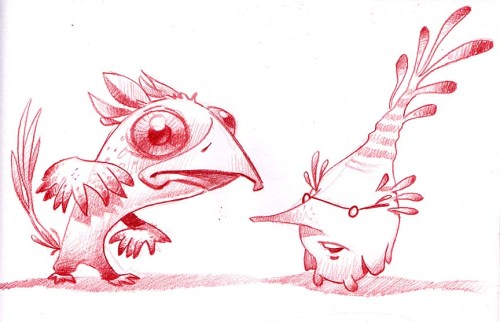
I start with the drawing. I need a background. Something that isn’t too distracting but colorful.

I fill in the background with a color and for some reason I think this purple is a good color to start with.
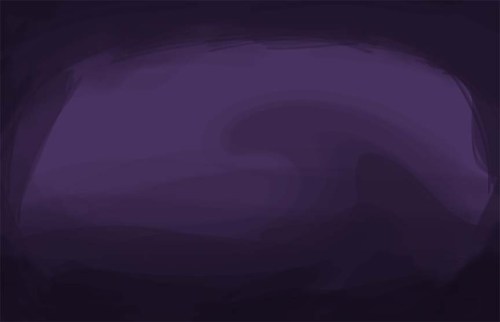
I start painting with a texture brush in a darker purple. I liked a wave shape and kept the brush at about 45%.
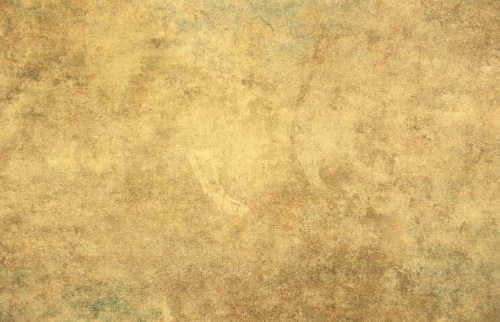
I had this free texture in my files, laid it over the background and set the layer blend to “Mulitply” and dropped the “Opacity” to 66%.

I filled in the next layer with a solid pink and then set the layer blend to “Divide” and the “Opacity” to 60%.
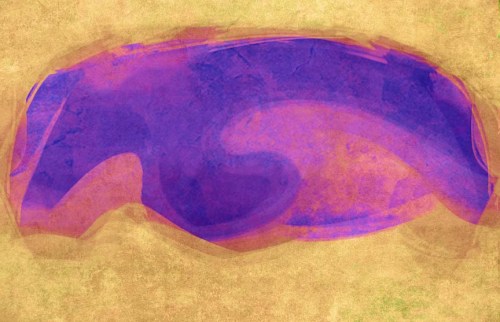
Then I Copied all the background files and flattened them, flipped it horizontally and selected the layer blend to “Pin Light” and lowered the “Opacity” to 60%.
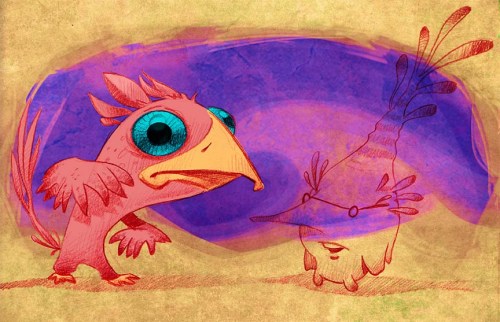
I went back up to the pencil drawing layer and selected the layer blend “Multiply”. I then made a new layer beneath it and the background and started to fill in the flat colors on the Bird.
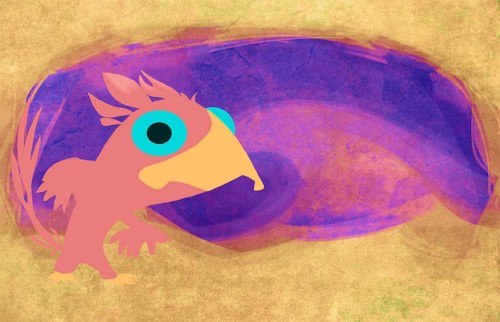
What it looks like without the pencil drawing overlaid.
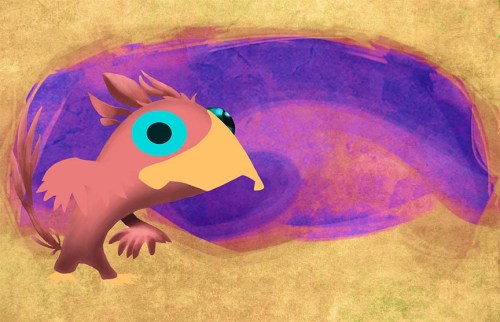
Next I start adding the shading, which is a darker version of the pink. I usually make a clipping layer out of the shading layer that is above the flat colors so that any over painting never shows up on the image.
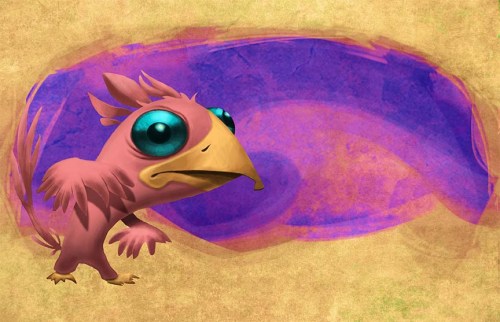
I finish up on the shading on the Bird.
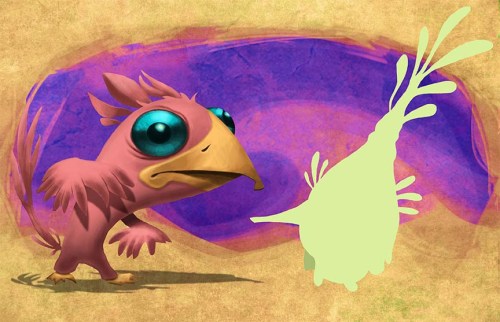
Here I’ve added a shadow to the Bird by taking a version of the basic color layer and scale down the vertical. This doesn’t always work because it can distort the shadow image in a way that is not reflecting the way a shadow should be, based on the light source. Here it seems to work well. I’ve also filled in the flat color of the “Beet” character.
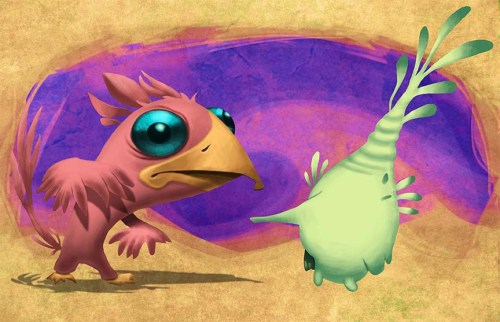
Using the same process for the bird, I made a clipping mask layer above the “Beet” flat colors and started shading with a dark green, shifting it a bit toward blue.
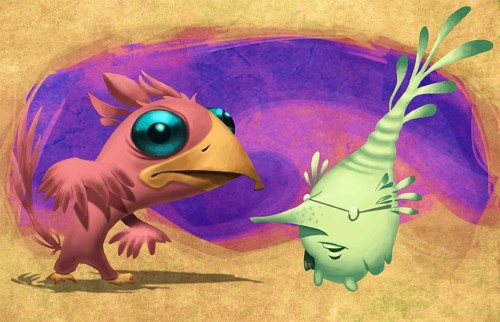
More detailed shading on the “Beet”.
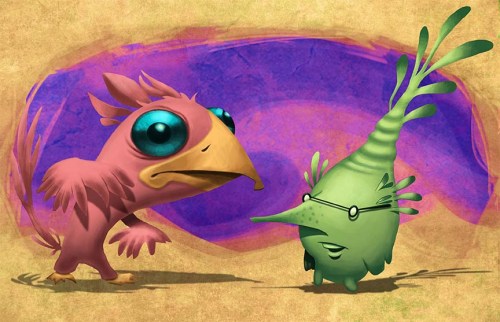
Then darkening the “Beet” with an overlay of the original flat colors and using a “Multiply” layer blend after finishing the detail. The I did the same thing for the shadow that I did on the “Bird”.
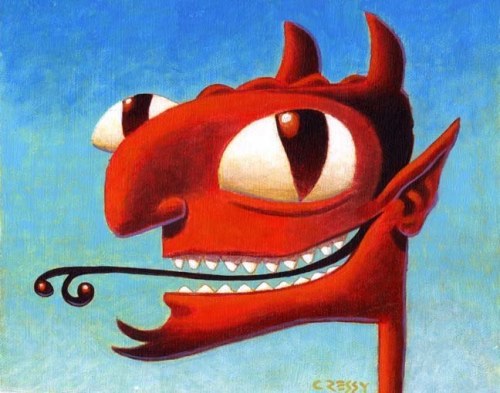
When did you first realize that you were good at art?
I don’t think I ever thought of it that way but I can remember when it hit me that I really liked creating art. My sister drew some cartoon characters on an invite to a party and I was enthralled that she could do that. I wanted to do that. Then when my mother sat me down in front of the TV with a tray loaded with crayons and paper, I drew for hours. I think I was home sick from school. I was 5 years old. Soon after that I started making up my own comic books with characters inspired by what I saw on TV.
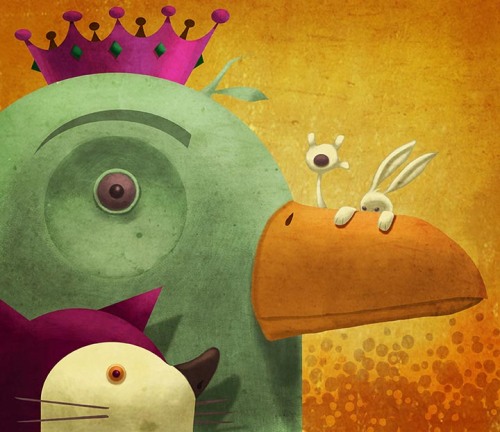
Did you leave high school and go to college to study art?
I was having a bit of a rough time as a teenager. I didn’t finish high school and couldn’t wait to get away from it. I did go to a community college to try and make up my credits for the diploma but never applied them. The classes I took were terrible. I had an art class there …I don’t think the art teacher liked his job. He would show up to take roll call and then tell us to draw something and then leave the classroom for the rest of the hour. Sometimes he wouldn’t come back. The history class that I took there was good and the teacher cared about the subject. I didn’t take another class till I moved to California from Michigan and had started my art career. That class was at Otis Parson’s and the teacher was an illustrator who’s work I admired greatly at the time. I wanted to learn his techniques, so I signed up for the class but I didn’t take other classes there and didn’t graduate from that school. I did end up using the techniques I learned in that class.
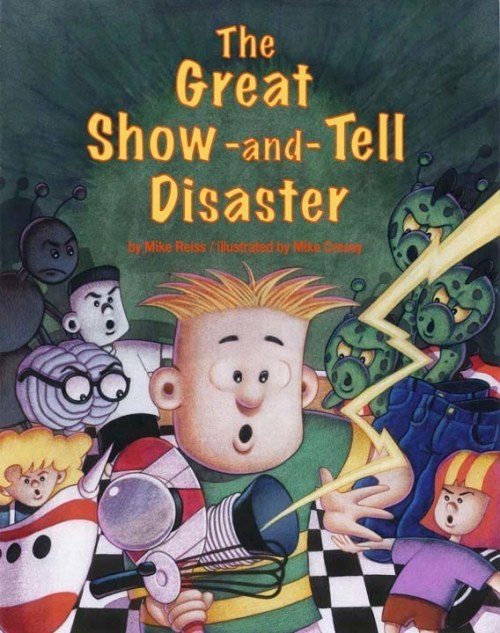 n
n
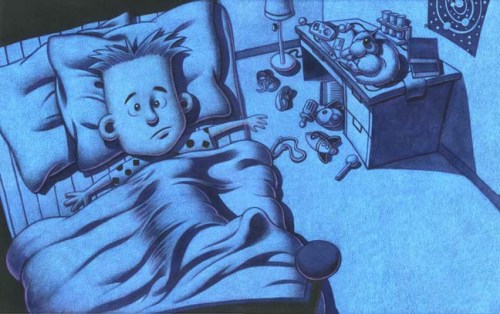
Where were you living at that time?
I moved to Los Angeles in my early 20s. Detroit, where I was born, was not the best place to start an art career. I had visited the art director of the Free Press in Detroit and he showed me the book “Graphic Artist Market Guide” and said “Look through that and see where you think you fit in.”
That was an eye opener. I didn’t see very many listings for places in the Detroit area. I called the two or three that were in there. One of them wanted me to draw some designs for T-shirts but then found a more experienced artist. Luckily I ran into an old girlfriend from high school at the local A&P. She told me of another friend of ours who had moved to L.A. and was working as an animator. She told me I should talk to him and see if he could get me in at the studio he worked for. I did and moved out to L.A. that summer.
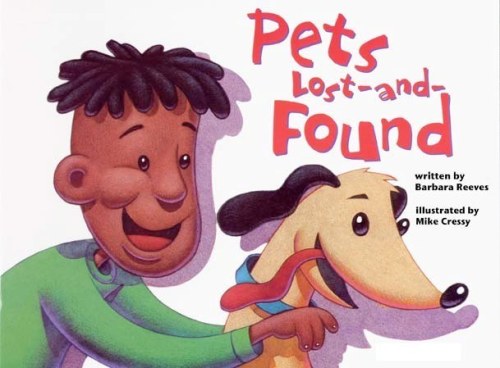 n
n
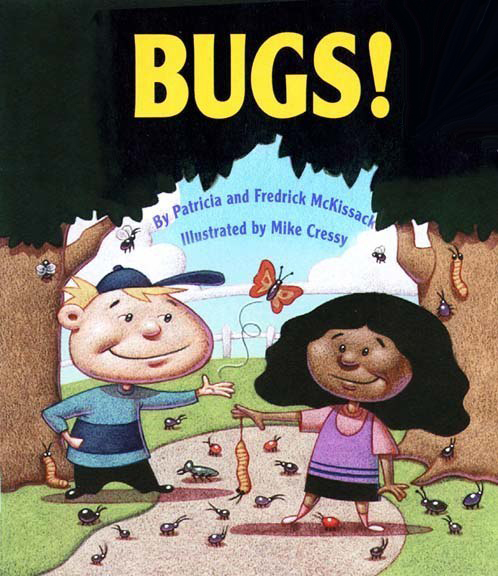
What did you study in college?
Illustration and a little history.
 n
n

What was the first art related work you did for money?
I did a mural in a dentist office when I was 15. It was terrible. My Mom had showed the dentist some of the Christmas scenes I did as a kid in the basement using the Peanut characters. I was a big fan of Charles Schultz. The dentist liked them and thought it was a good idea to have something like that in his office to lighten people’s moods before sitting in his chair. I think I got $25 for it and was happy to have some extra dollars.
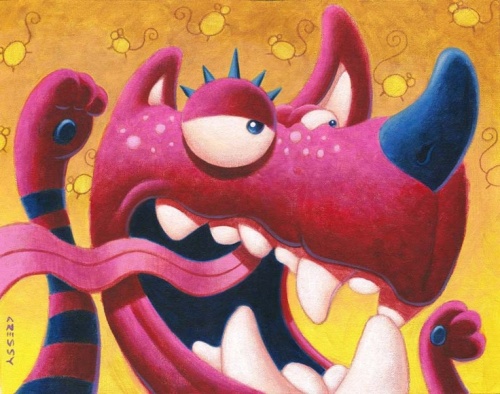
How did you get involved in advertising illustration?
During my 4 years of an animation career, I became infatuated with illustration. I had always like illustration but now I saw it as a possibility. Being in Los Angeles, there were tons of advertising agencies and at that time they used a lot of illustration. I took a C.E.T.A. government-training job at the Los Angeles Theatre Alliance, which allowed me to work on posters for plays and do storyboards. I also had plenty of time at LATA to work on my portfolio, which I did almost every day. When I got about 12 good images I started taking my lunch time to visit advertising agencies, newspaper editorial offices, art directors at large companies, magazines and graphic art studios. If people don’t see your work, you don’t get work. So getting my portfolio in front of the people who were making those decisions was and is important. I eventually started getting assignments at all those places. I had some big time clients very soon. I made good friends with the art directors and would hang out with them and their wives at parties. Networking was and is a big thing. I am doing my best to do more of it.

You say you have had your own studio, since 1980 (Do you mind if we not mention the year here? I’m finding that there is a lot of age-ism these days). Is that because you have done freelance artwork, while working at other jobs?
Every artist should have their own studio. Not just for freelance work but every artist should be working on their art all the time. Of course you need to break away from it here and there to recharge your creative batteries but always have a place where you can create the art you need to either get work or to just get it out of your head and see if you can reproduce that which was inside your head.
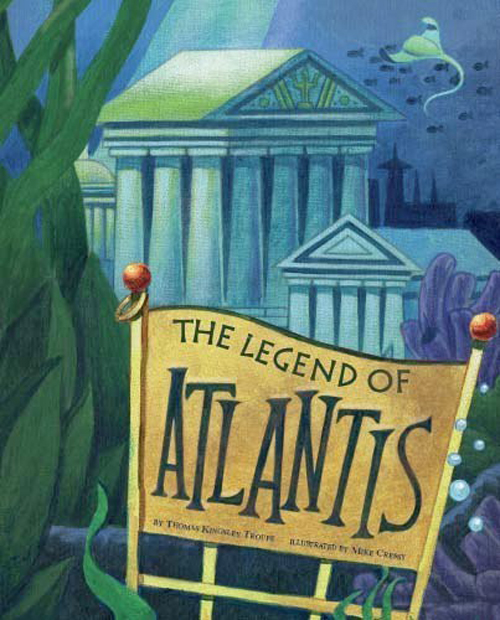
Did you develop your style during the advertising years or would you say your style developed while working in the gaming industry?
During my advertising years I found that it was a good idea to be as photo realistic as possible. It seemed to be what the agencies wanted but I always found a way to make it somewhat surreal, using some metaphor that was implied by the art director, the subject or the text. That kept me engaged and excited by what I was creating. After a while I started getting uninspired by the lack of imaginative ideas coming from art directors. They seemed to be coming from the same book of ideas and were unwilling to try something different. That’s when I had to step in and do something to save myself from a boring career. So I started slipping in changes in my style. Not being so realistic and adding more oddball things here and there. I had seen other illustrators doing this and it was exciting to me. So I thought that was a good way to go. One day while I was working out of a studio in my garage when my wife and me lived in South Pasadena and just started drawing from the idea I had in my head for an assignment from a magazine and it just clicked. I knew then that I had a personal style that I needed to develop. Which was juxtaposed with the very realistic rendering I was doing of a building for Cedars Sinai Medical Center on my other drawing table.
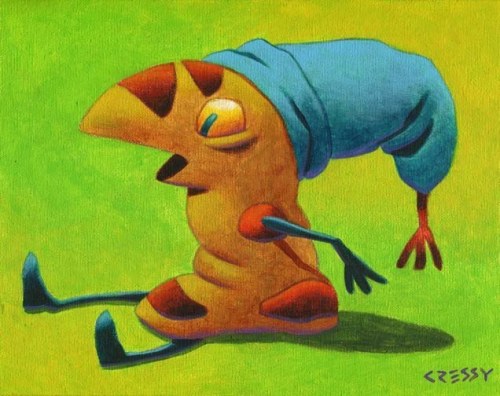
Coming into the game industry helped to solidify my idea of what I wanted to do with my style. They were very open to having something that very unique and when you have a style that nobody else can do but you, they hold on to you if they really like that style. That’s not to say that you style can’t evolve over time. Mine certainly has. I went from a realistic style to a very cartoony style almost over night. Then I started mixing the two. But that was a way for me to evolve from a very basic extreme. A new beginning, in a way.
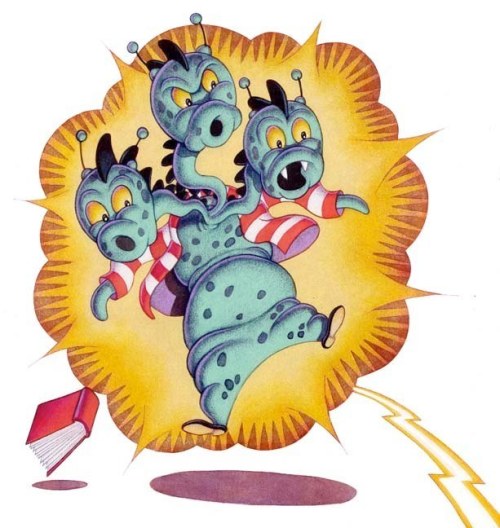
Did you move to Seattle specifically to get involved in the gaming industry?
When my ex-wife and I moved to Seattle it was to get away from the craziness of what Los Angeles had become. Tensions were high and we had just gone through a riot. At one point when the riots started, my wife and called me to tell me she was leaving work early because fires were being set. My car was in a repair garage in down town Pasadena, which was near one of the hot points of rioting. I thought my car was going to be destroyed because a building a block over from there was set on fire and burned to the ground. The owners of the garage left for their safety. So there I was with no wheels and my wife was trying to get home from her job in the San Fernando Valley. She didn’t get home till 9:30 that night. We didn’t have cell phones and I was so worried that I tried calling everyone on our landline to see if they had heard from her. After that experience we started looking for places to live outside of Los Angeles and raise a family. We really liked San Francisco but it was too expensive. Then I saw an article about Seattle in Sunset magazine and the photos were amazingly beautiful. It looked like the perfect place.
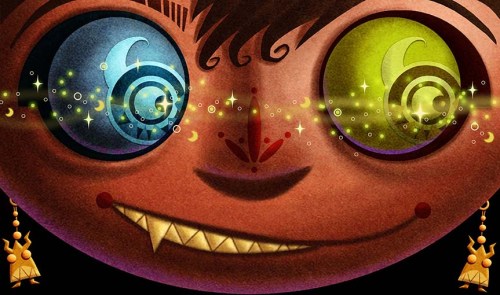
However, when we moved here I lost all my clients in L.A. and it was tough getting anyone to look at an artist from Los Angeles. They hated Californians here at that time. Now, nobody cares but then, it was a different story. They thought we were all rich and making the housing price go up. They felt like they couldn’t afford to buy a house. They blamed us instead of realizing that companies like Microsoft were responsible for hiring people from other places and bringing them to Seattle.
After 6 months of living here and not finding much work, I saw a listing in the Seattle Times for an artist at a software game company in Issaquah… a bit of a drive from West Seattle where we lived. I got hired and they taught me how to create art on the computer using Photoshop. Electronic Arts eventually bought them and I moved on to Microsoft and other game studios.
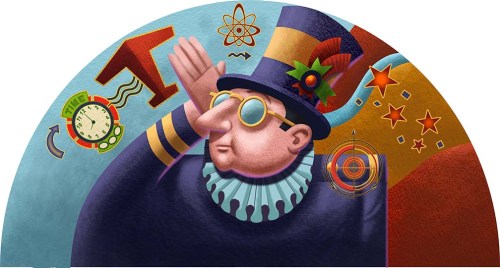
Was it after the move to Seattle that you started thinking about illustrating for children?
Actually I started getting into that when we lived in South Pasadena. My wife had shown me the current crop of picture books that had these incredibly cool illustrations by William Joyce, Lane Smith, Kevin Hawkes and a few others. It blew my mind. I had not thought about doing that as a career and my eyes were now wide open. I had been a fan of Robert McCloskey and Dr. Seuss as a child but never thought to do that as a career, but now it seemed like a possibility.
My wife and I talked it over and she said that she had always wanted to write children’s books so we started to collaborate on a book. I created the illustrations after she wrote up a story quickly. I didn’t think it was a great story but I also thought that it would evolve and get better. She didn’t want to re-write anything and we argued about that. I ended up putting a dummy together that was quite elaborate. I had color illustrations mixed in with the drawings for the rest of the pages. I had a color cover… but the story wasn’t very good. I sent it to a few publishers before we moved to Seattle but got only rejection letters. I suspected as much and it dampened my spirit about doing another picture book dummy for a while. I didn’t illustrate a full picture book till after my divorce and had started working in the game industry.

What was the first thing you illustrated for the children’s market?
That was an educational book when I first started working for advertising agencies. I had that realistic style and a book publisher saw my portfolio somewhere and called me up. The book they had me illustrate was a test book for a 5th grade reading level. So the realistic style seemed to work with for them with that level. It was all in black and white so I used my ebony pencils to do very tightly rendered illustrations. If you want to do varied tones and textures that look realistic on certain papers/boards… you can do it somewhat easily using an ebony pencil. The darks are very dark and the lighter areas you just do a little rubbing with your finger… smudging the graphite. I don’t have a copy of that book anymore. It went missing during one of the moves. I’d love to still have a copy.
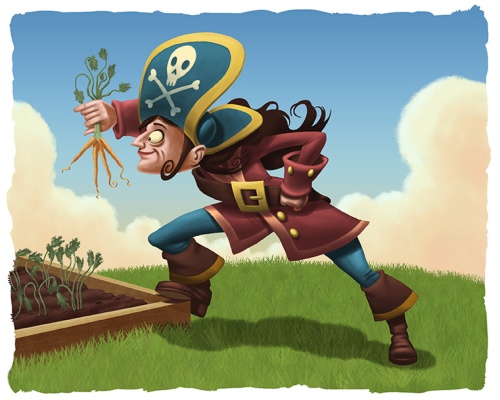
How and when did that come about? (See previous answer)
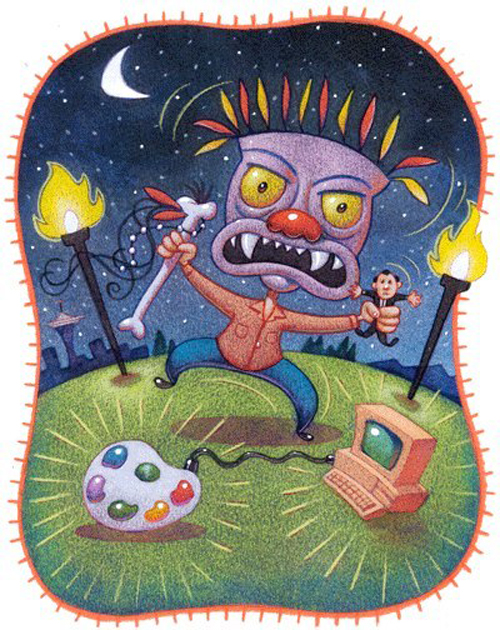
I am assuming you were one of the early adapters to Photoshop, Flash, and the other software programs for illustrators and designers. What was the first piece of art that you did digitally?
OMG… it sounds so long ago now. I started with Photoshop 3. That along with a program called “Debabelizer” which helped you convert files. When I got my first job at Microsoft they introduced me to a program that became Flash. It was called something else at the time, but it was a great tool to animate with. It was more acceptable than using another program that I used at the time called “Animator Pro” or “Ani-Pro”. AP was a better animation tool but the way they labeled commands weren’t right and it was confusing to use at first until you spent hours learning those arcane names of commands.

I remember the first drawing I did in Photoshop was of an animal skull. I had done several pencils drawings for the product we were creating in Issaquah. I scanned them into Photoshop and drew over the top of my pencil drawing with the pencil tool in Photoshop. I was surprised at how well it turned out but and it gave me confidence to do the next one and the next and add color. It was exciting to see your art on a monitor. I still enjoy that part.
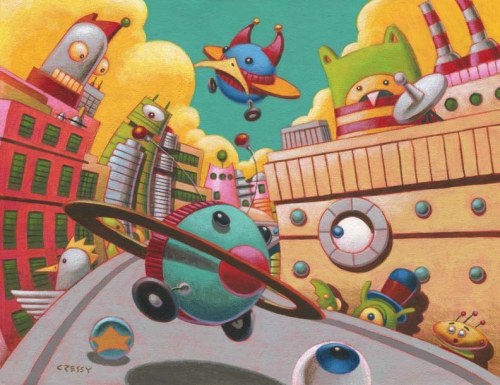
Did you ever get involved in the animation side of gaming with your artwork?
Yes, I did a lot of animations the first 5 years or so. I even got some advertising agency work creating my own bizarre character and animating him for a Compaq Computers thing that was to be included with software when you bought one of their computers.
I just found all these old floppy disks with all my animations on them. There is no way to really look at them now but the last time I saw them I was embarrassed that they were so low rez. I thought it was just better to throw them away.
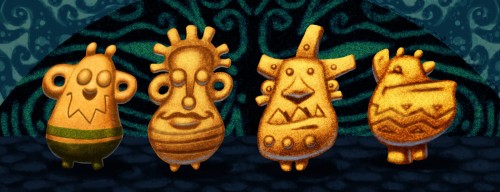
When did you join the SCBWI?
I joined SCBWI in the late 90s. I had just started illustrating several picture books, and finished three in a row for Grolier. They asked me to illustrate their catalog for that year. I was happy to do that for them and excited at the thought that other publishers would see my art. When I finished the cover, Grolier rewarded me not only with money but they sent me this big box of gourmet dark chocolate with liqueur inside each one a week after I finished the art. It took me a month to go through that delicious box.
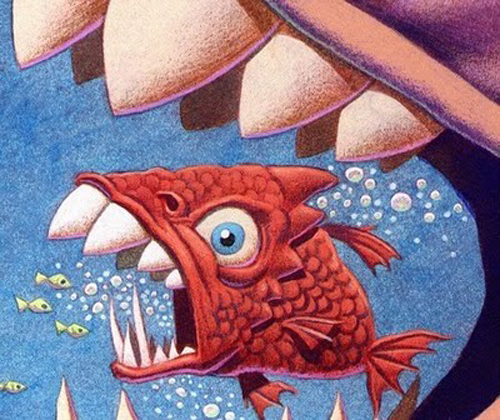
When I came down from that chocolate high… a friend of mine told me about the SCBWI and I realized that it would be a great idea to join and start networking with fellow picture book illustrators and writers. I’ve been a member ever since and have gone to many conferences in Los Angeles and Seattle. Next year I hope to go to the one in New York, which I’ve wanted to do for a long time but was freaked out about doing since 9-11. I may be over that fear finally.
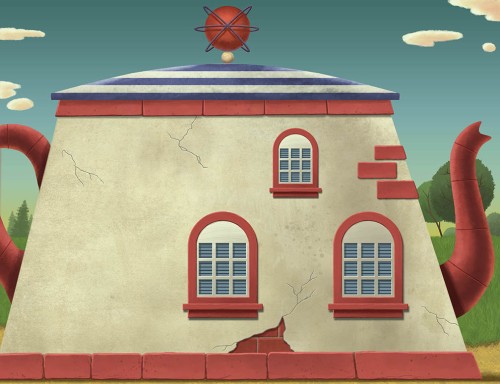
Do you have an agent or artist rep.? If so, who and how did the two of you connect? If not, would you like to find good representation?
I’ve had many art reps over the years. One of the best reps I had was Barry Schaffer in Los Angeles. He was always on my side and fought for me when it came to discussions with clients. We got to be good friends for a while. He knew a lot of well-connected people in L.A. and I would get party invites from them.
I was in Italy for vacation one year and had left Rome to stay on Sardinia, a large island west of the Italian coast, just below Corsica. I had called my studio, which I shared with 6 other illustrators and heard that my rep had called with a big job. He had landed the Camel Cigarette account from Salisbury Agency and I needed to come back and start working on the illustrations before it goes to someone who wasn’t on vacation. I finished up my two weeks on that island and came right back to Los Angeles. I would have traveled more on the main land of Italy if I didn’t come back for that assignment. Barry left the business a few years after that and we lost touch. I have no idea what he’s doing now.

I currently just signed up with a terrific rep in Connecticut. I like how she works and I look forward to a good relationship that I hope lasts for a long time. I found her on line and sent her some of my art. A week or two later I got a call from her and we talked for a couple of hours. I had a good time on the phone with her. It’s like making a new friend.
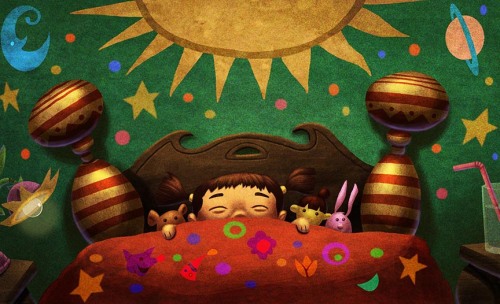
When and what was the first children’s book that you illustrated?
I had always done educational books from early in my career, but the first picture book I illustrated was by a small publisher and I’ve mostly forgotten about it. But it lead to the 3 books at Grolier, which came fast. Bubble Trouble by Joy N. Hulme, Purple is Best by Dana Meachen Rau, and Bugs by Patricia C. and Pat McKissack. The Bugs book was made into an interactive eBook a few years ago. A company in Japan did the eBook. They took my illustrations and animated them in a way that keeps the integrity of the art and is a lot of fun. However, they never contacted me that they were doing this and made no effort to offer any sort of compensation for re-using my art. I tried to contact them about this but it was fruitless.
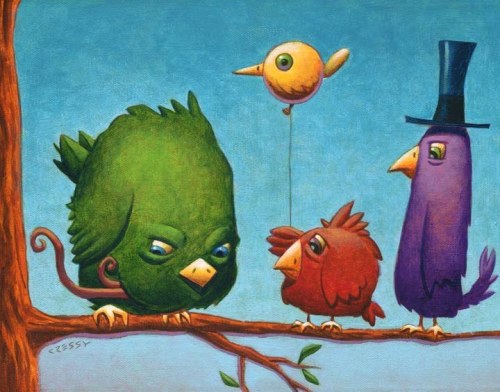
How did that contract come about?
I think they saw one of my images somewhere and called me about doing a book for them. After the first one was finished, they asked me to do another and then another. I wish it happened like that with all publishers. I’d be very happy. The editor/art director was so much fun to work with.
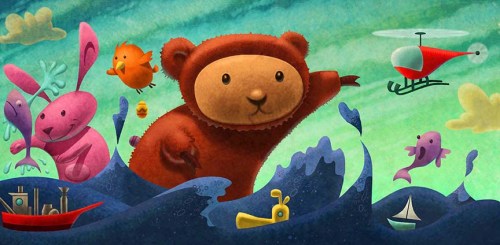
Do you consider that book to be your first big success?
Yes, I’d say so, but “The great show and tell disaster” by Mike Reiss was higher profile because he is a writer/producer on “The Simpsons”.
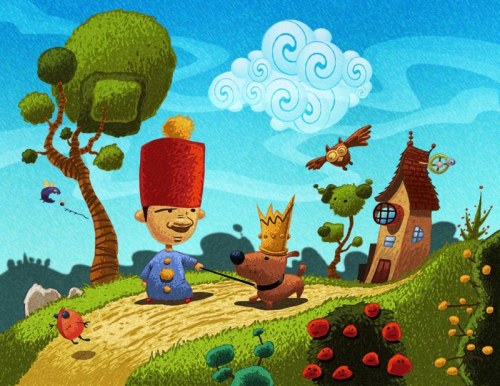
Have you tried to write and illustrate a children’s book, yet?
I’d had many attempts at it but it wasn’t until recently… like the last 3 or 4 years where I actually felt comfortable in the writers roll to be able to write something that I think would work well as a picture book. I’ve got ten that I’ve been working on for the last year. One is almost finished in terms of it being a picture book dummy that I will be sending out to publishers and literary agents. The other ones are in various levels of completion. I think it helped to have been working on my graphic novel for the last 6 years. I hope to have that finished this year as well.
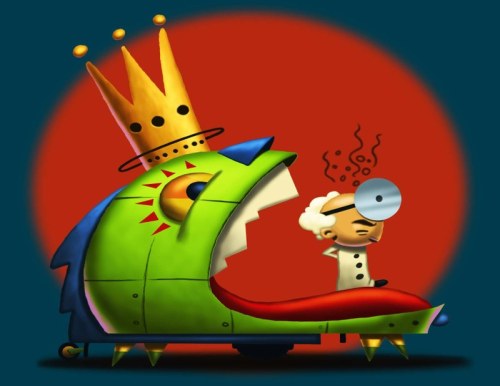
What type of work have you done for Scholastic?
Illustrations for books.
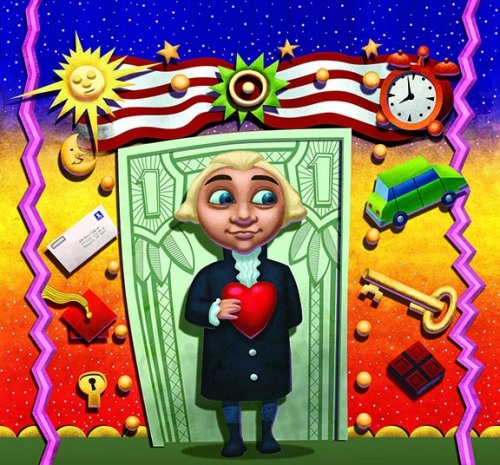
How many children’s books have you illustrated?
Nine that have been available to the general public and at least three times that many that were educational and just for schools.
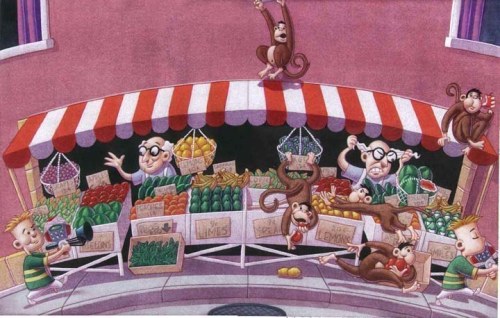
Have you illustrated any book covers?
Yes, plenty. The first 15 were done for Holloway House in Los Angeles. I don’t show those to anyone.
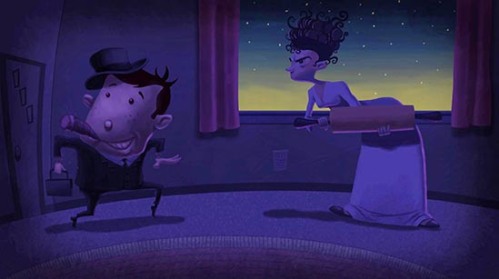
Do you feel living in Seattle hinders you in any way with getting more illustrating jobs?
No. What hinders me is not getting my work in front of people who could possibly give me work.
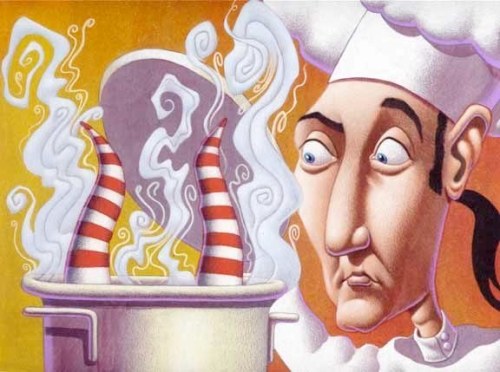
How did you get the Rookie Readers books with Children’s Press?
See my answers that concern Grolier Press because they are the ones who published those.
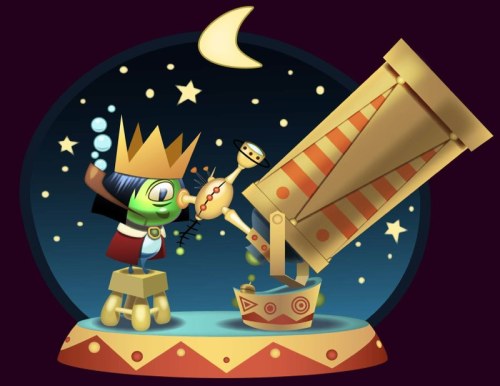
How did you hook up with Grosset & Dunlap to illustrate LOOK! MY TOOTH IS LOOSE?
I had worked with the same art director/editor on a previous book “The great show and tell disaster” and we got along very well. He liked my work and wanted to find more projects for me. It was too bad that in the middle of the “Look, my tooth is loose” book that he had a major dispute with his bosses and left the company. The person who took over the book wasn’t happy about taking over someone else’s book and wanted their own ideas pushed forward. I like how that book turned out but the relationship them suffered because of the change.
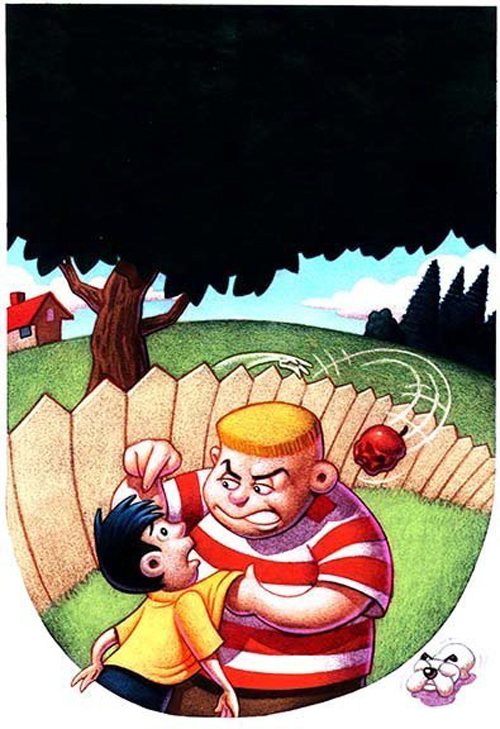
What book made you feel like, now I’ve made it?
None. If that ever happens… I’ll be very rich and famous. But we’ll still be friends… right?
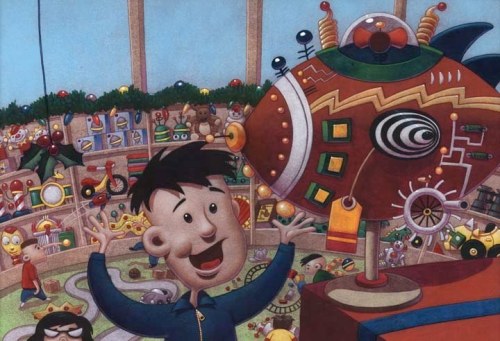
How did you get to work for Amazon Game Studio?
Per my exit agreement with Amazon, I’m not allowed to say anything about them in print, or on line.
Let me just say that was hired as an artist to work on games.
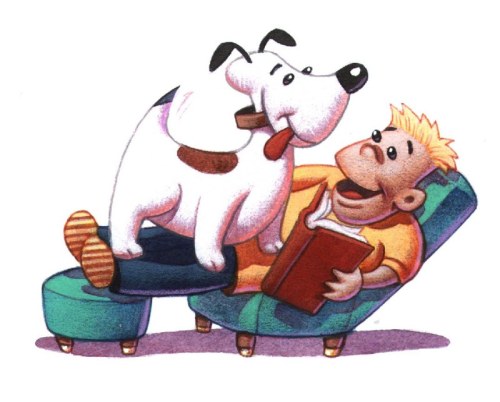
How do you do that living in Seattle? Do they have a studio there?
Since their inception, Amazon’s headquarters have been in Seattle.

Is there a strong art community in Seattle?
When I first came to Seattle it was a small community of artists but the core of the city had a very art friendly nature to it. Since then it’s gown by leaps and bounds. These days you can’t toss a piece of paper without hitting an artist. That’s both good and bad. It’s great to have a community of like-minded people who support each other. On the other hand, it means that the competition for work is fierce.
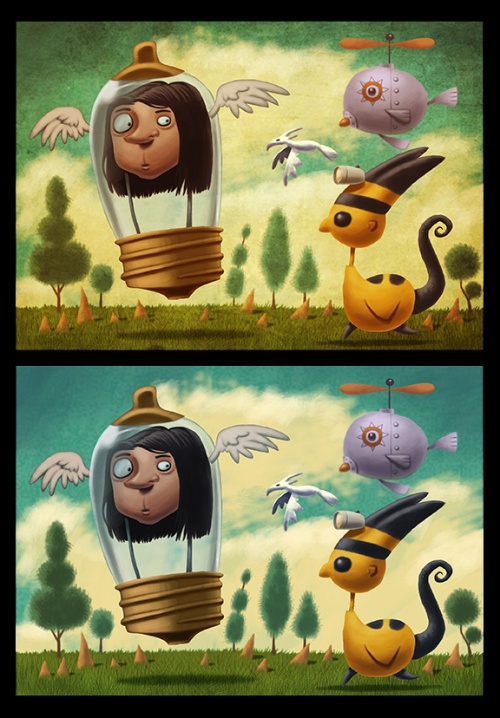
Have you done illustrations for any children’s magazines?
Yes, many over the years. I have an illustration on the current cover of Spider magazine.
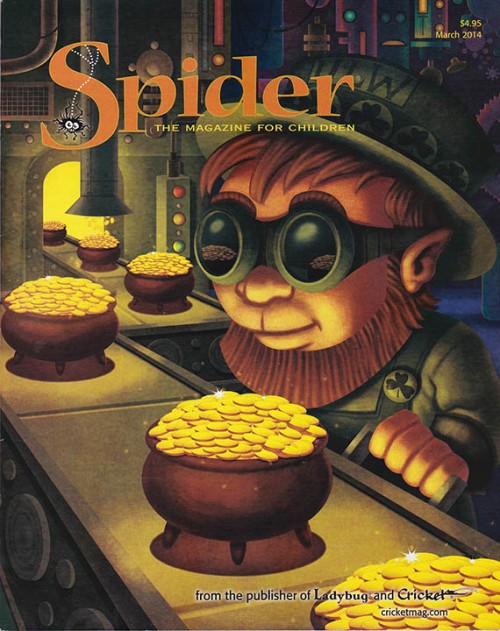
Now-a-days, do you do any illustrations using traditional paint? If so, what materials do you use?
I do many paintings for my portfolio traditionally. I usually paint with acrylic but sometimes it’s oil. Either one I’ll use on canvas. I like the texture of canvas. It’s been a while since I’ve painted on any other surface. That being said, right now I’m reworking my portfolio and it needs to reflect digital art to get work and so the most recent images are digital paintings from a traditional pencil drawing.

What do you feel you bring to the table that other illustrators do not bring?
Since illustrators must have imagination I’ll say that my particular brand of imagination and my style of taking that image from my imagination and presenting it in the only way I know how.
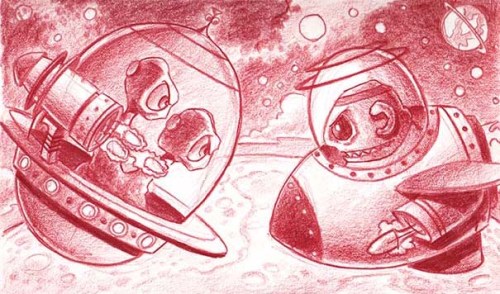
What types of things do you do to find illustration work?
Things have changed so much in the last five years that it is different every year. Things that I’ve done in the past that almost guaranteed work, no longer bring in jobs. I do what ever I can fit in each week to get my work out to the people who make those decisions. It’s the best that anyone can hope to do, and with a little luck an art director, editor, publisher, game producer, account executive will send me an email or pick up the phone and call. I know that sounds vague but if I were to list everything that I’ve been doing every week to get work, there would be a long list. I’m on line for several hours each day posting my work, sending resumes and emails that feature a new image that I created. I’ve got blogs for several different aspects of my portfolio as well as several different Facebook pages for my books and ideas. It’s a difficult world to get a paying gig in lately. I would love to keep doing what I’ve been doing for most of my life so I have no choice but to spend that time productively in pursuit of the next job.
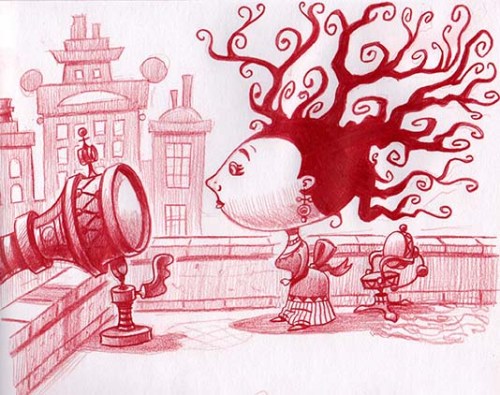
What is the one thing in your studio that you could not live without?
Without any doubt it would be pencil and paper. If all I was allowed to do from now on were to draw I don’t think I would be unhappy. That and my guitar. Music is essential for creativity.
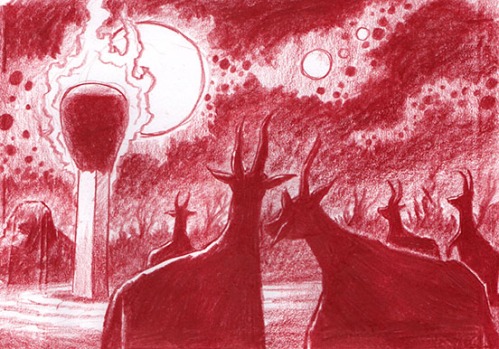
Do you try to spend a specific amount of time working on your craft?
I wake up thinking about what I’m going to draw that day. And if it’s not a good drawing day (and that happens every once in a while), then I start painting either on canvas or on the computer. I don’t think about too much other then what I’m going to create that day, except for when I have unrelated events and chores. So, to answer your question, there is no set or specific time limit or schedule. Creating is part of life not an appointment.
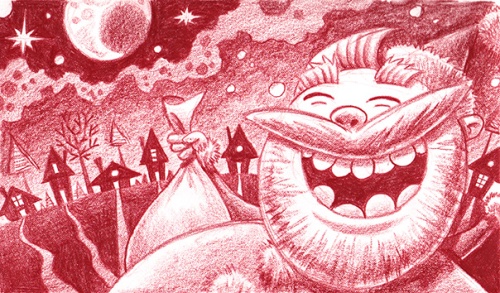
Do you take pictures or do any types of research before you start a project?
Sometimes. It depends on my needs. I certainly do research to find out what something really looks like and if there is any way I can add to it and somehow make it more of what it is. Maybe skew it in some way. Give something a unique POV. Sometimes that means looking at how another artist would handle that situation, angle, or item. It helps to be prepared. It usually makes your image much better for it.
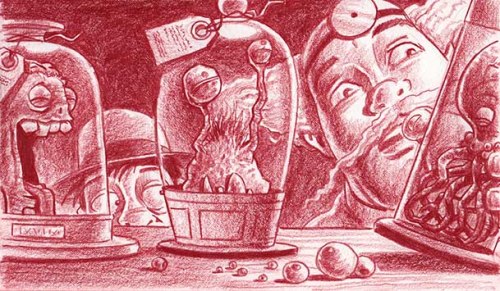
Did taking research photos spark your interest in photography?
I’ve always been interested in photography and I used to be one of those technical guys that had the exact exposure and lenses, but for a long time now I’m of a sort that prefers just having a good eye for an image and a simple camera. When I photograph landscapes I try to make sure there are no people in my shot. That makes some of my photos look like there aren’t any humans left in the world. It gets more difficult every day to do that in Seattle. We’ve grown so much here and there are way too many people everywhere now. I’m not anti people… let’s just spread out a bit more.
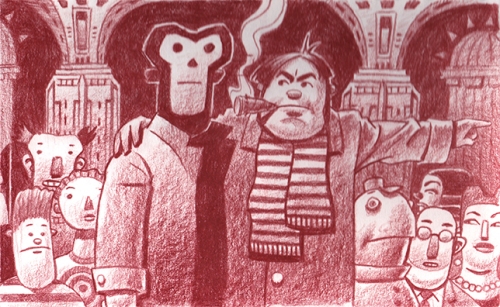
One of the reasons I gave up on being so technical about photography was from this incident when I was at a concert in Dodger Stadium. There were 4 or 5 bands and I had press passes for my girlfriend and me at the time. I made her the photographer and we both carried around all my equipment. During a band change we took a break backstage and we put my cameras and lenses in the photographers tent on a table like every one else. When we came back from getting a bite to eat,… all my equipment was gone. It was a big lesson and I realized that I didn’t need all that equipment to take a good photograph. I just needed a simple camera. I feel that way when I’m work on my art style. Simple can be the best way much of the time.
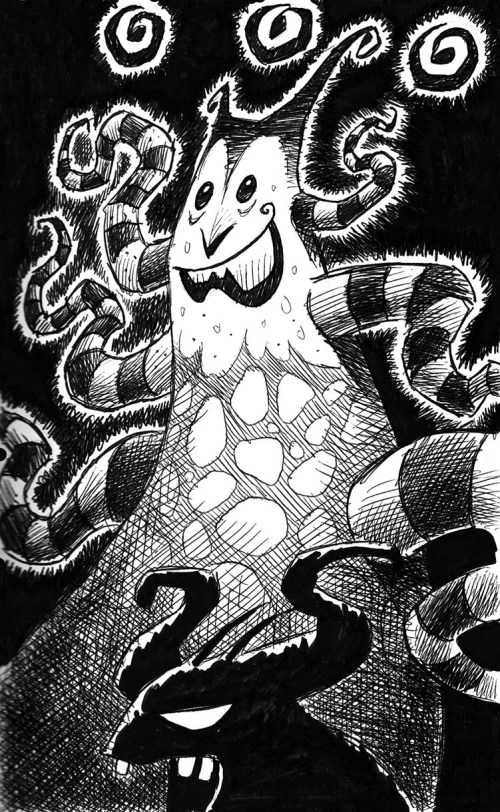
How was the idea for Seattle Reflections born?
I have a fold up bicycle that I carry in the trunk of my car throughout the fair weather months in Seattle so I can cycle wherever I feel the need to do so. Every time I would drive into Seattle during those months, I made sure that I brought one of my cameras with me. That bike gets me into some parts of Seattle that most people don’t get to or see much. I can get to different POVs that are exciting to view and try to take the best picture I can get. I turned those cycling photos into the book.
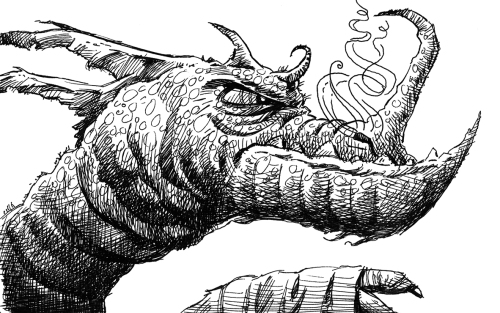
Have you won any awards that you are particularly proud of?
I’ve won a few awards over the years and really it’s just something that is really exciting at the time but they don’t pay the bills. Better to have them than not. The one that I’m proud of is the one I received from the Society of Illustrators in Los Angeles in 2012 (Illustration West 50) for the poster of my Super Alphabet picture book. Which wasn’t published at the time. It featured all the letters. I worked very hard on that book and still think of it as one of my better books but there is way more to come.
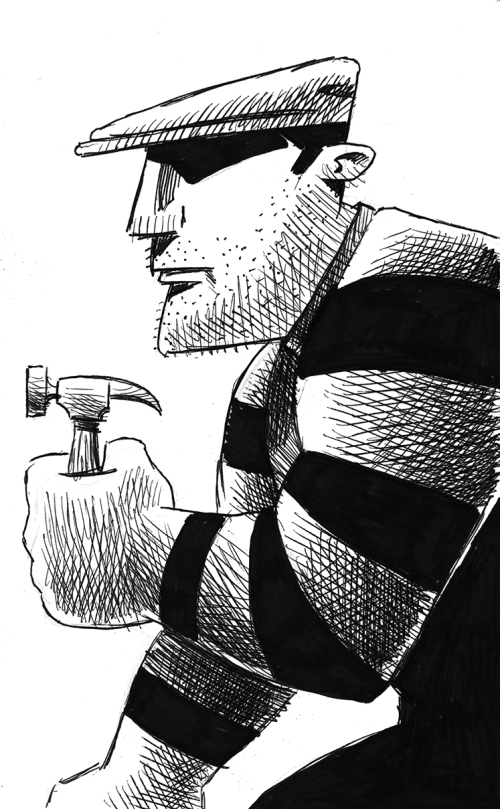
I am sure you have used a Graphic Drawing Tablet with your background, but do you always draw on one?
Yes. When I’m working on the computer that’s all I use to draw with in Photoshop, Illustrator, Flash, Manga Studio, Sketch up and Sketch Book Pro. When I’m at a full time job it’s nice if they can afford to get me a Wacom Cintiq. A Cintiq is so much easier to draw and paint with on the computer because you are doing so directly on the image and not detached from it as with a regular Wacom tablet. That directness improves speed and accuracy, which in turn allows you more freedom with your creativity. I guess that sounded a bit like a commercial but it’s true.
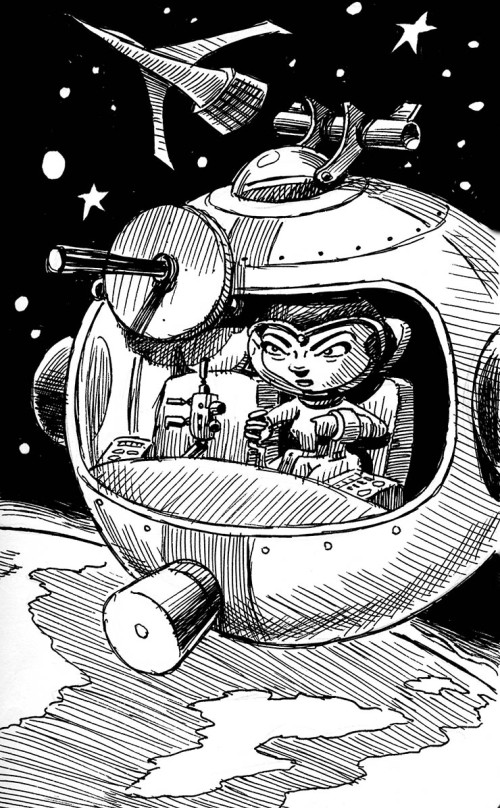
Do you have any career dreams that you want to fulfill?
Yes, Plenty. I have a ton of stories that went to tell before I leave this mortal coil. All the picture books that I’ve started working on. The graphic novel that I hope to finish this year is the first of many that I hope to create. I just hope that people find them interesting and worthy of their time and are either informed or entertained by them. I also want to rework the way I do my abstract images and have more gallery shows. I’m trying to work out some licensing possibilities and if those pan out, perhaps they can be a good source of funding for the rest of my projects. I’d also like to have the band that I’m in be able to get a drummer so we can start playing more gigs. 
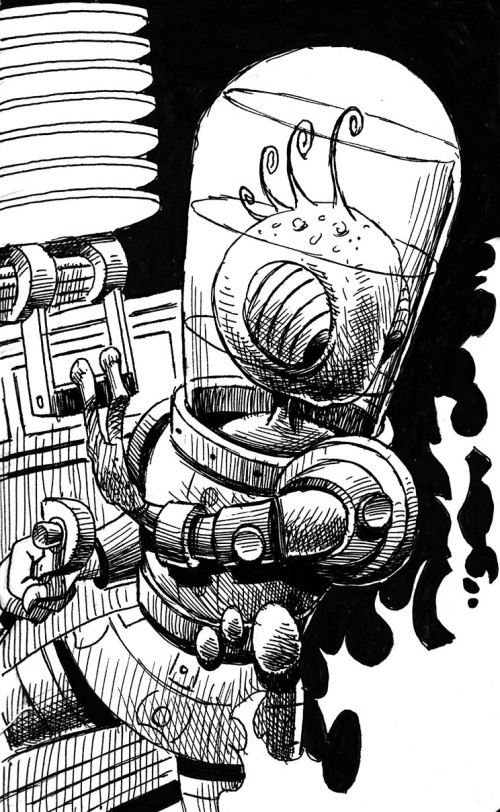
What are you working on now?
I just finished a lot of art for the Tacoma History Museum. They called me a few months ago and asked if I had time to work on art for an exhibit explaining the concept of “Time” to children. I thought it was a great idea and said yes immediately. So I had a meeting with the director, who is a terrific, fun, woman, who has great ideas for the museum and it was a pleasure to work with her. I digitally painted two murals for the exterior walls and the banner that promotes the exhibit. They are also using several of my older paintings for the interior of the exhibit. It opens in May of this year. I’m very excited about it and will appear at the opening to sign postcards and posters. I also might be wearing a bit of a costume that one of my characters will be wearing in the exhibit.
I’m also finishing up one of my picture book dummies that I wrote and my graphic novel that I’ve been working on for the last 6 years.
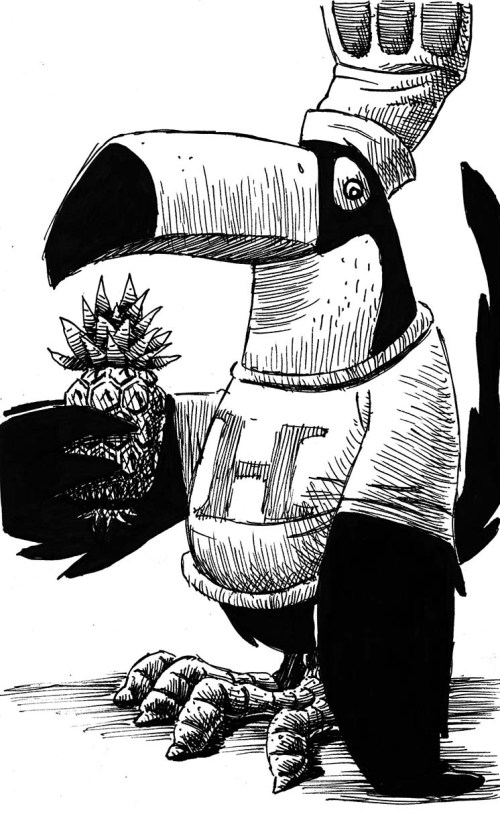
Do you have any material type tips or software type tips you can share with us? Example: A new product that you’ve tried – A how to tip, etc.
The best thing you can do for yourself as a current day illustrator who wants to work as well as work fast is to explore new art software. Photoshop is great and it has many things in it that many people don’t know about. I love using the layer clipping mask. Also either make your own brushes or find a source to get new brushes from time to time and experiment with them. Also use textures to give more life to your paintings. Manga Studio is a great, great program for drawing. I prefer drawing in that program than any other program and the reason why is that it has so many options for your drawing. You can adjust lines that you’ve already drawn very easily. It also has the best perspective tool that also allows for adjustments after you’ve created your image. Sketch up is great for creating a quick 3D model of something that you may need to draw from various angles instead of guessing how it would work if you turned it 30 degrees in any direction. Don’t be afraid to experiment.
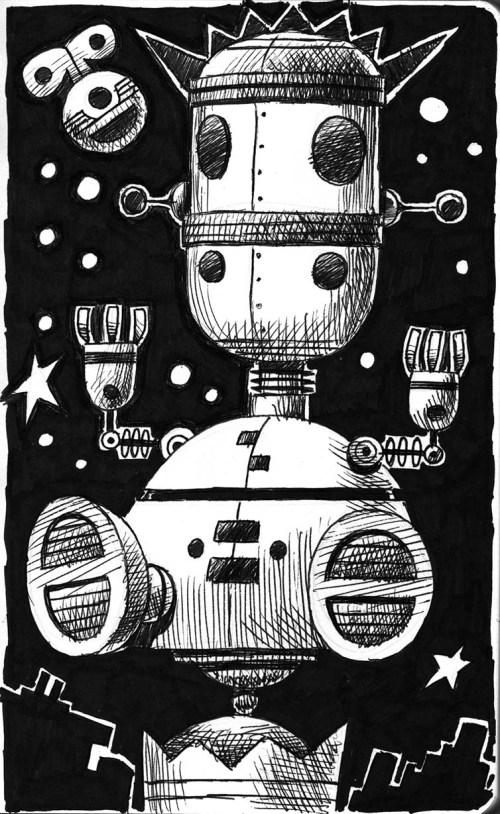
Any words of wisdom on how to become a successful writer or illustrator?
Make sure to keep positive in the face of constant rejection. Do your best to write or illustrate every day. Network as much as you can. You never know when a friend will be in the position to help you get a job, give you a chance or even just be there for some encouraging words. Be kind to others and help them when you can. Everyone needs a helping hand and sometimes good luck isn’t enough. Be sure to exercise daily and get plenty of rest and eat healthy. Promote, promote, promote.
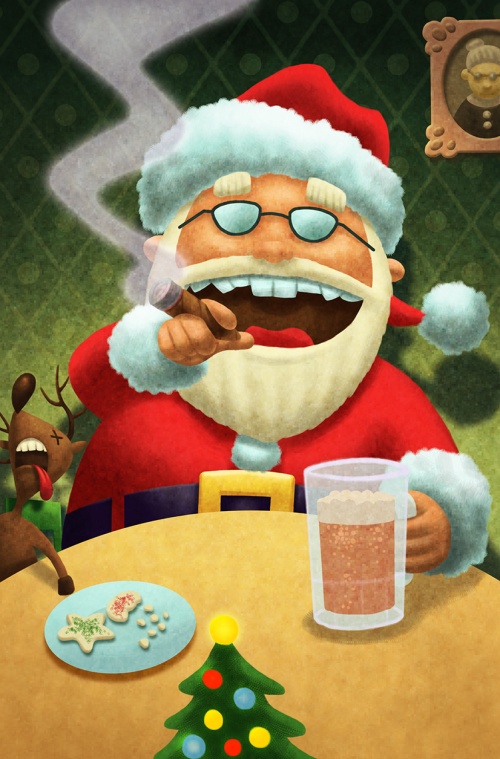
n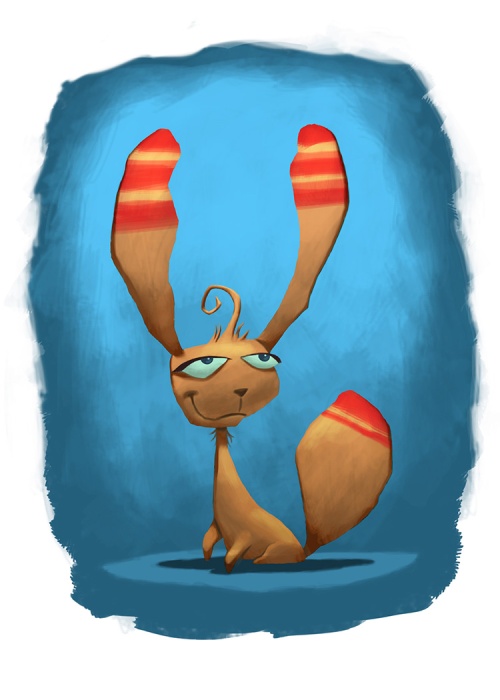
Mike thank you for sharing your talent, expertise, process, and journey with us. Please make sure you keep in touch and let us know about all your future successes. We’d love to hear about them.
You can find Mike at: www.mikecressy.com or on facebook: www.facebook.com/mike.cressy or his blog: www.mikecressy.blogspot.com
If you have a minute I would love if you would leave Mike a comment. I am sure he would, too. Thanks!
Talk tomorrow,
Kathy
Filed under:
Advice,
Illustrator's Saturday,
Interview,
Process,
Tips Tagged:
Amazon Gaming Studio,
Animator,
Children's Book Illustrator,
Graphic Designer,
Mike Cressy 

View Next 25 Posts
![]() But again, quality over quantity…so if you have to start slow that’s what you need to do!
But again, quality over quantity…so if you have to start slow that’s what you need to do!![]()
![]()











 Denise Clemmensen has been an artist from the moment she tore open her first box of crayons. In fact she became a drawing maniac. She drew on everything. Her parents finally bought her a little table where her coloring passion could be unleashed a little less destructively. Being a very shy child during her school years, she kept her passion for art quite. Though, one time in fifth grade, while helping out on the class history mural, her fifth-grade teacher noticed she could draw. For the rest of the week her teacher asked her to work on the mural while the rest of the class studied math.
Denise Clemmensen has been an artist from the moment she tore open her first box of crayons. In fact she became a drawing maniac. She drew on everything. Her parents finally bought her a little table where her coloring passion could be unleashed a little less destructively. Being a very shy child during her school years, she kept her passion for art quite. Though, one time in fifth grade, while helping out on the class history mural, her fifth-grade teacher noticed she could draw. For the rest of the week her teacher asked her to work on the mural while the rest of the class studied math.
















 When did you do your the first illustration for children?
When did you do your the first illustration for children?














 What is your favorite medium to use?
What is your favorite medium to use?
















 Thank you Denise for sharing your illustrations, journey, and process with us this week. We look forward to following your career, so please let us know about your new books and all of your future successes.
Thank you Denise for sharing your illustrations, journey, and process with us this week. We look forward to following your career, so please let us know about your new books and all of your future successes.




 Eric Freeberg discovered the Tolkein art of the Brothers Hildebrandt in high school. Their influences were N.C. Wyeth and Howard Pyle, who are enduring influences. The illustrators of the Golden Age of American Illustration continue to resonate with him after decades of studying painting and making pictures as a professional.
Eric Freeberg discovered the Tolkein art of the Brothers Hildebrandt in high school. Their influences were N.C. Wyeth and Howard Pyle, who are enduring influences. The illustrators of the Golden Age of American Illustration continue to resonate with him after decades of studying painting and making pictures as a professional.







 When did you first know you wanted to make a living doing art?
When did you first know you wanted to make a living doing art?


































 Tip 1:
Tip 1:

















































 Tracking Submissions
Tracking Submissions 






















































































 My Little Magic Box by Debbie Dadey
My Little Magic Box by Debbie Dadey 4. Award winning author stickers (Which I bought in a silly moment, but kids like stickers.)
4. Award winning author stickers (Which I bought in a silly moment, but kids like stickers.) 7. Protein bar (Let’s face it, sometimes school lunches are horrible.)
7. Protein bar (Let’s face it, sometimes school lunches are horrible.) I have an Author Visit Checklist that lists everything I could think of to help a school prepare for my visit.
I have an Author Visit Checklist that lists everything I could think of to help a school prepare for my visit. 

 What’s most impressive about Seinfeld’s career isn’t the awards, the earnings, or the special moments — it’s the remarkable consistency of it all. Show after show, year after year, he performs, creates, and entertains at an incredibly high standard. Jerry Seinfeld produces with a level of consistency that most of us wish we could bring to our daily work.
What’s most impressive about Seinfeld’s career isn’t the awards, the earnings, or the special moments — it’s the remarkable consistency of it all. Show after show, year after year, he performs, creates, and entertains at an incredibly high standard. Jerry Seinfeld produces with a level of consistency that most of us wish we could bring to our daily work. Lyn Stone has worked in a variety of jobs, including a Curator at the Tower of London. Being rather small she was the only member of staff who could climb into the display cabinets to clean Henry VIII’s Codpiece, whilst Japanese tourists happily took photographs! She can also boast accidentally shocking an Amerian tourist who mistook two flintlock dueling pistols for gun with real amo! She has also worked as a freelance model-maker for television, working on a variety of shows, for the BBC and ITV. As a model-maker she found herself working with puppets, actors as well TV crew. On one memorable occasion Lyn made a model so big, it had to be built in her garage. Much to the amusement of all her neighbours when a large lorry, bearing the slogan ‘British Broadcasting Corporation’ turned up to collect it and struggled up a very narrow lane!
Lyn Stone has worked in a variety of jobs, including a Curator at the Tower of London. Being rather small she was the only member of staff who could climb into the display cabinets to clean Henry VIII’s Codpiece, whilst Japanese tourists happily took photographs! She can also boast accidentally shocking an Amerian tourist who mistook two flintlock dueling pistols for gun with real amo! She has also worked as a freelance model-maker for television, working on a variety of shows, for the BBC and ITV. As a model-maker she found herself working with puppets, actors as well TV crew. On one memorable occasion Lyn made a model so big, it had to be built in her garage. Much to the amusement of all her neighbours when a large lorry, bearing the slogan ‘British Broadcasting Corporation’ turned up to collect it and struggled up a very narrow lane! 










 How did you decide to attend that school?
How did you decide to attend that school?

 What were you favorite classes?
What were you favorite classes?















































 Melanie Hope Greenberg has illustrated 16 trade published children’s picture books; six of them she wrote. Greenberg was recently an artist in residence for the Eric Carle Museum of Picture Book Art’s National Endowment for the Arts grant. Her original picture book illustrations were exhibited in a solo show and as a part of the “Drawn in Brooklyn” group exhibition at Brooklyn Central Library-Grand Army Plaza.
Melanie Hope Greenberg has illustrated 16 trade published children’s picture books; six of them she wrote. Greenberg was recently an artist in residence for the Eric Carle Museum of Picture Book Art’s National Endowment for the Arts grant. Her original picture book illustrations were exhibited in a solo show and as a part of the “Drawn in Brooklyn” group exhibition at Brooklyn Central Library-Grand Army Plaza. 















































 M
M















 n
n
 n
n
 n
n
















































Kathy & Denise,
I enjoyed reading this interview very much and identify so much with Denise’s story. I returned to drawing around the time computers were introduced into the graphics industry.
Anyway, I love the pen & ink combination with colored pencils. The old lady with bat buttons, the red-goggled boy with the blue cape and the girl leading her sheep on wheels to school are my favorites.
Good luck to you Denise and I look forward to seeing your next book!
I love Denise’s work – it’s so colorful and lively and filled with imagination and style!
Love Denise’s art. The snails on the umbrella and the cat on the chimney are my faves, but every piece was inspirational…making me wonder about the stories behind them.